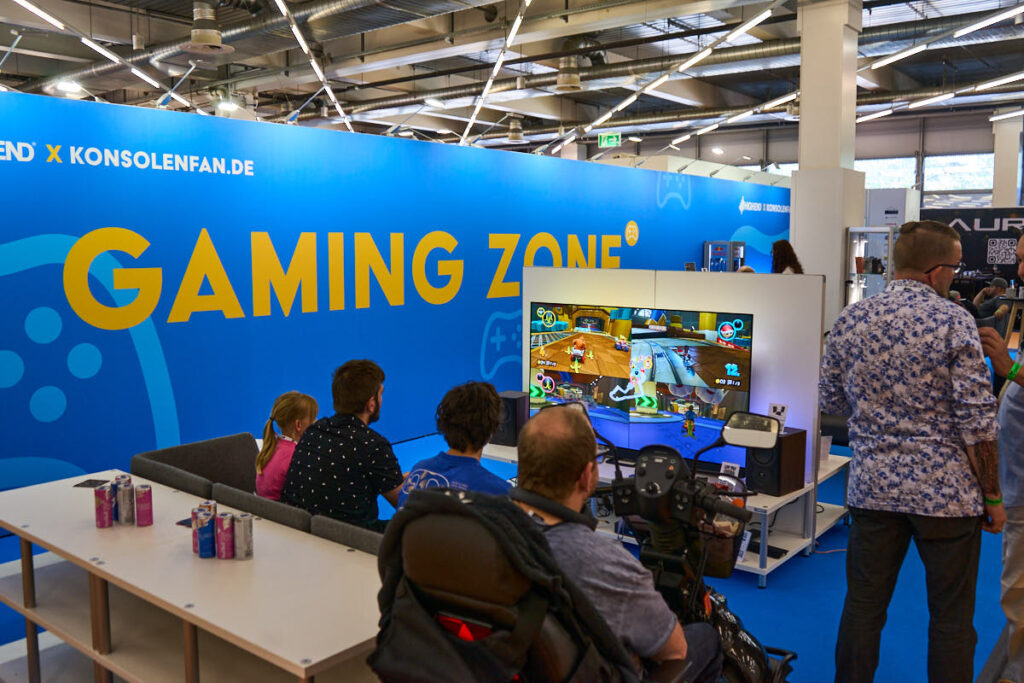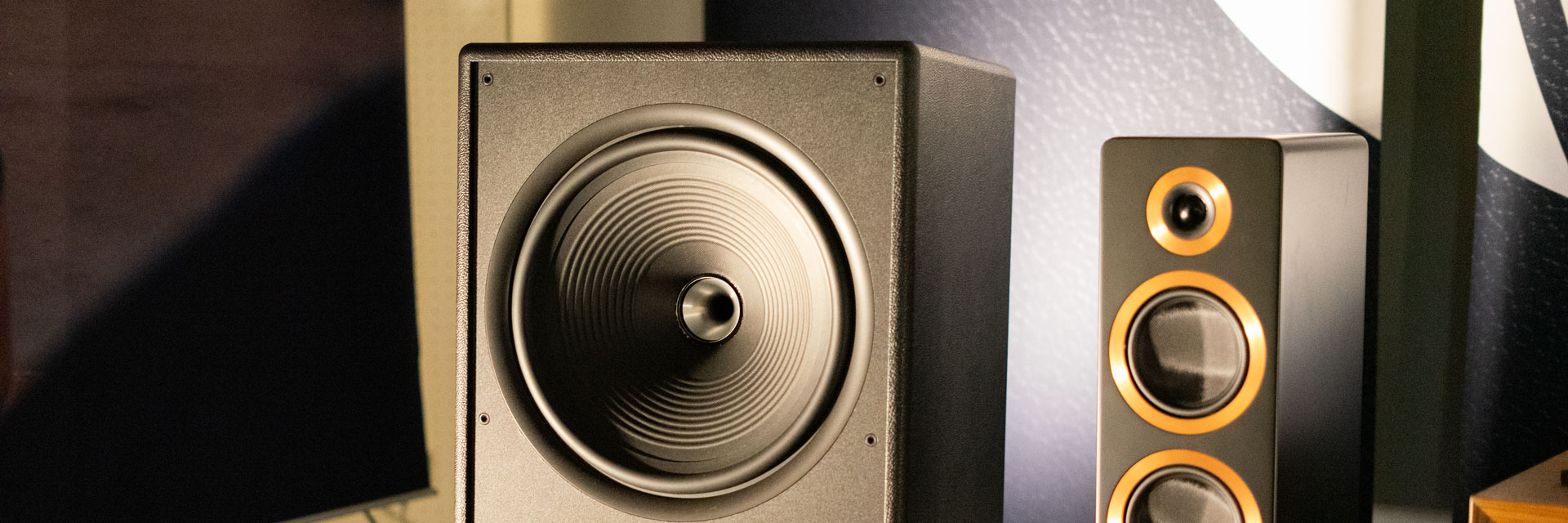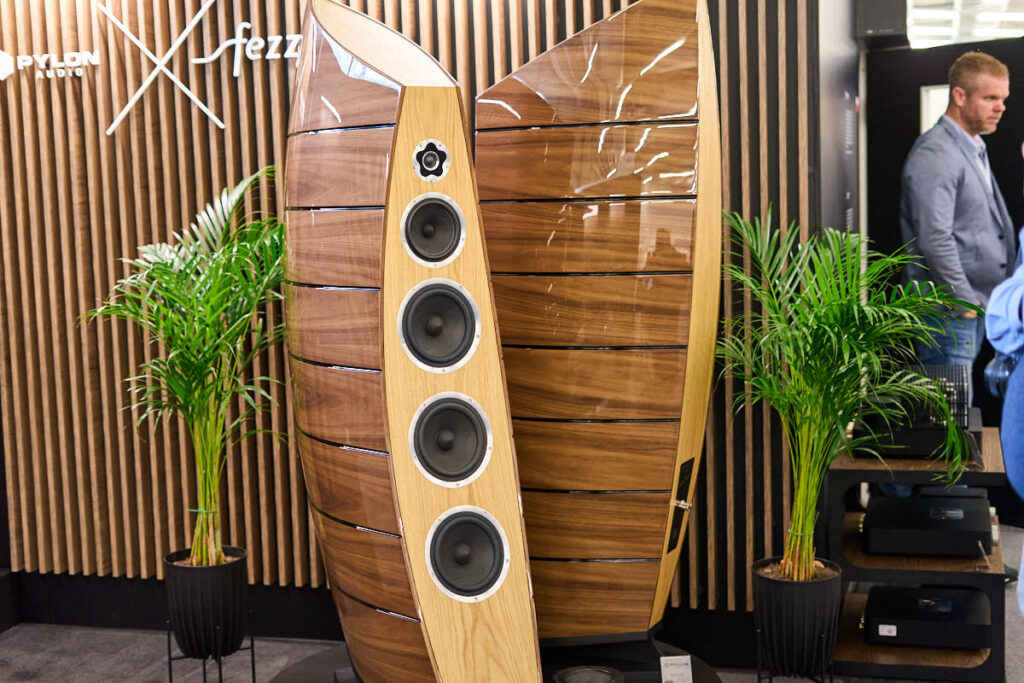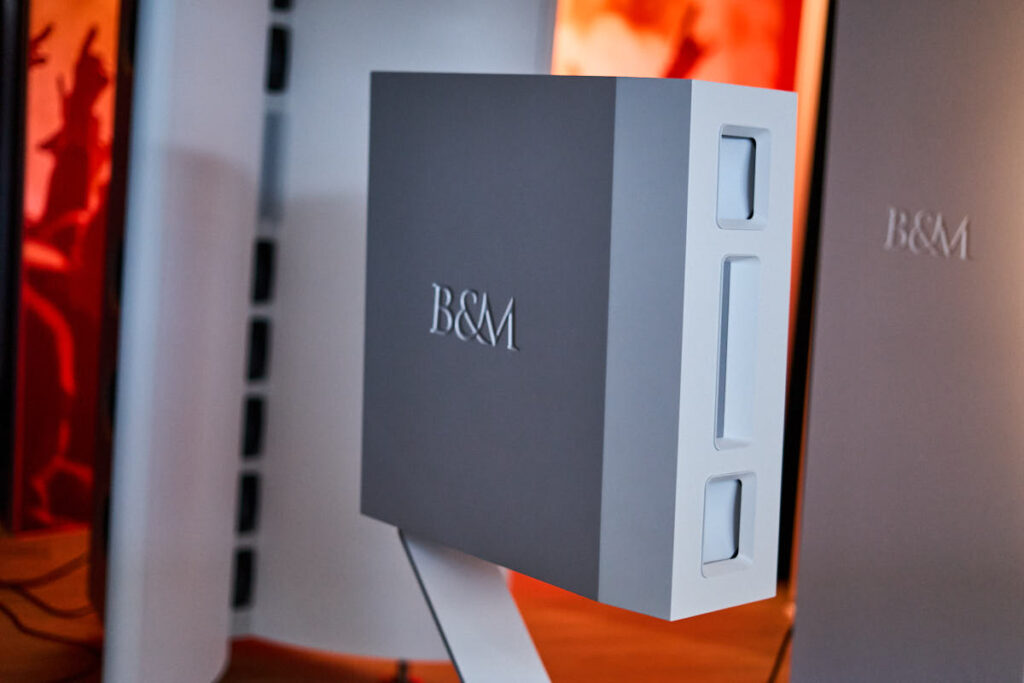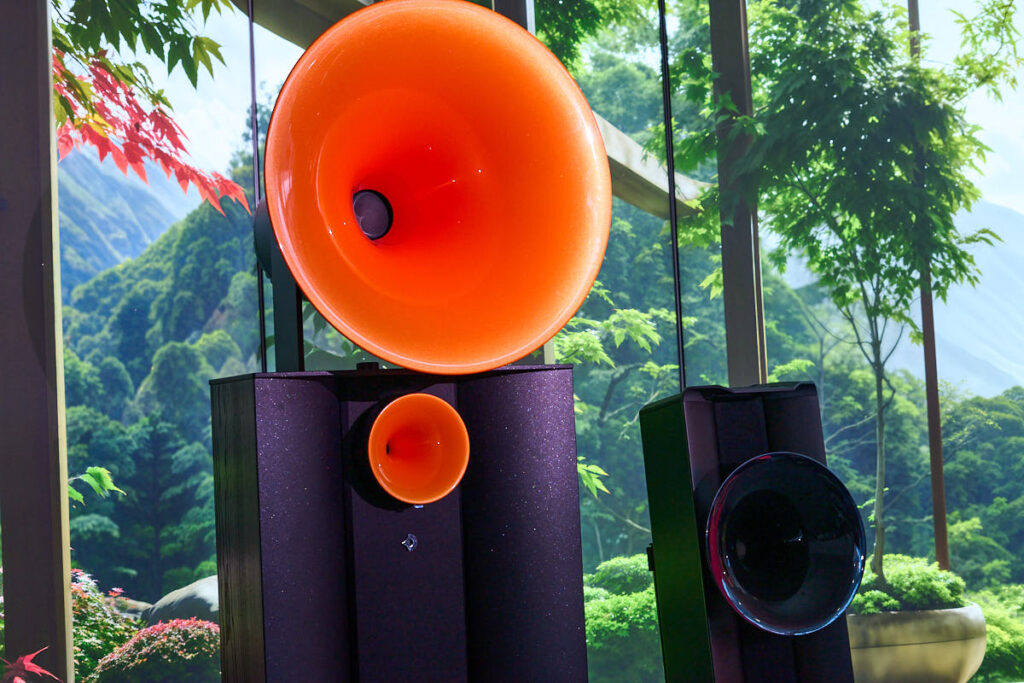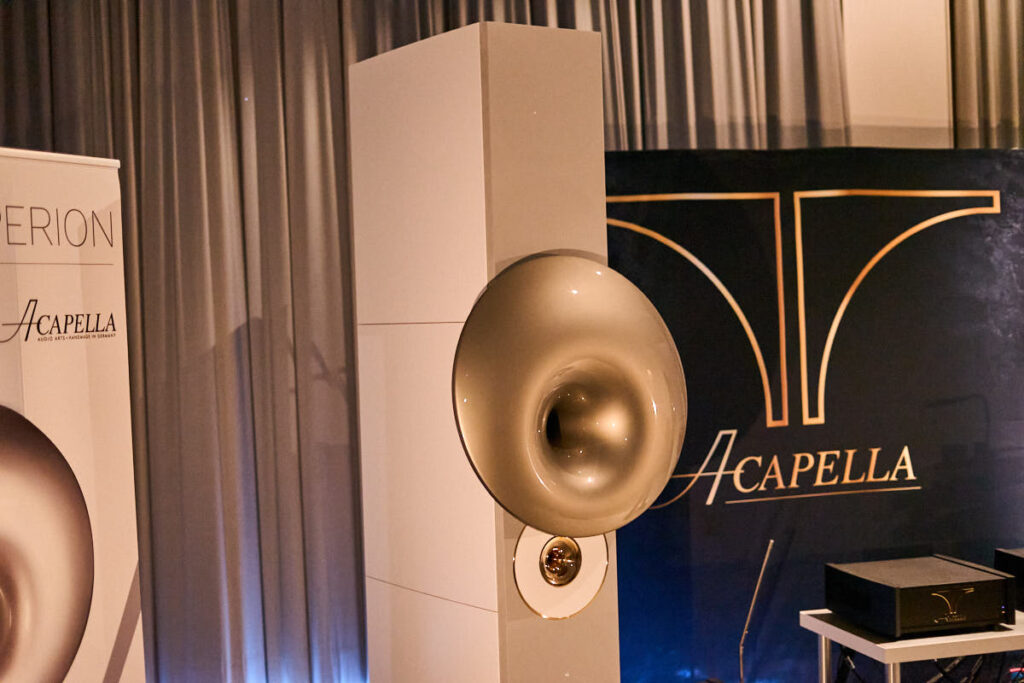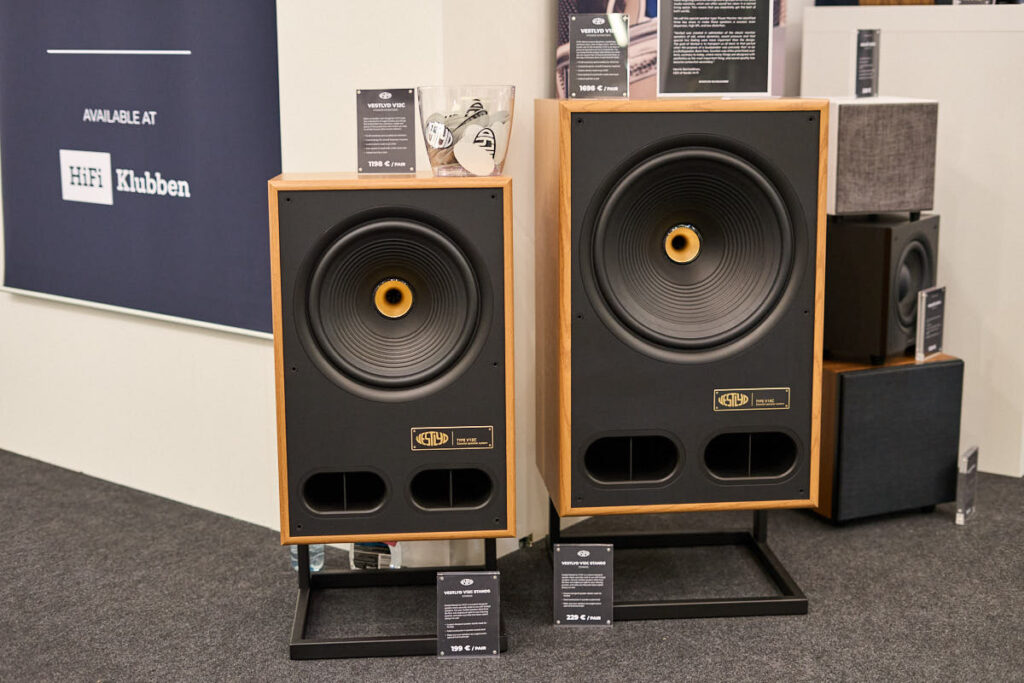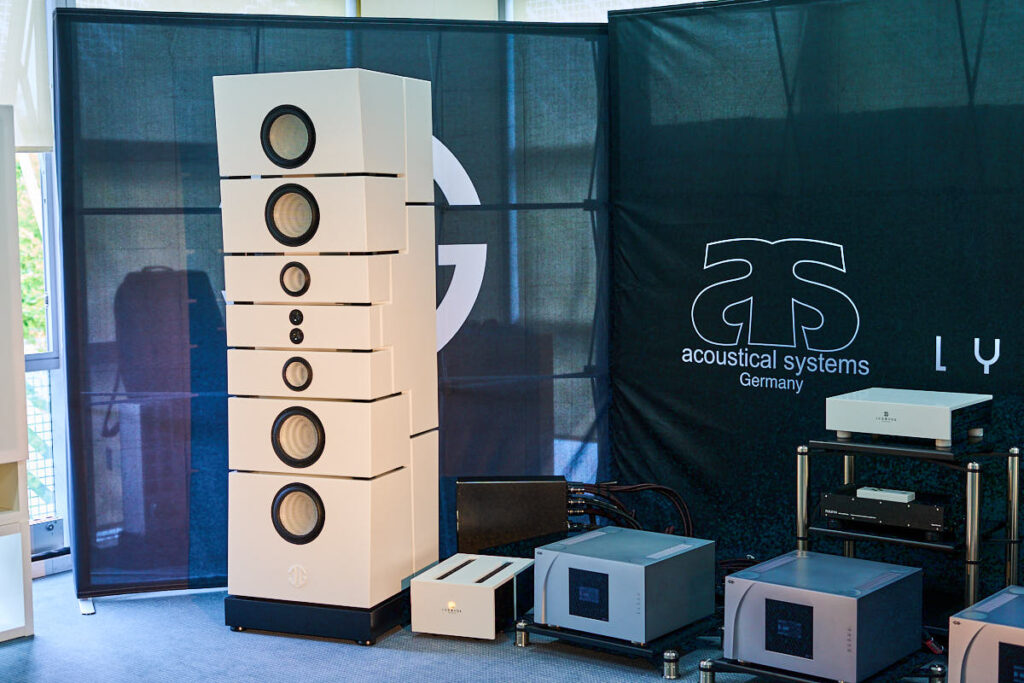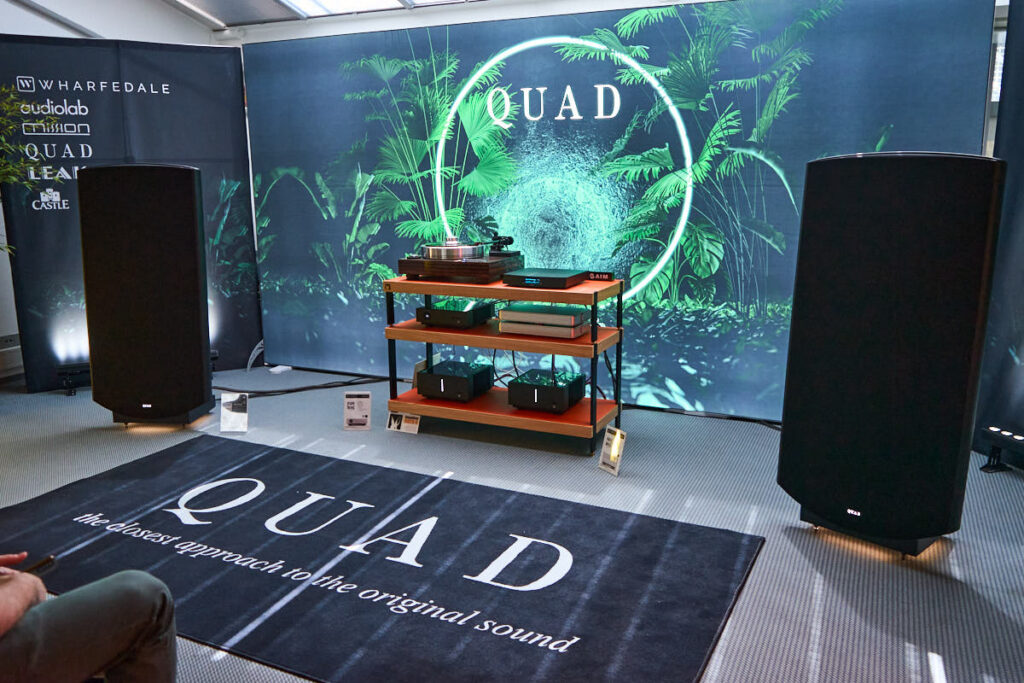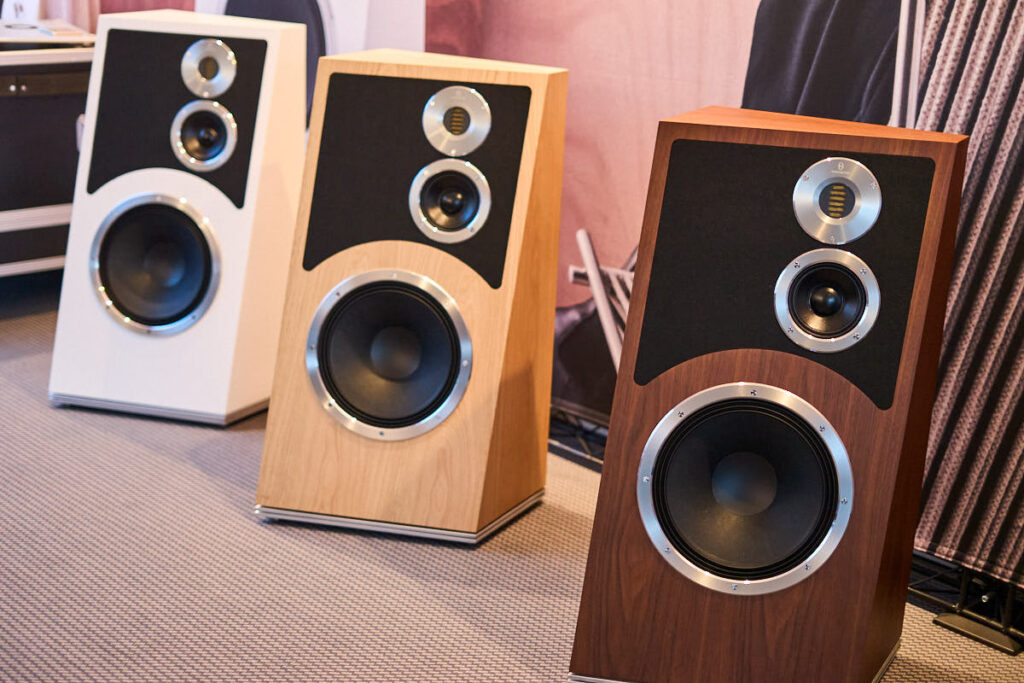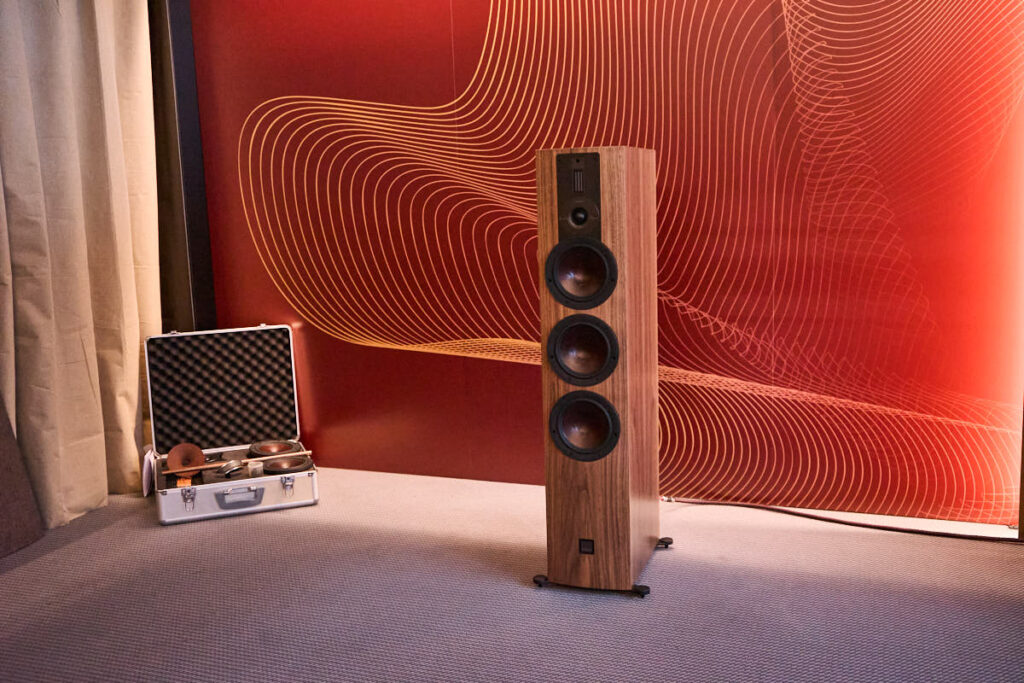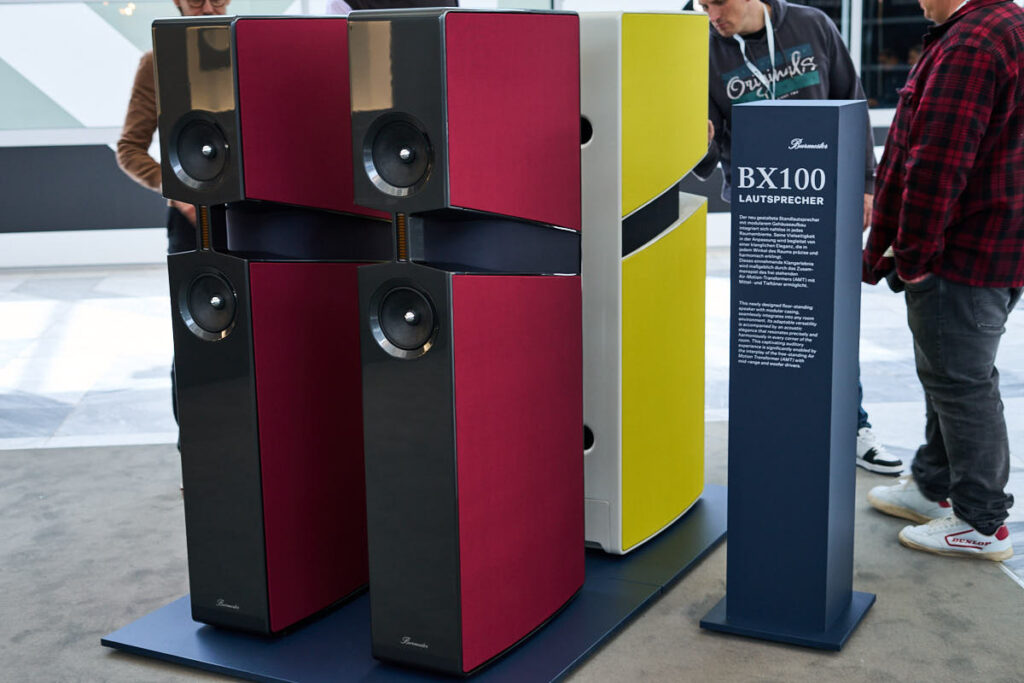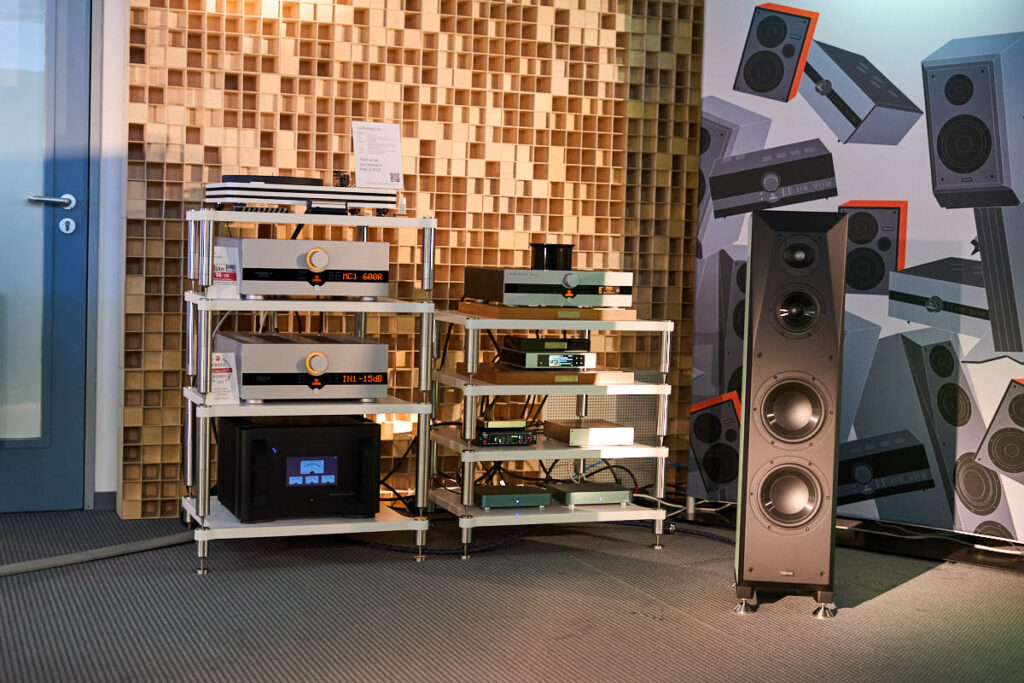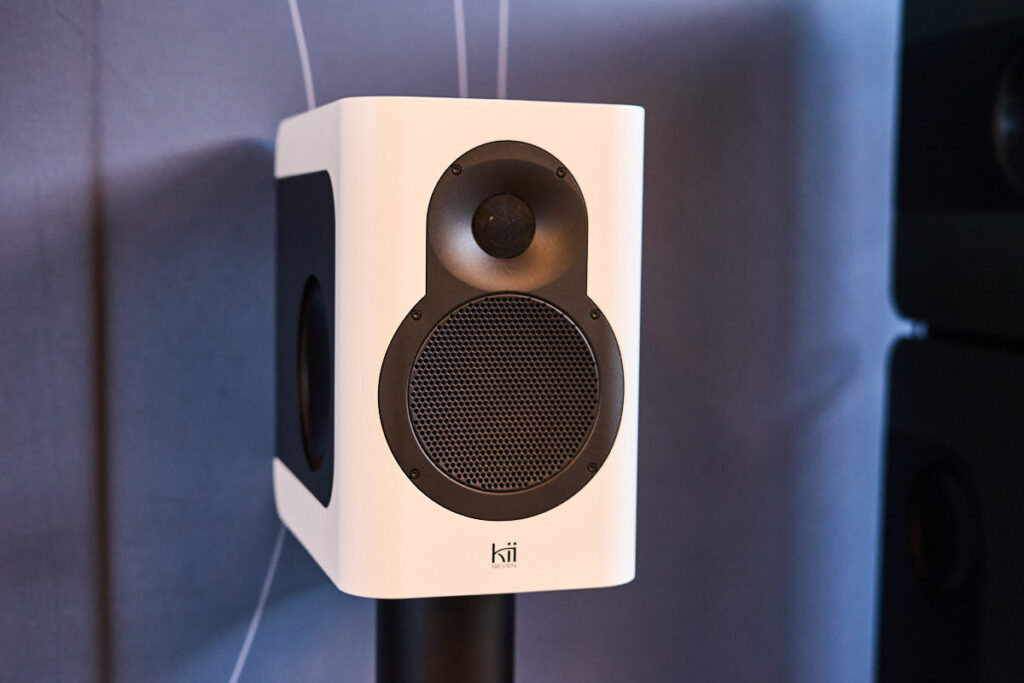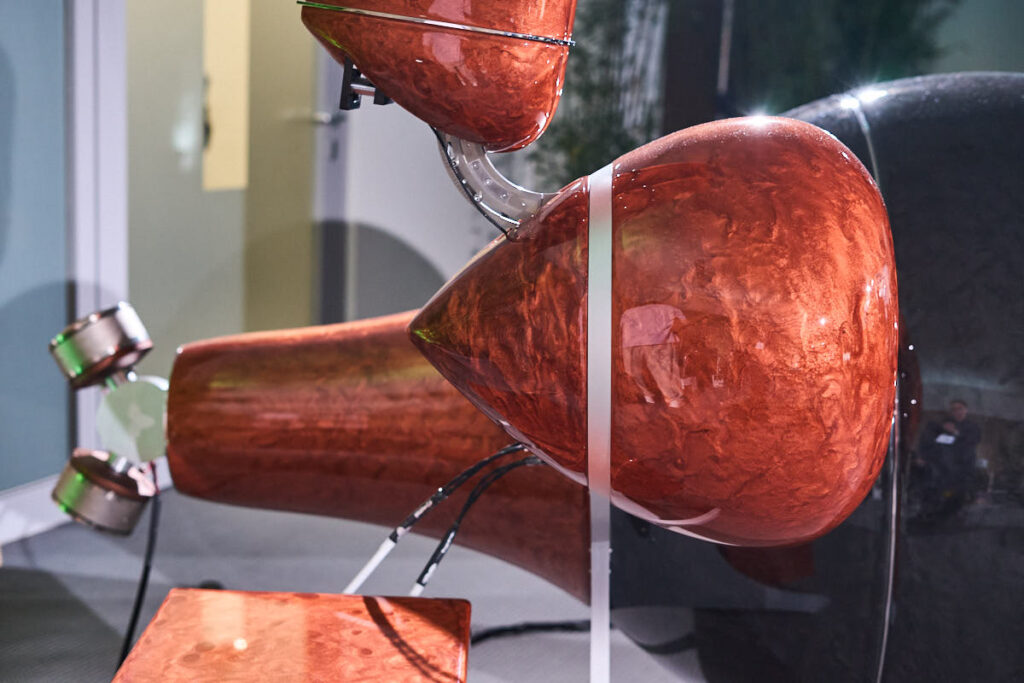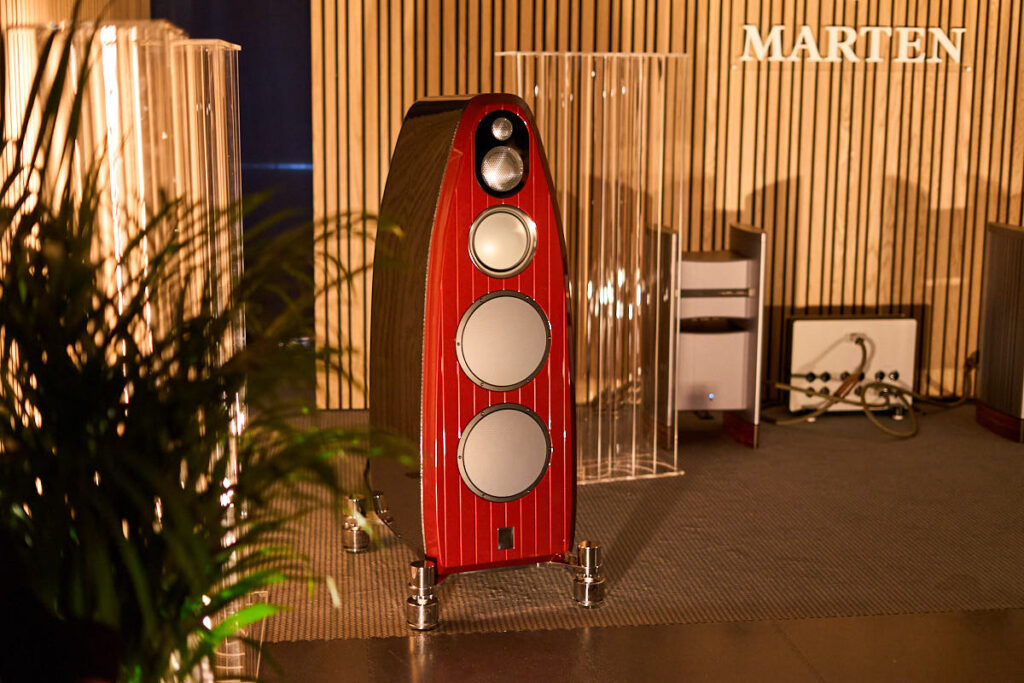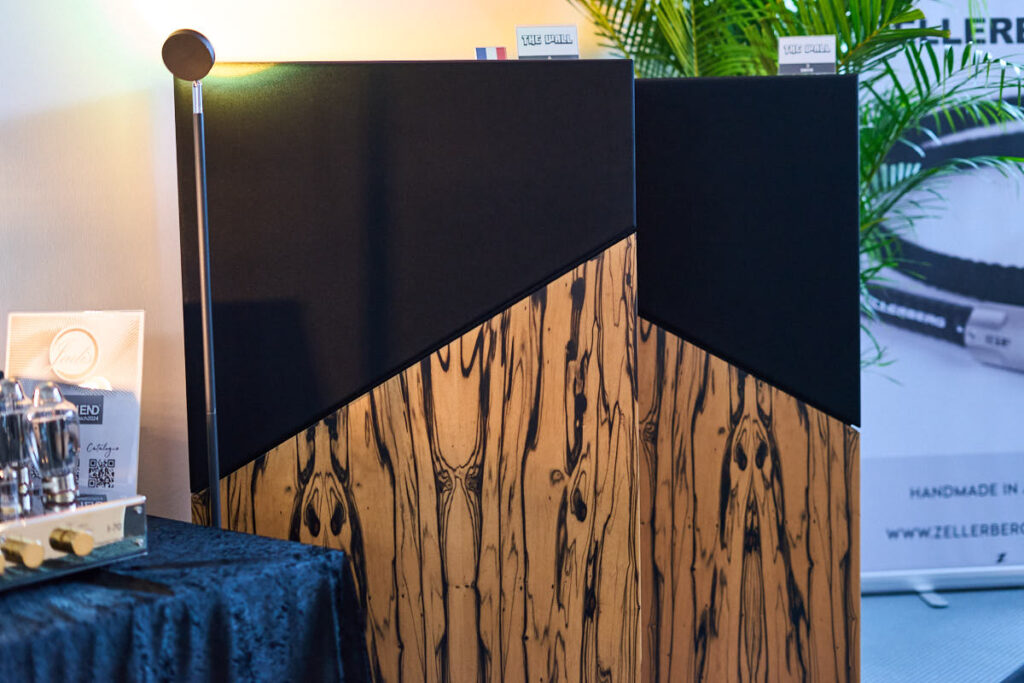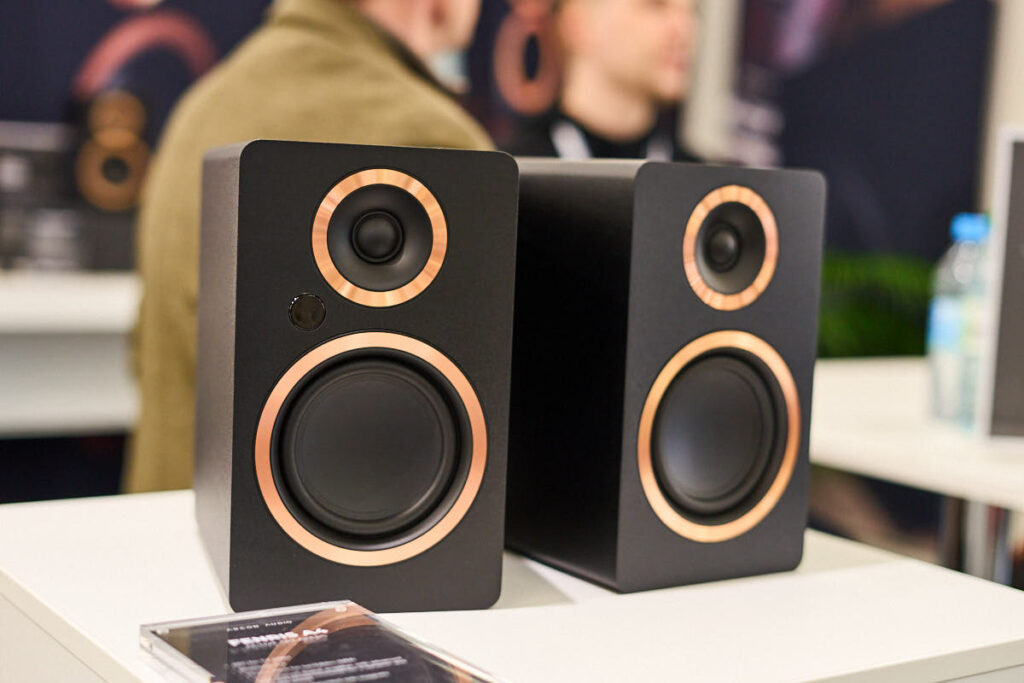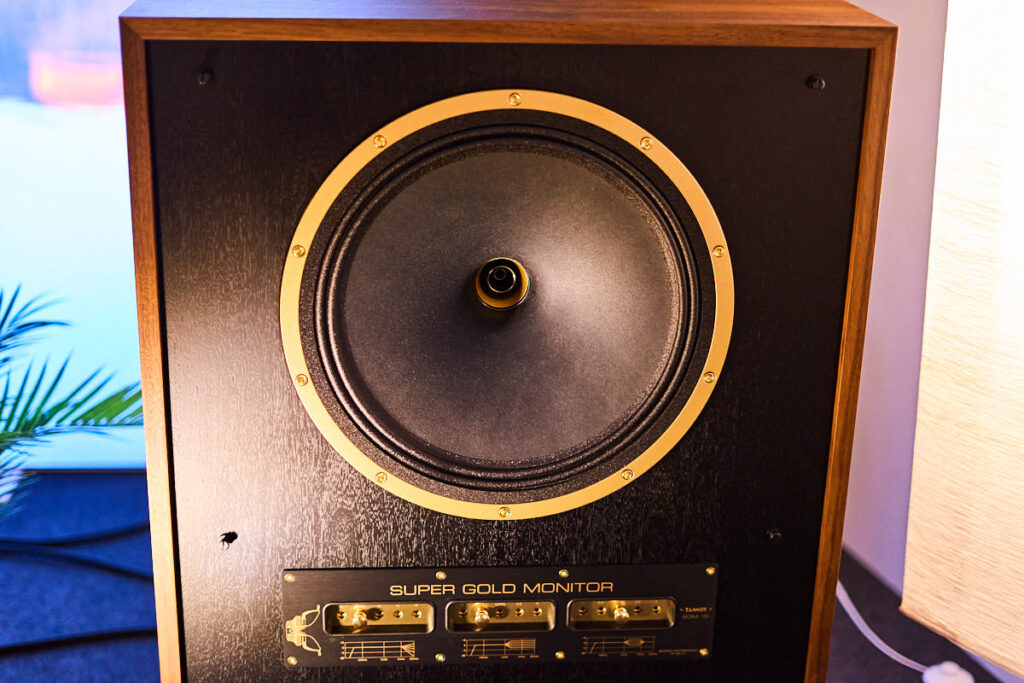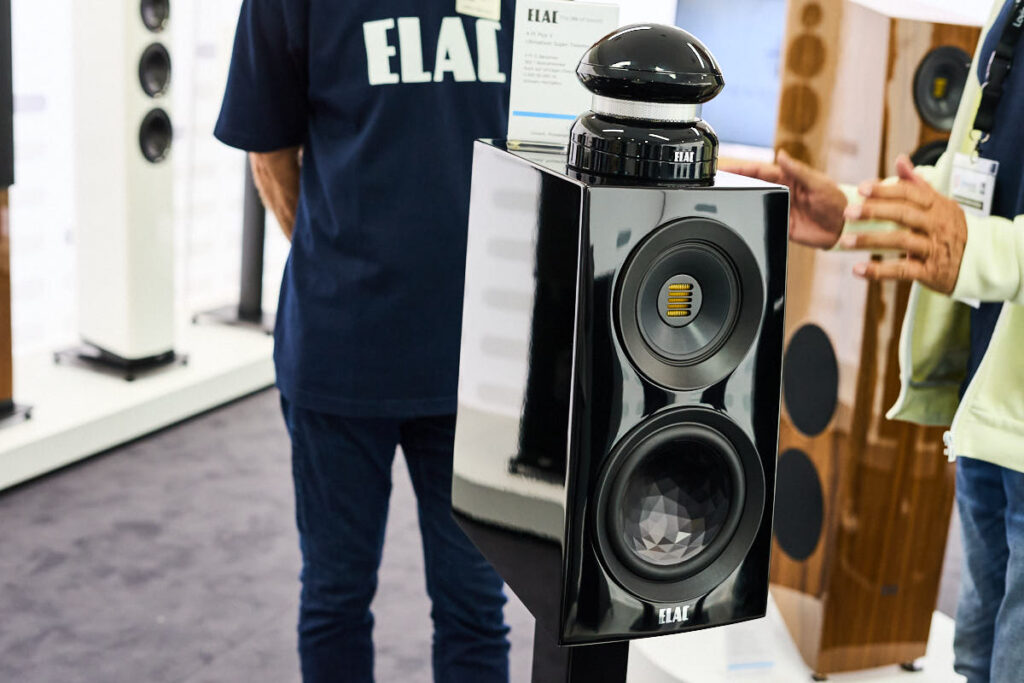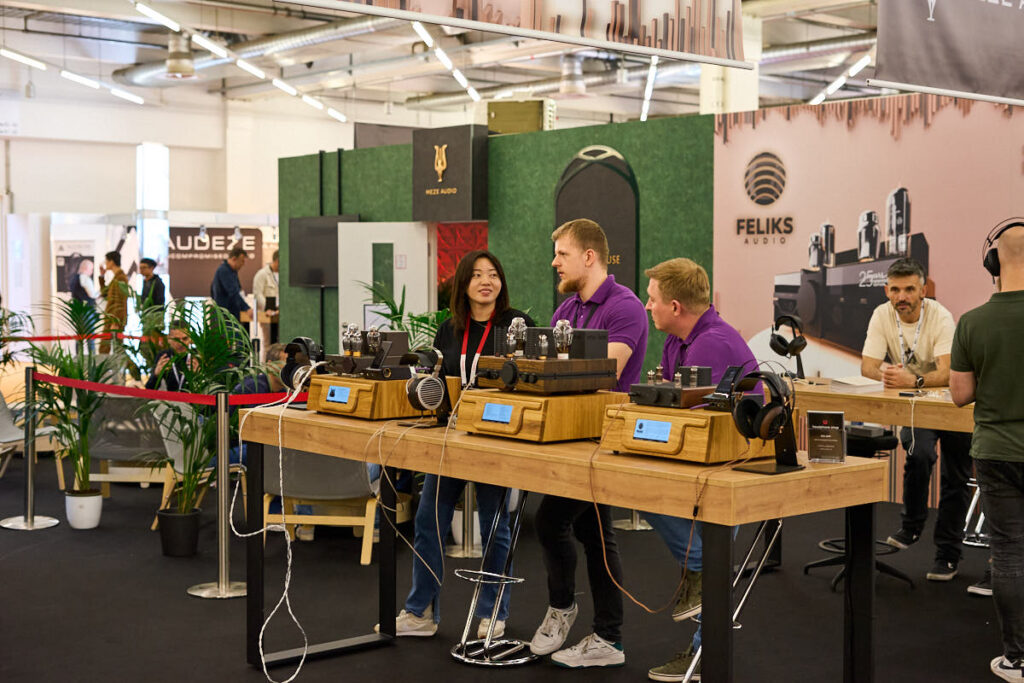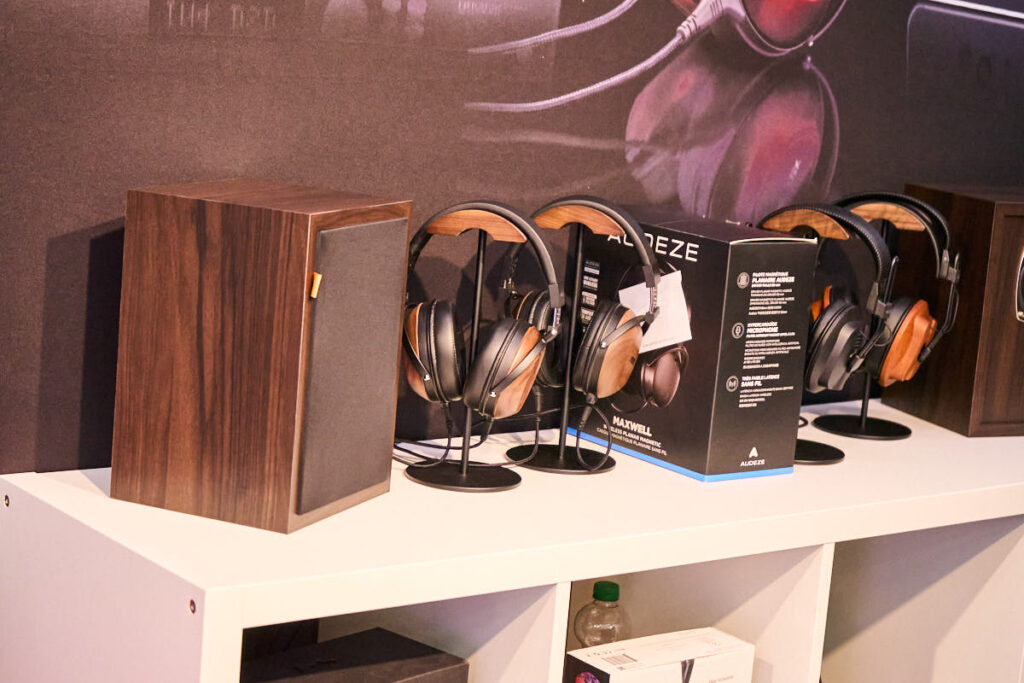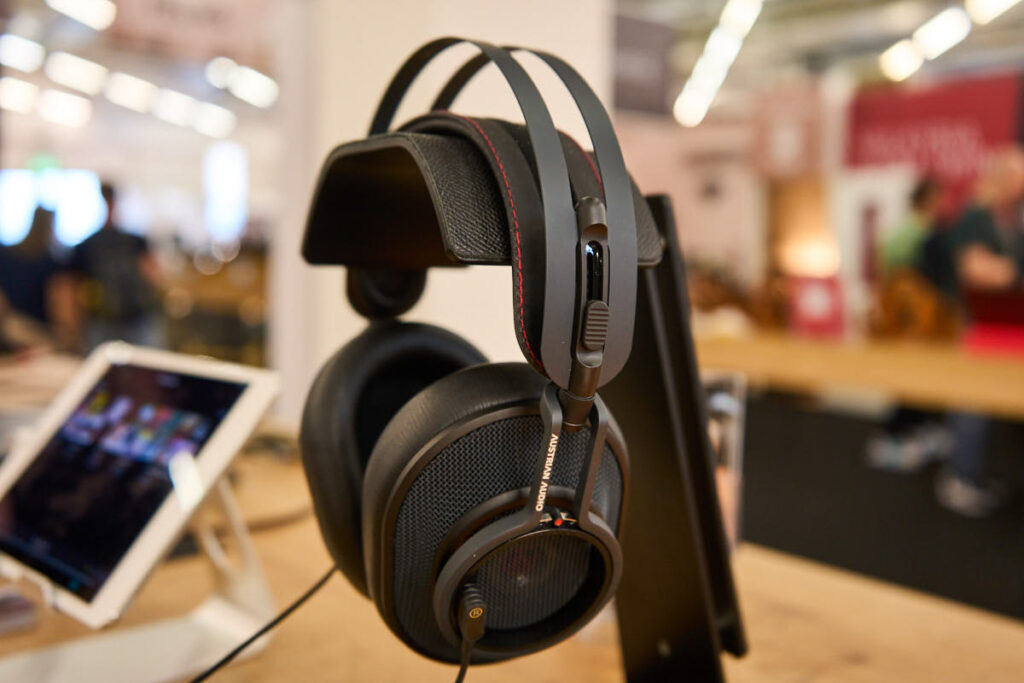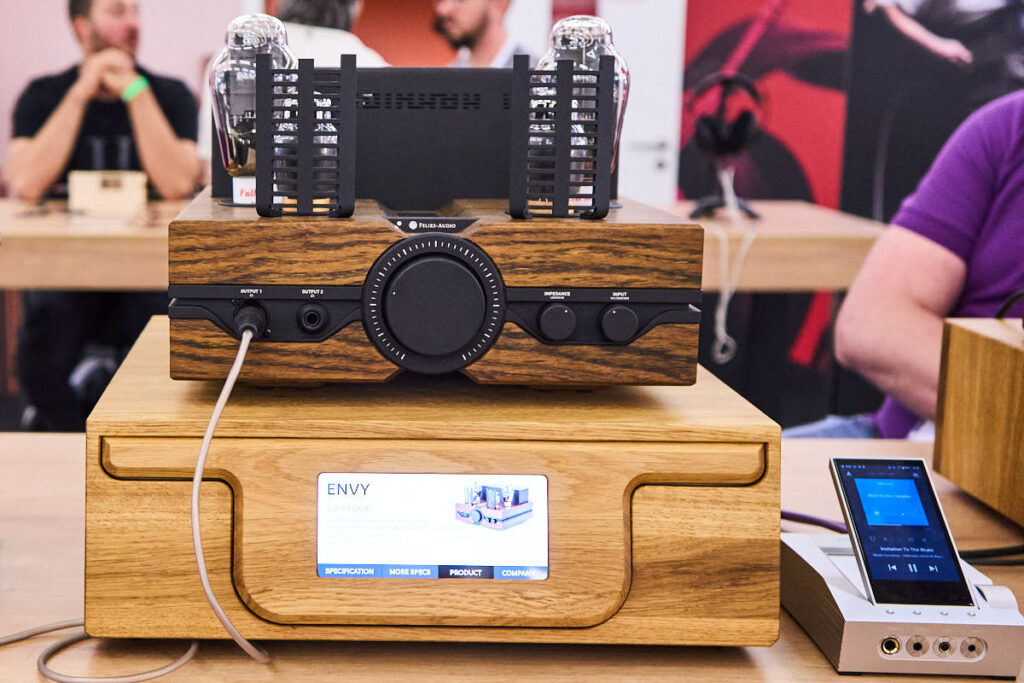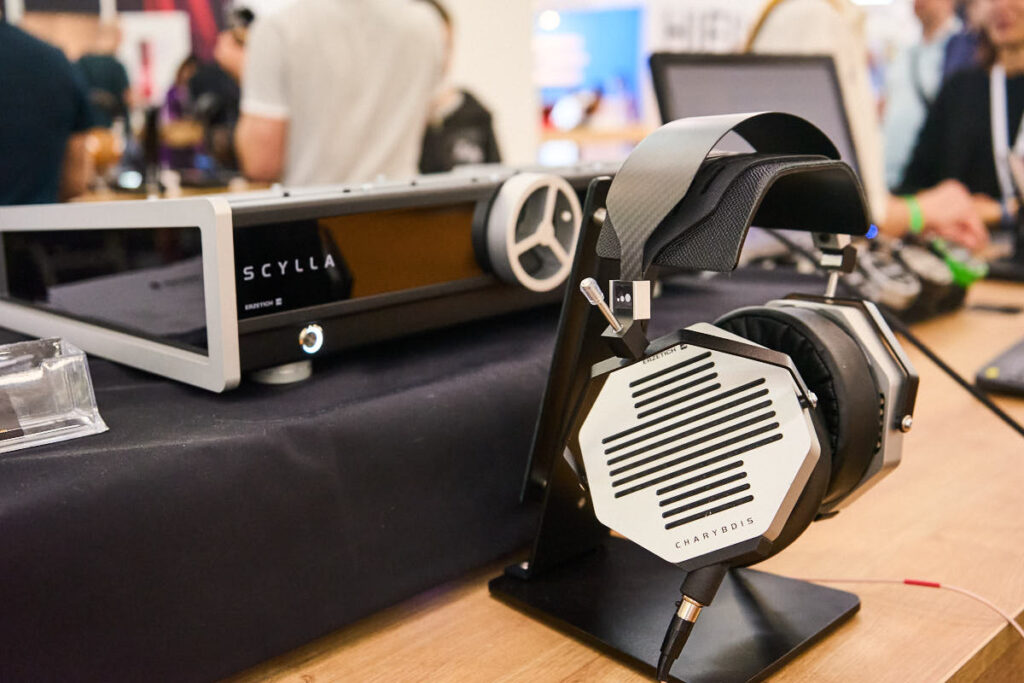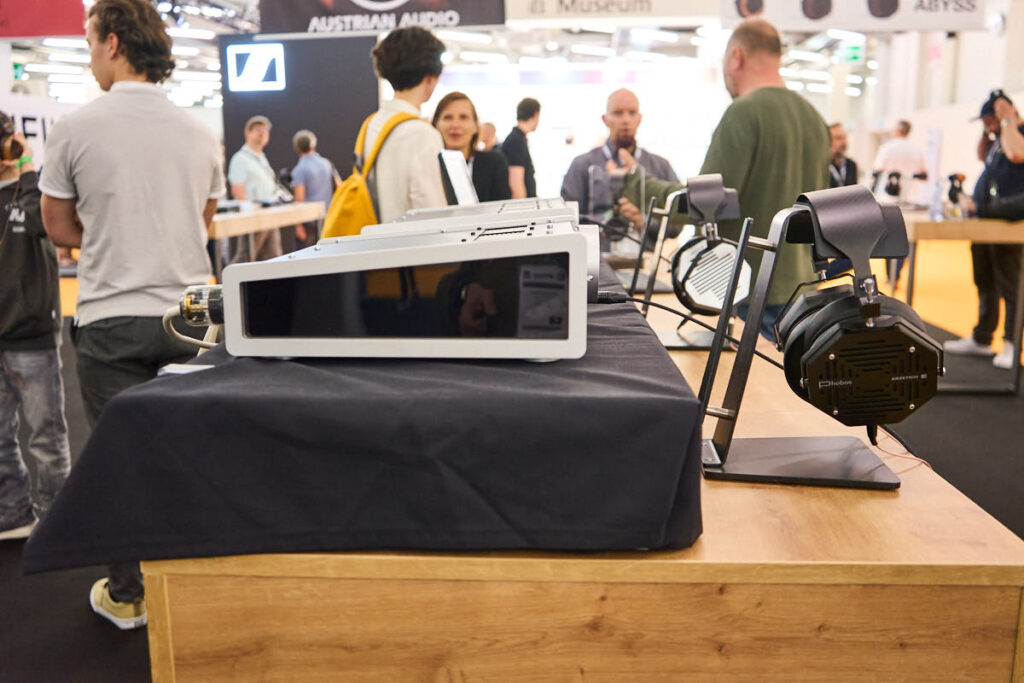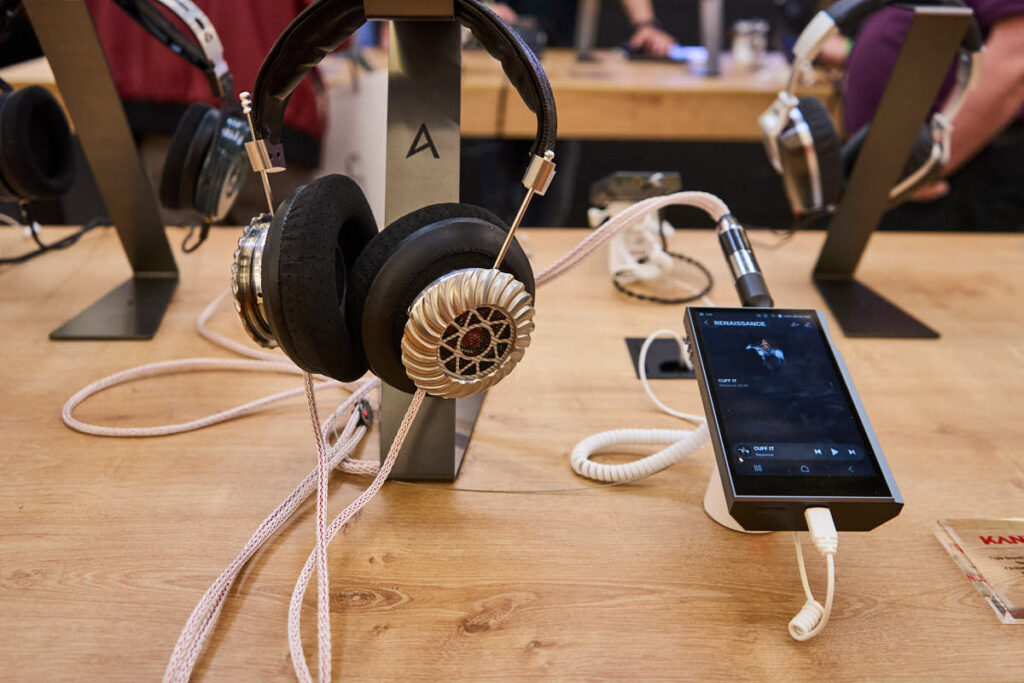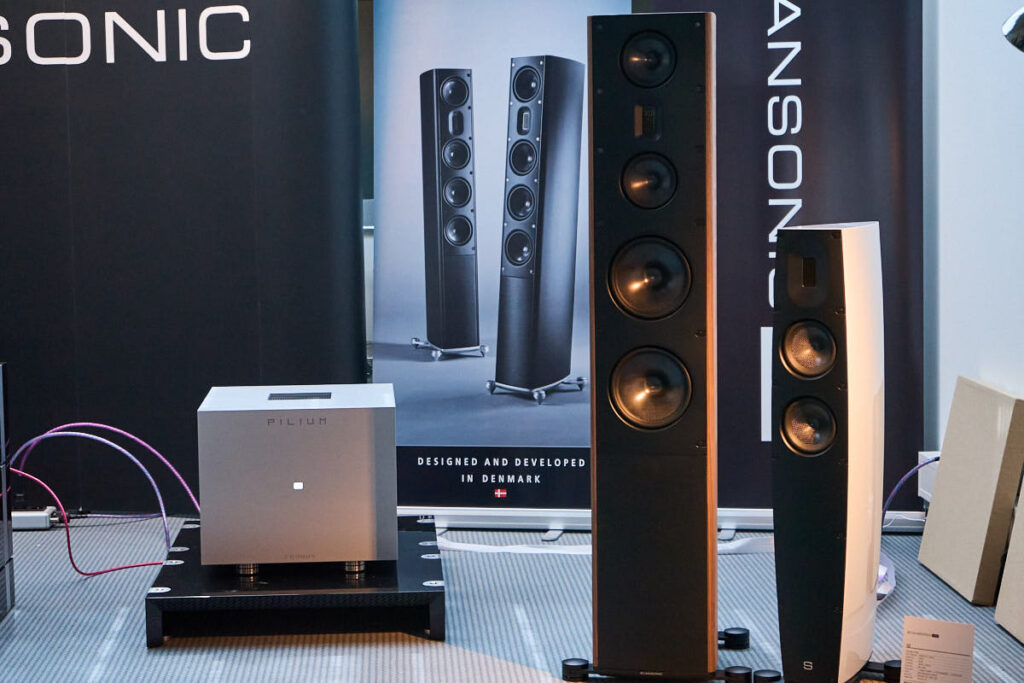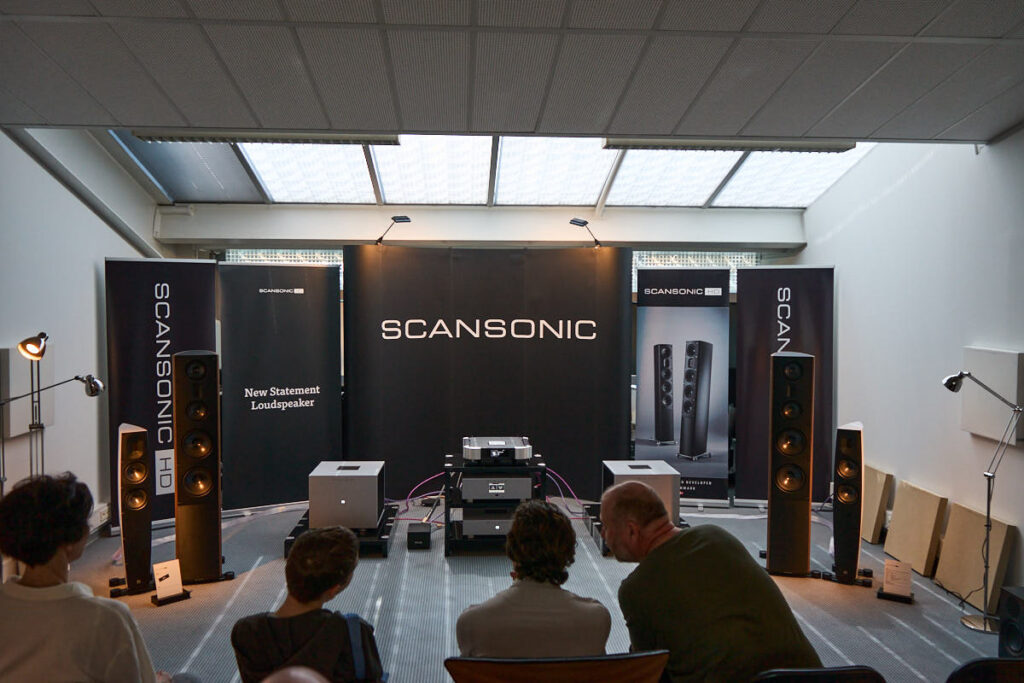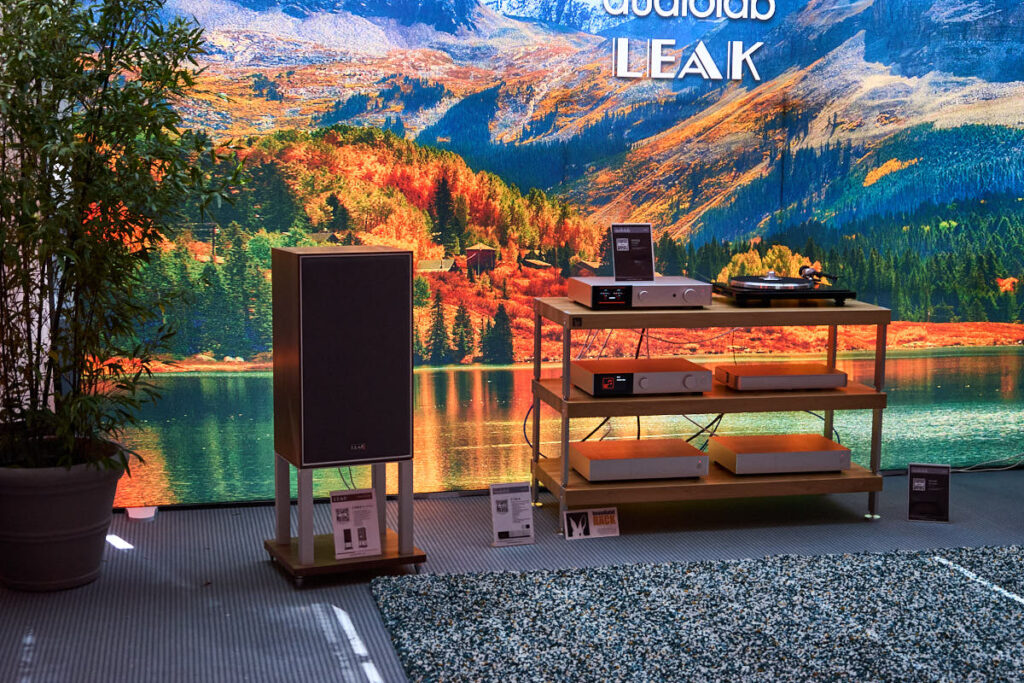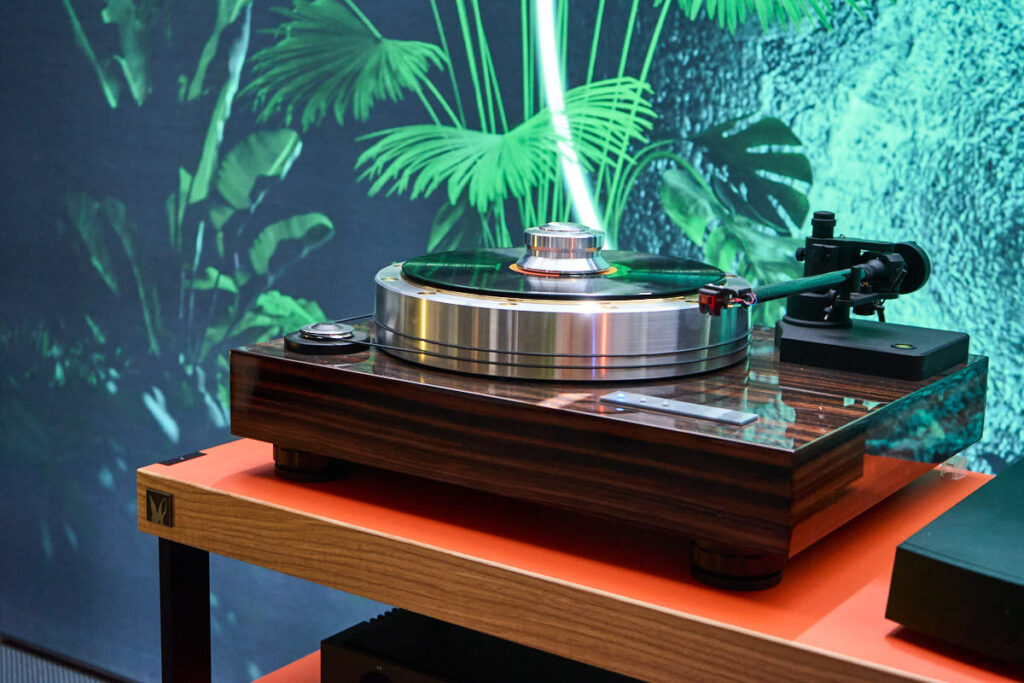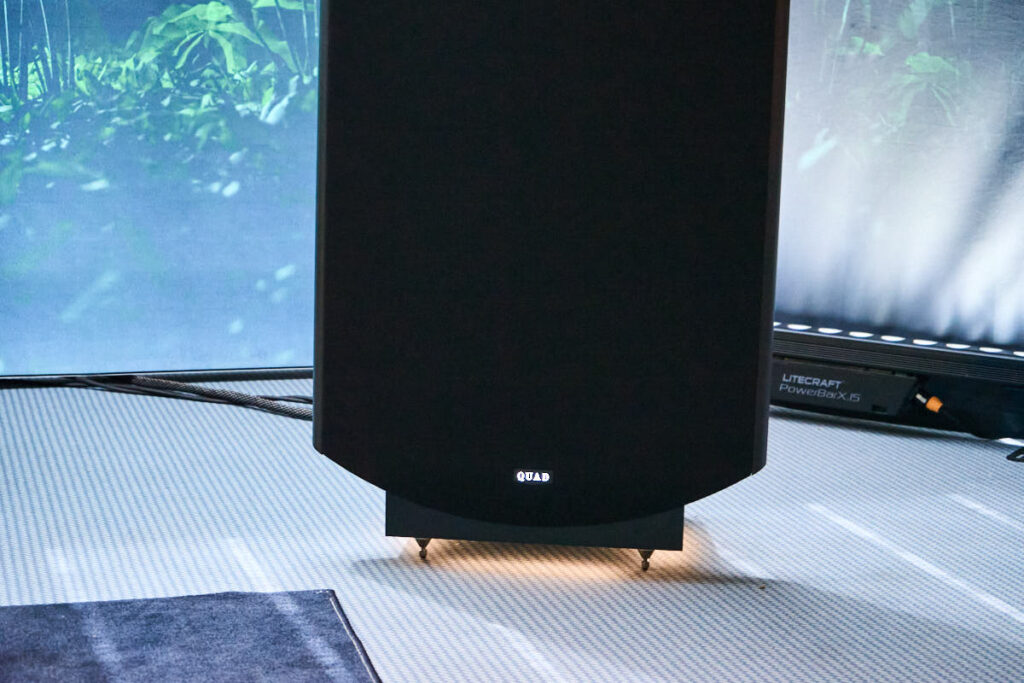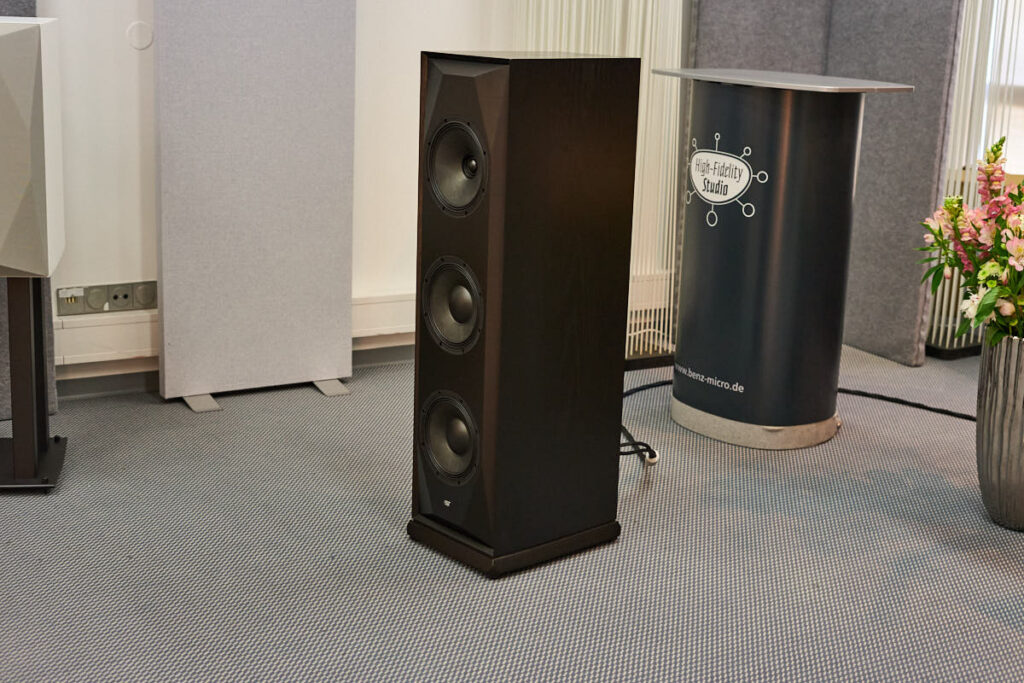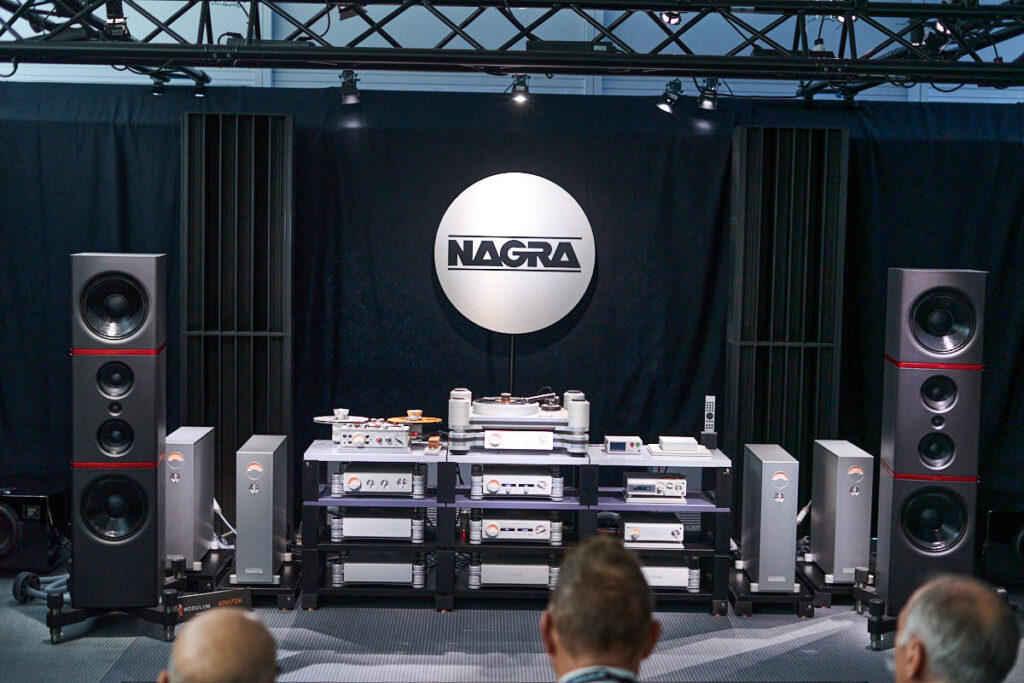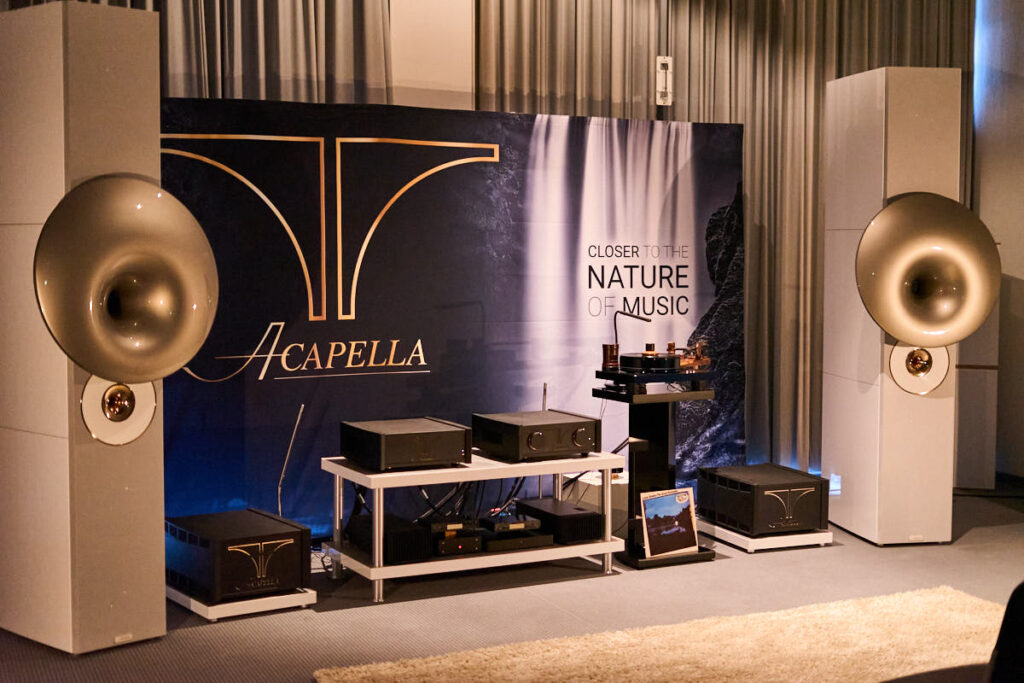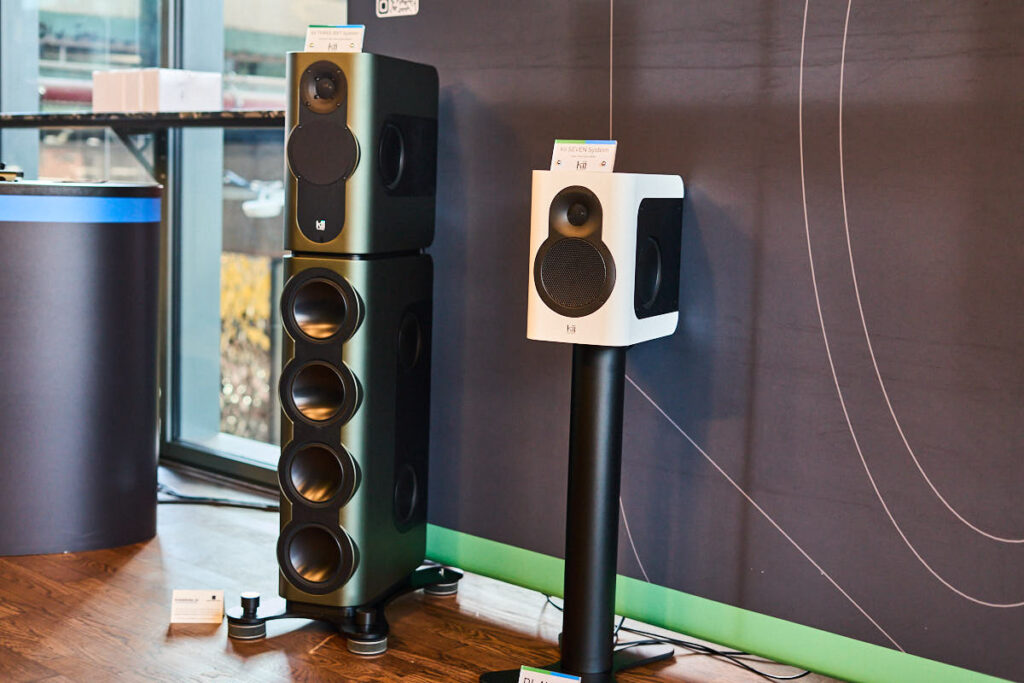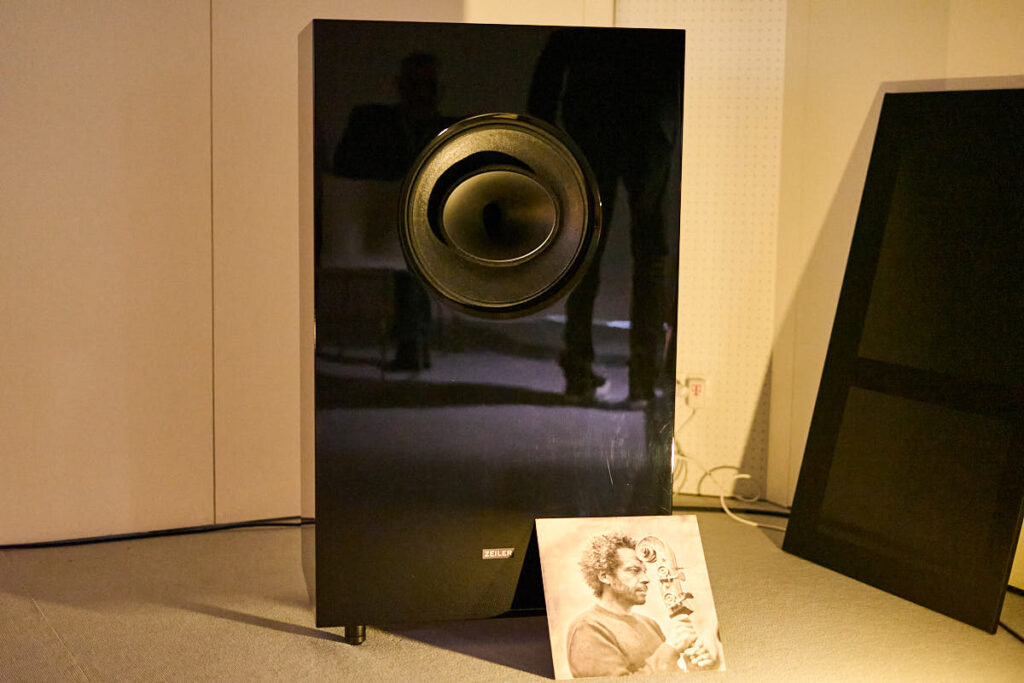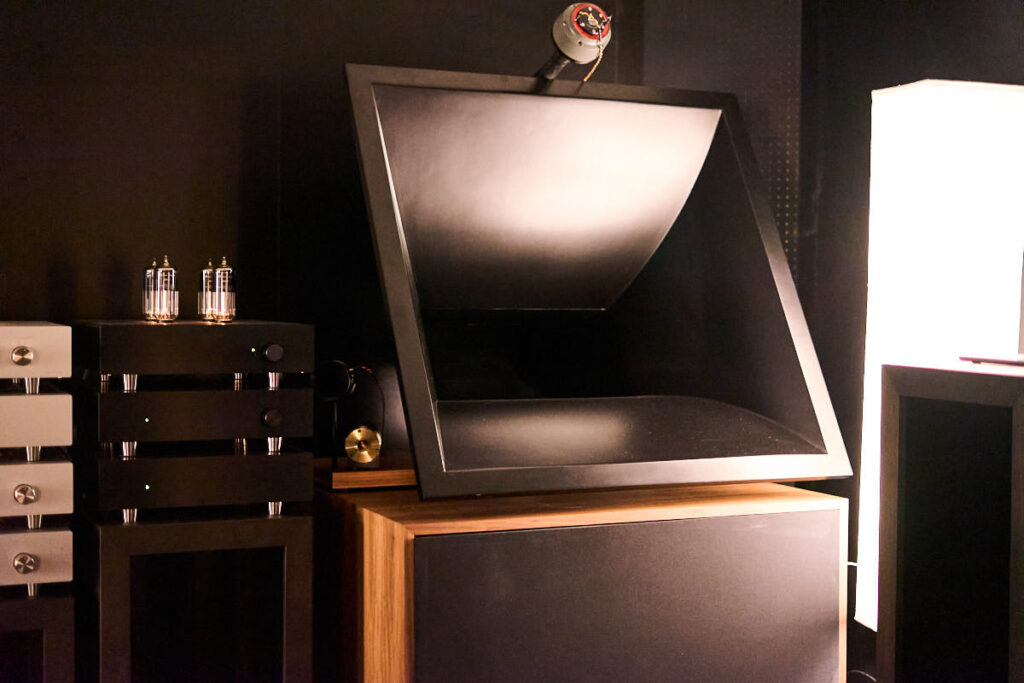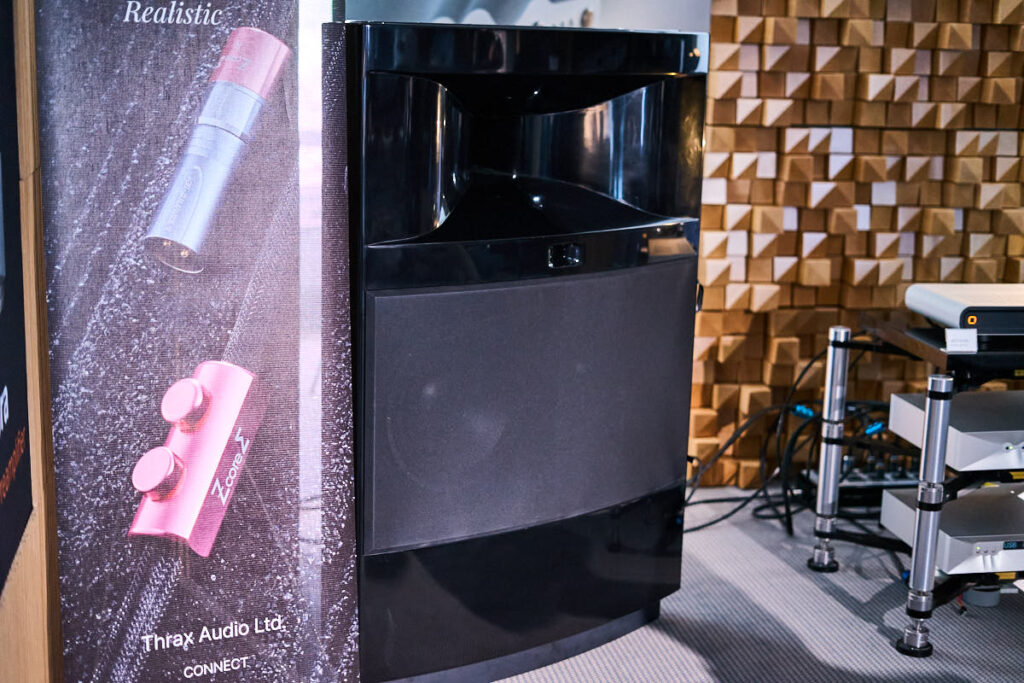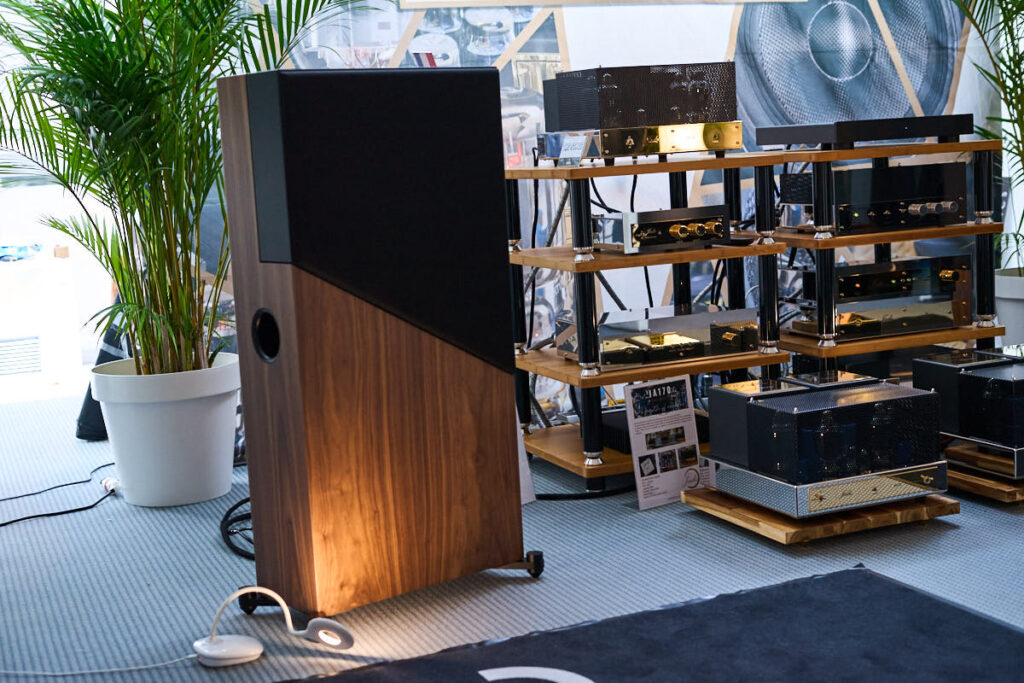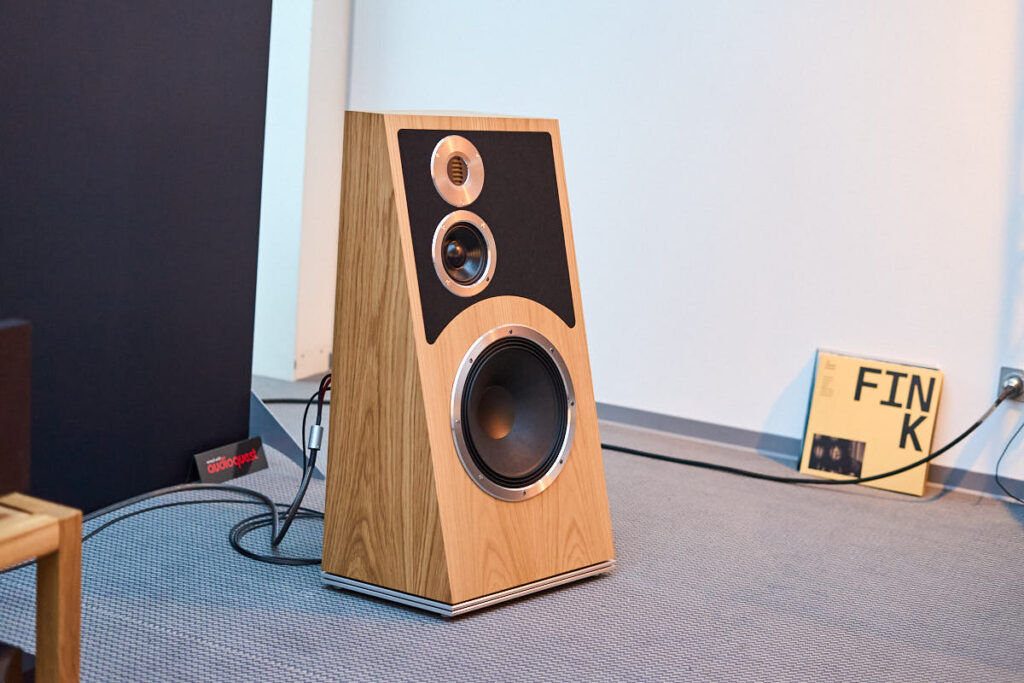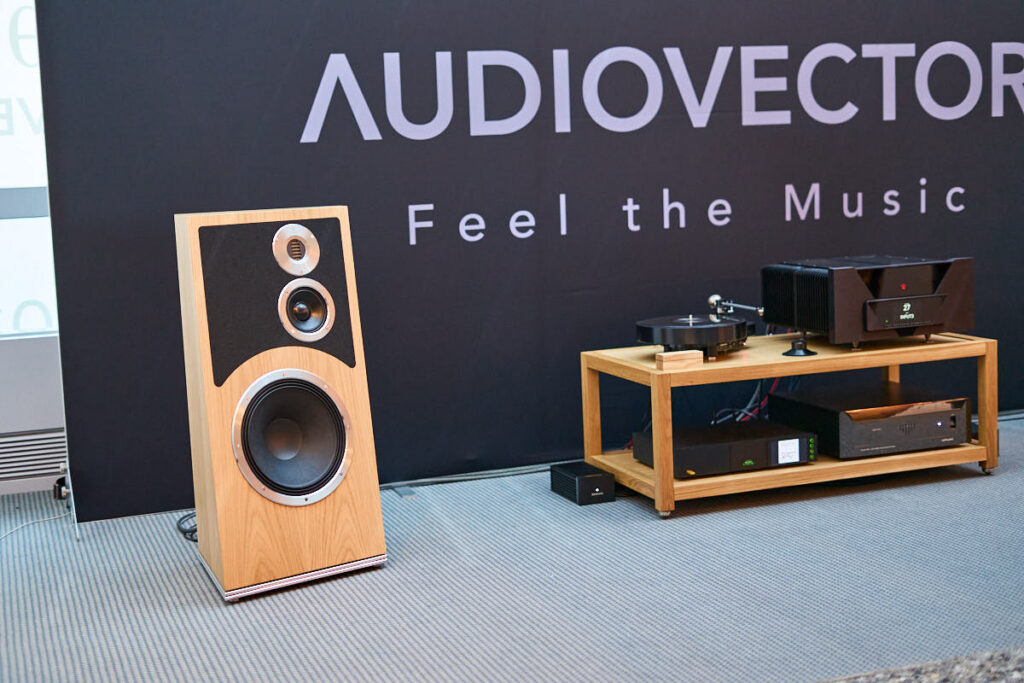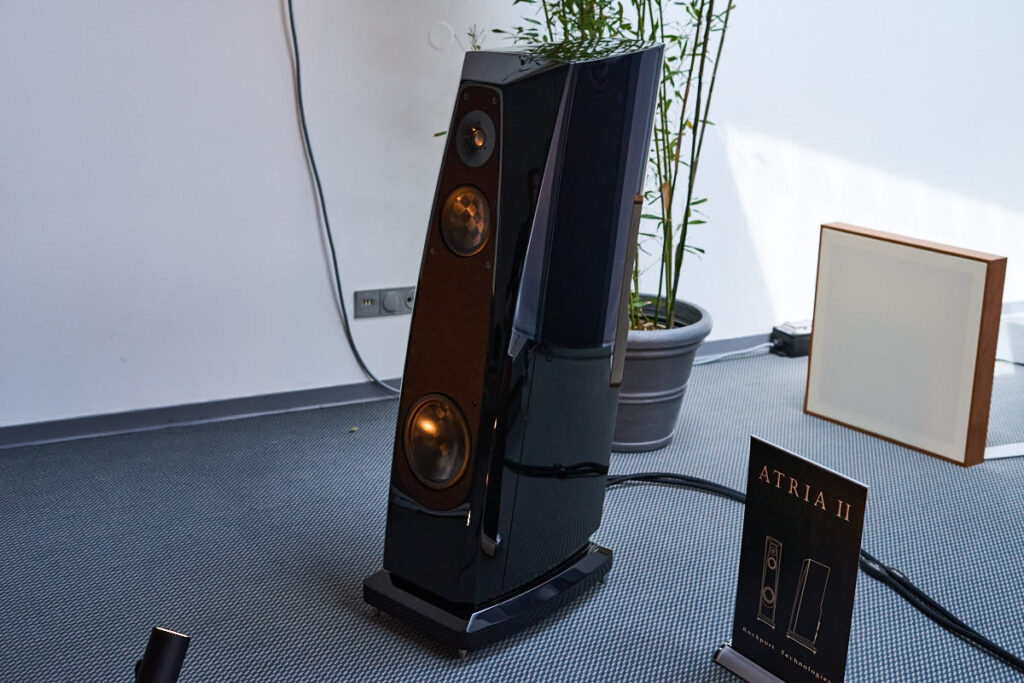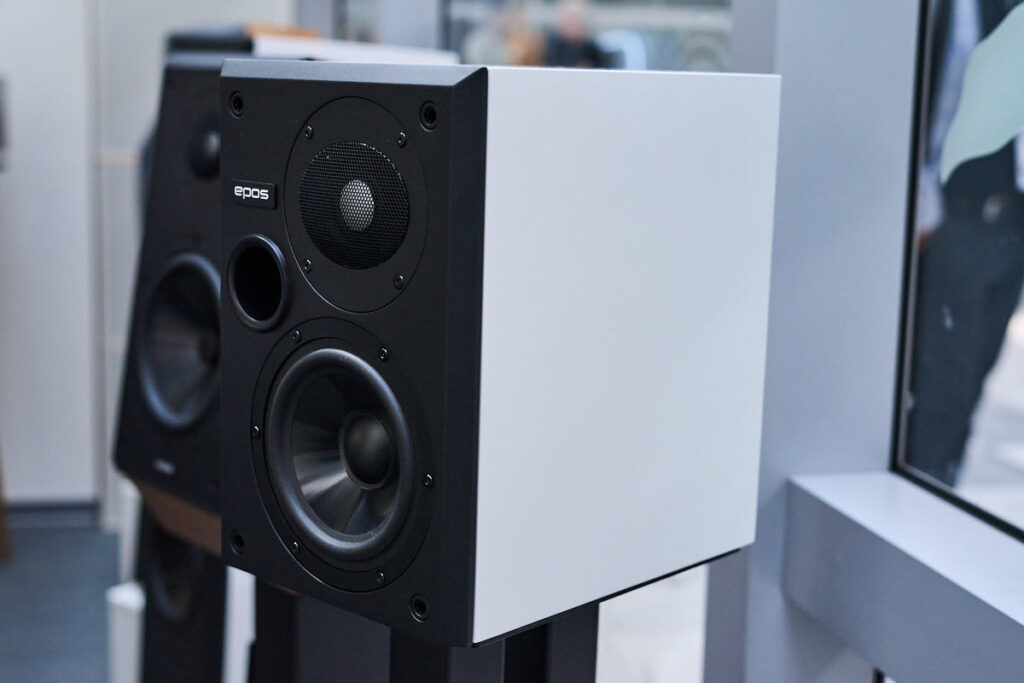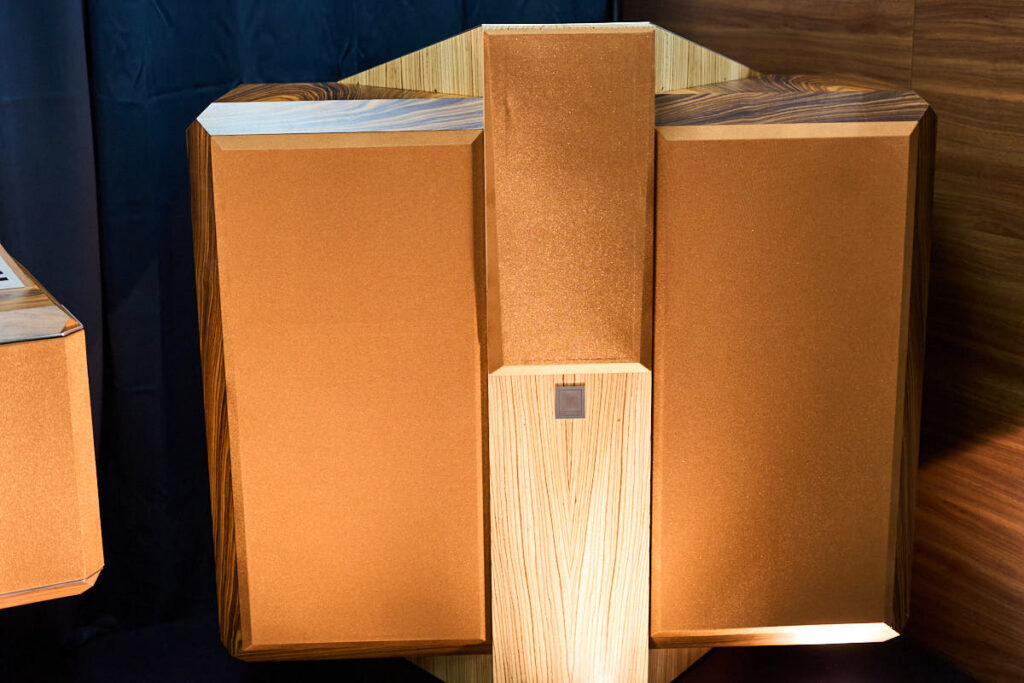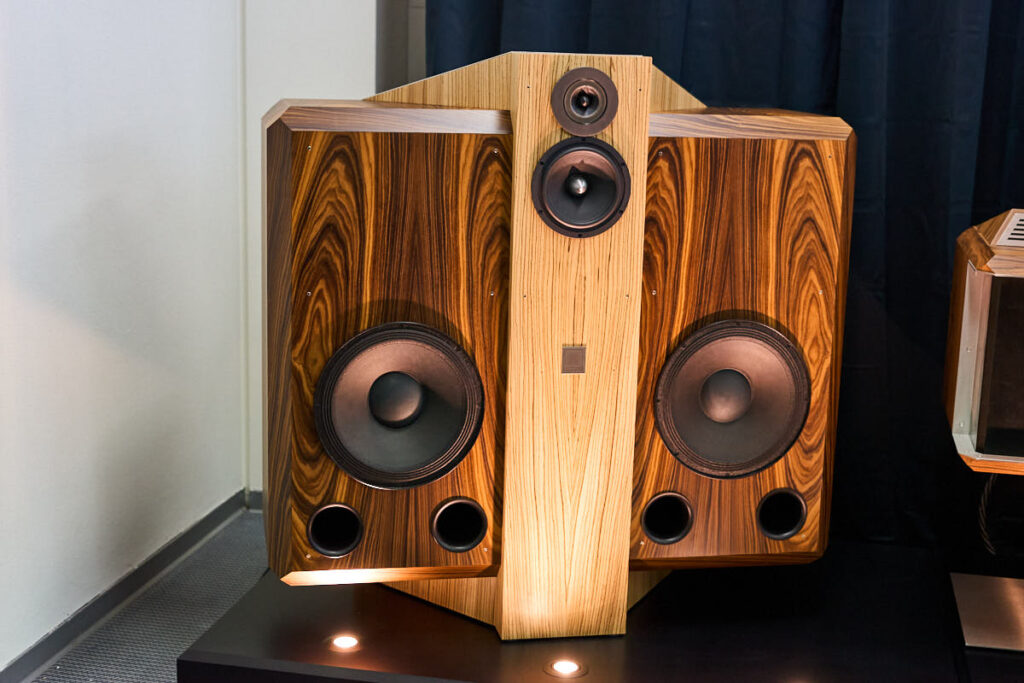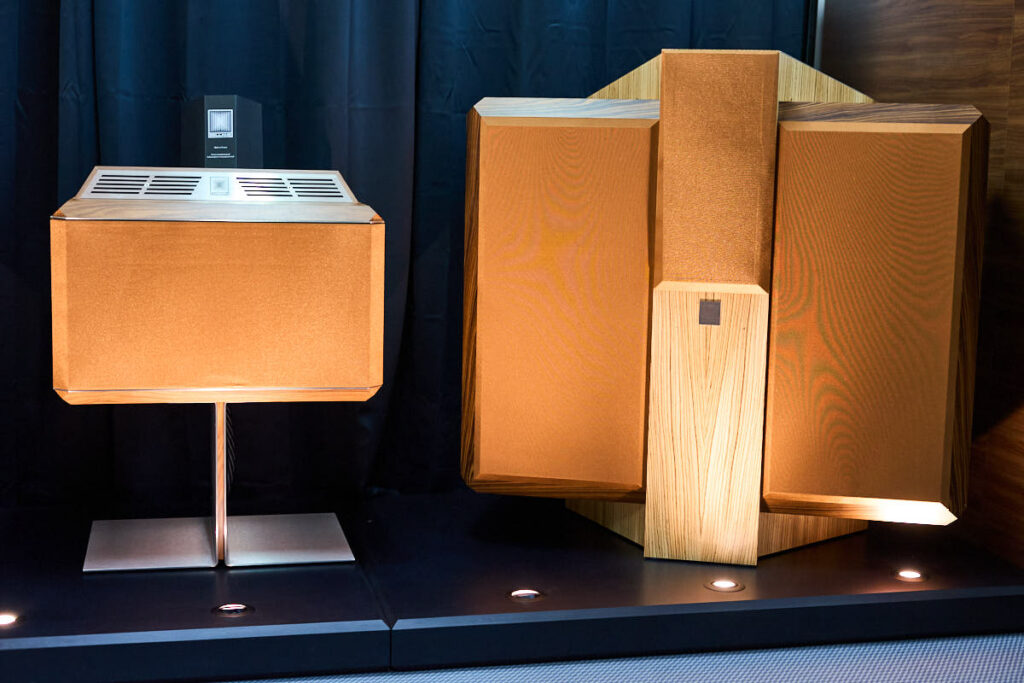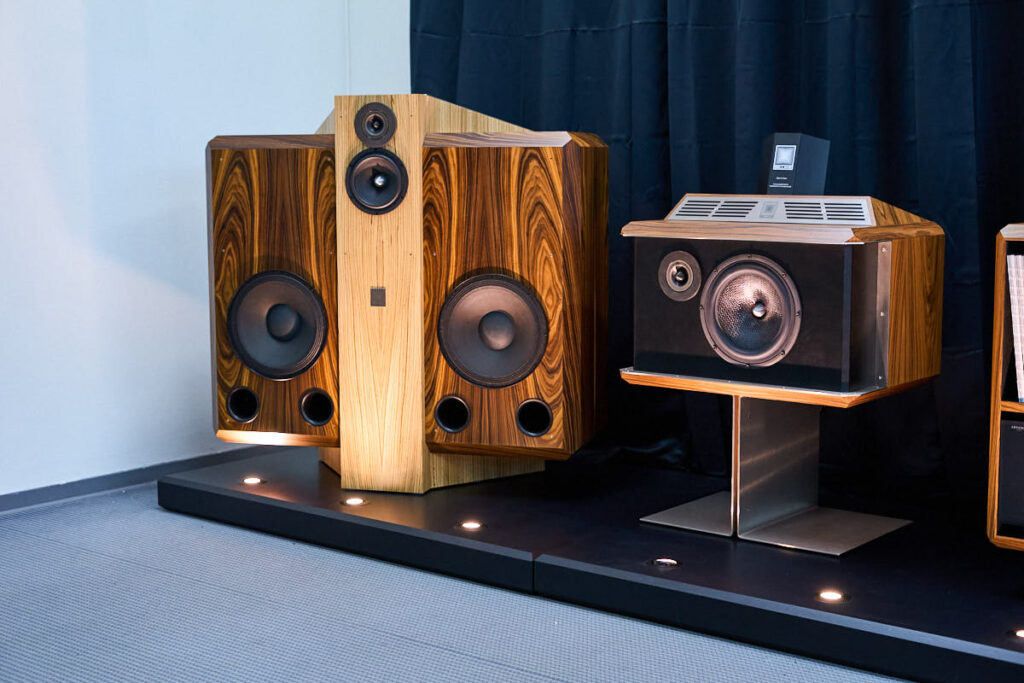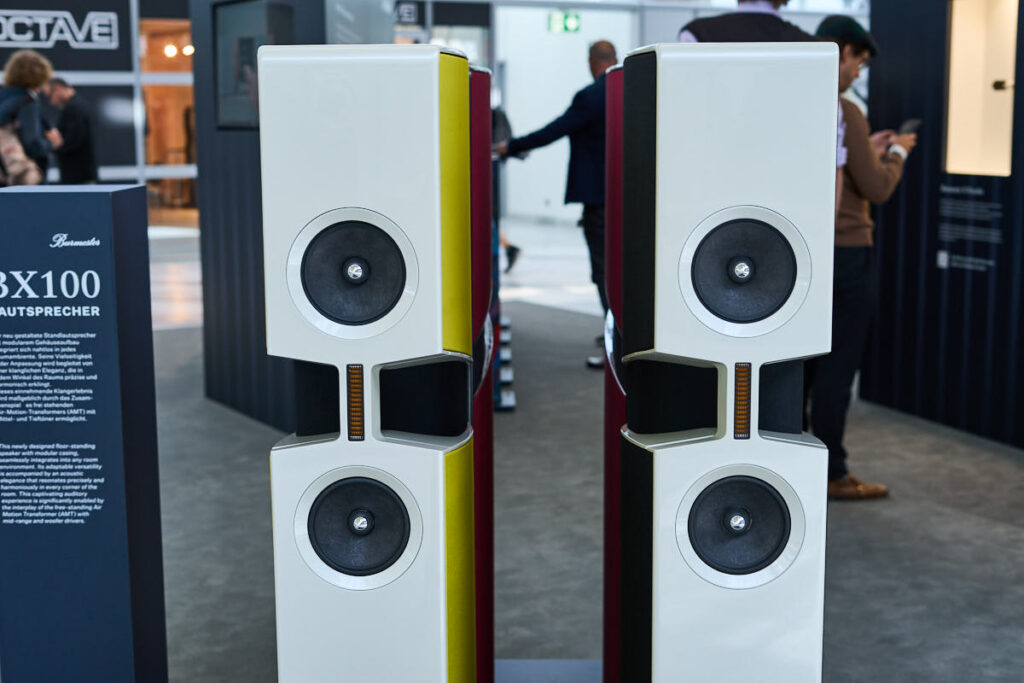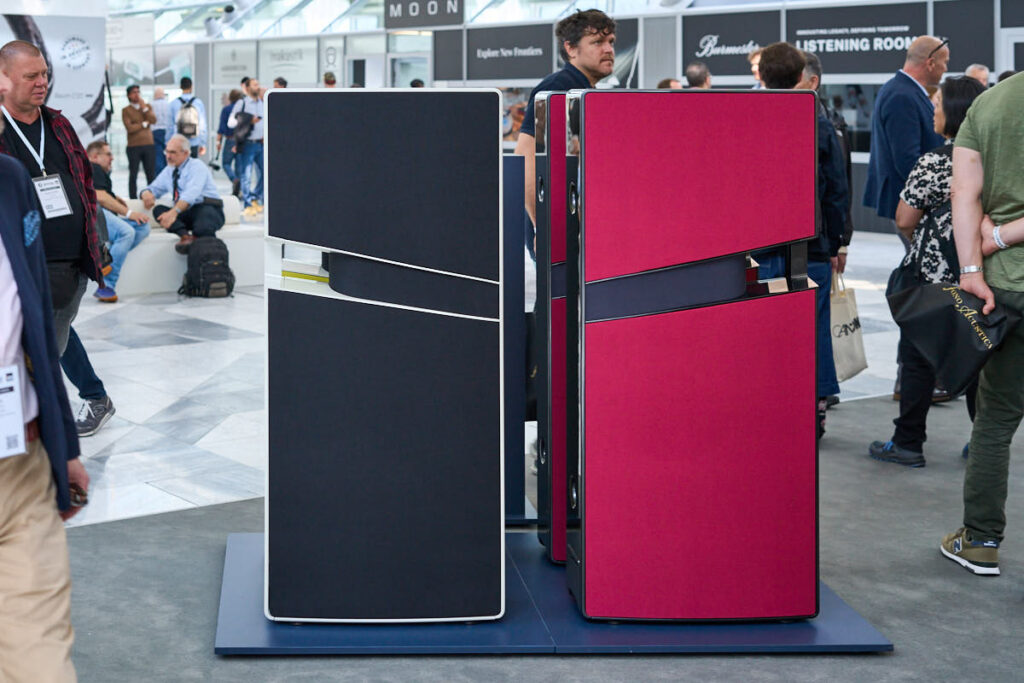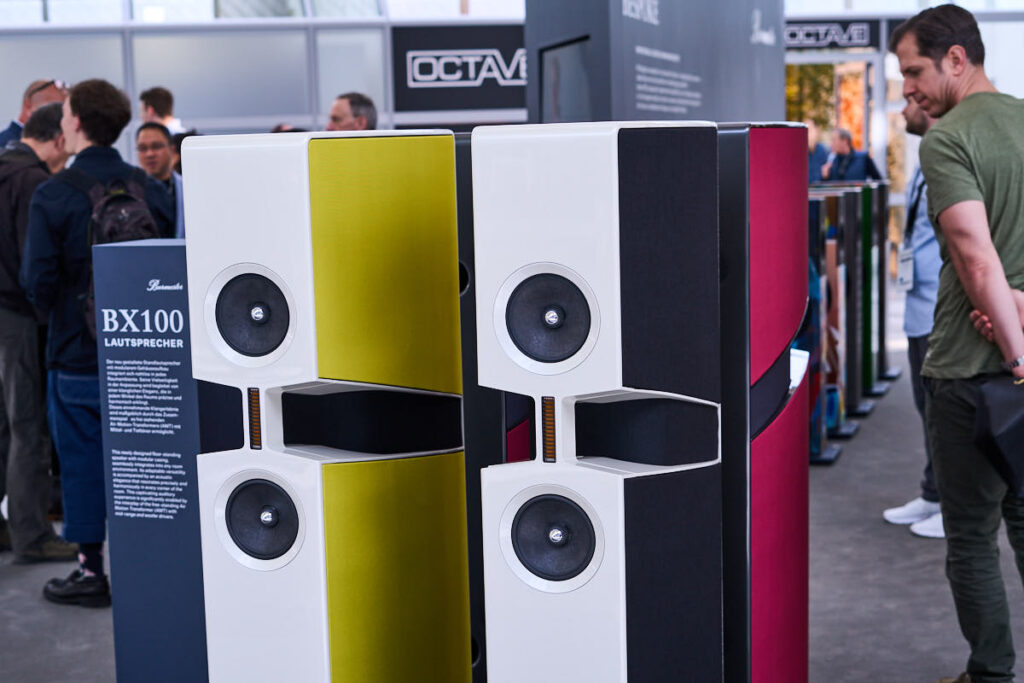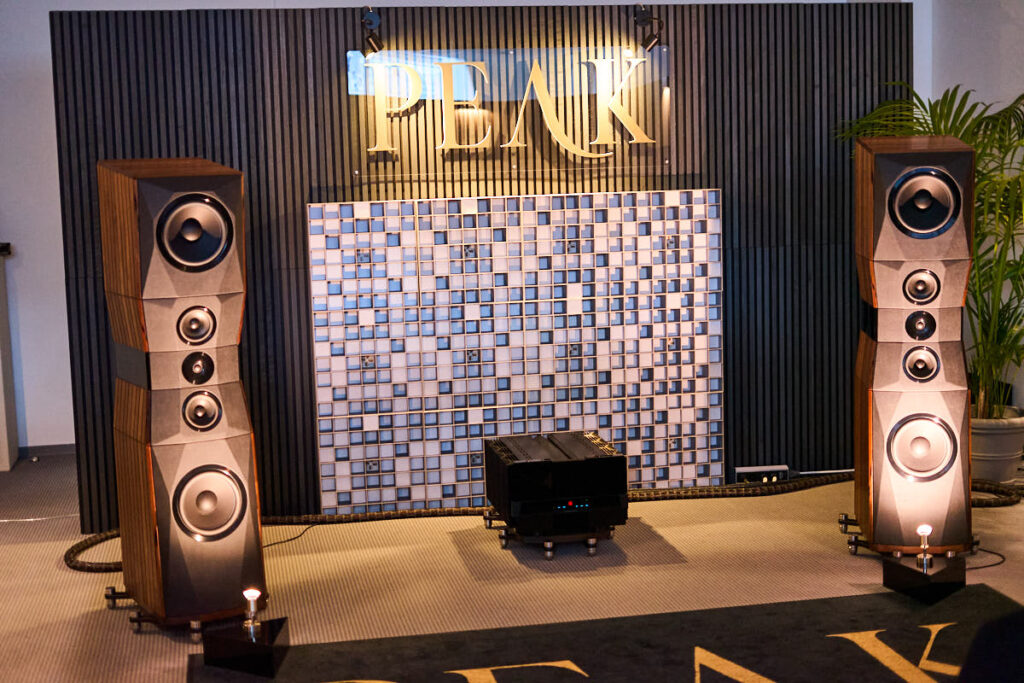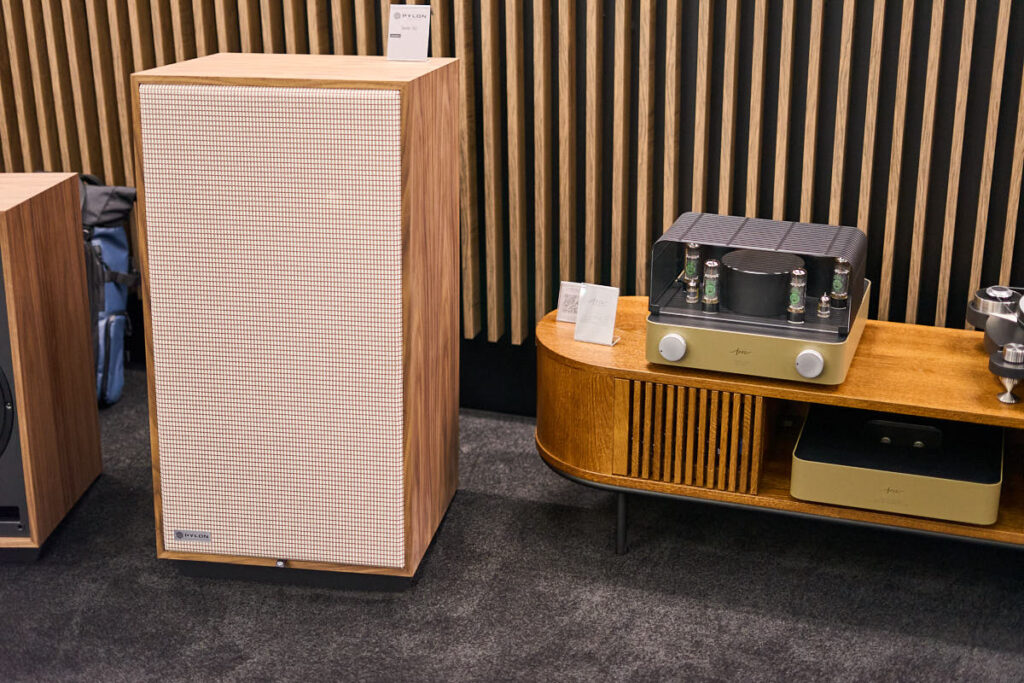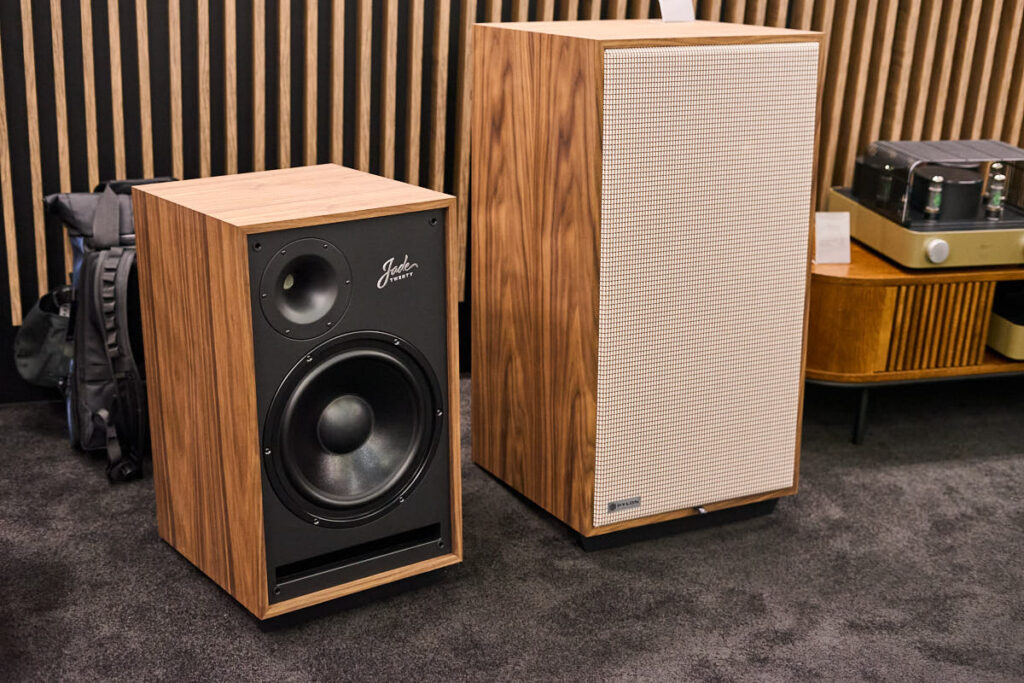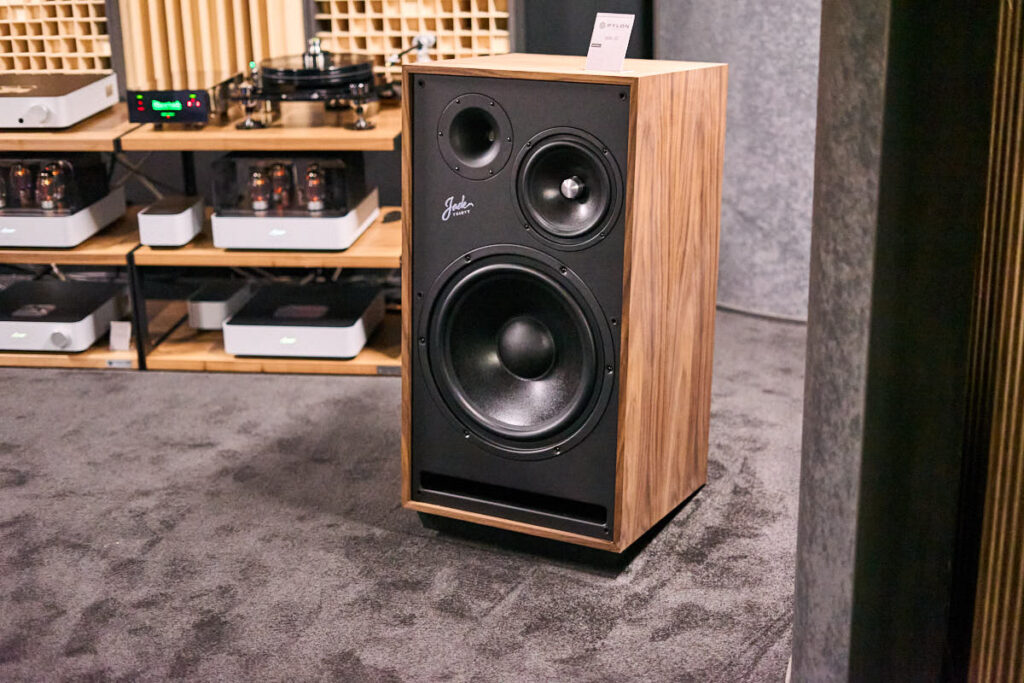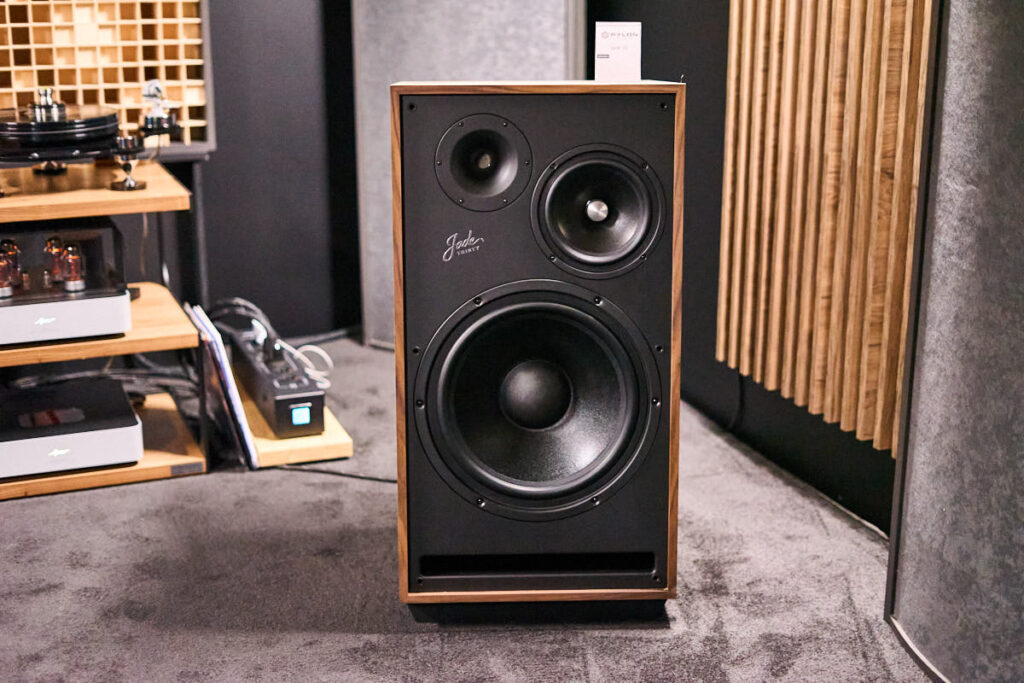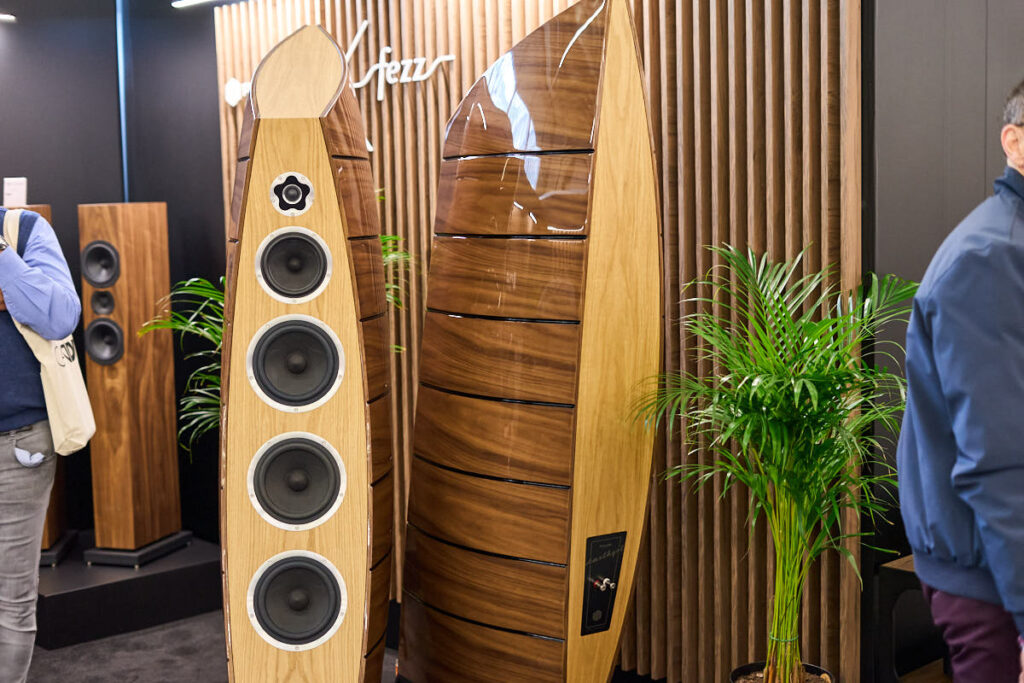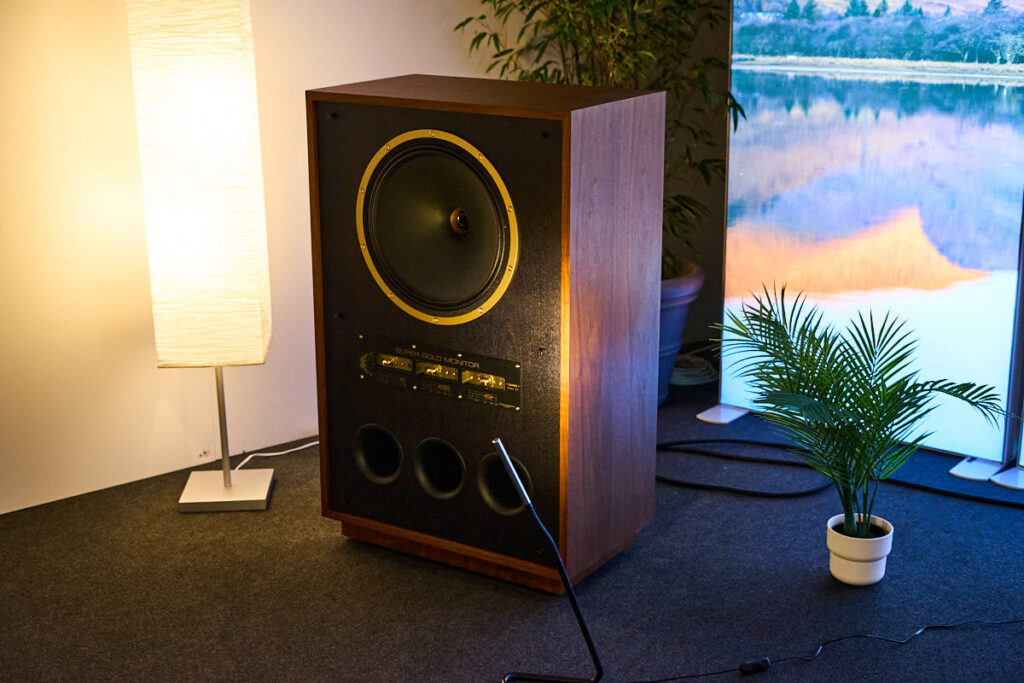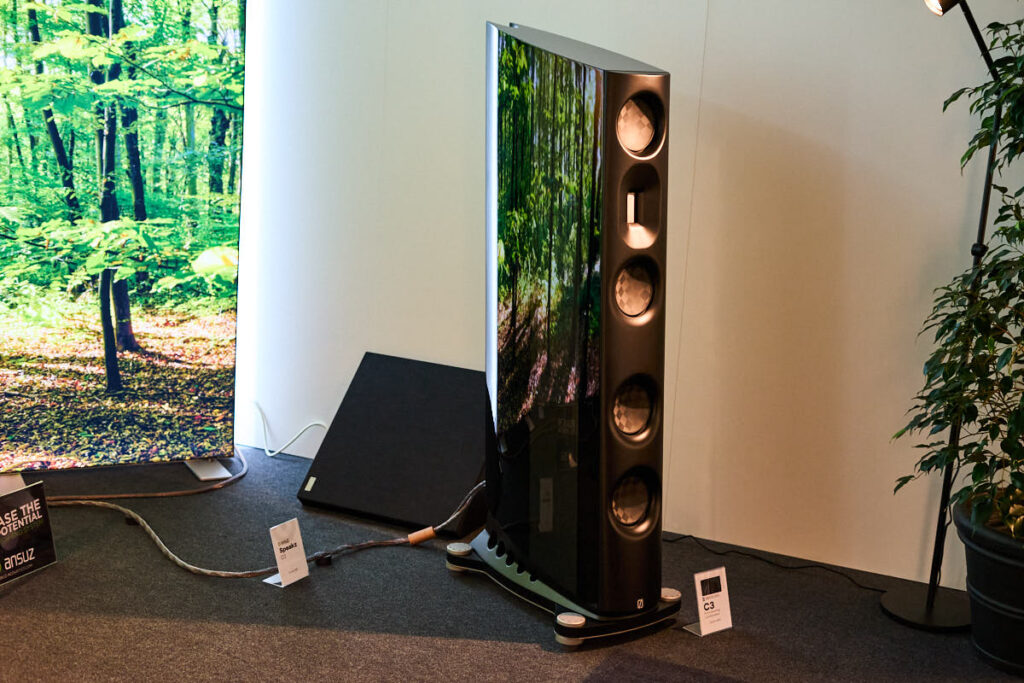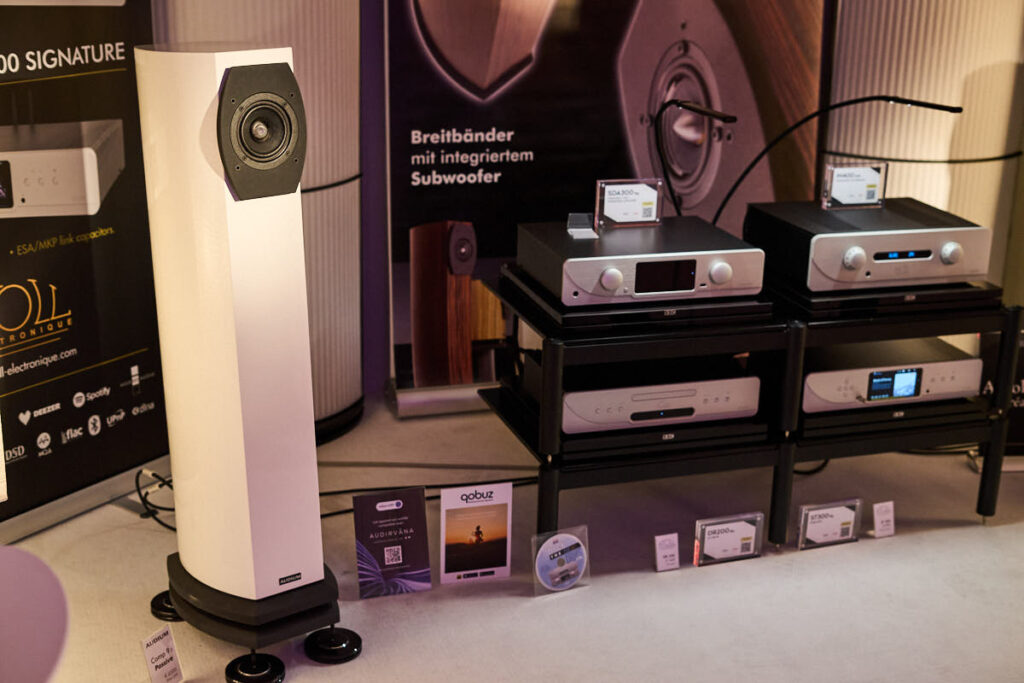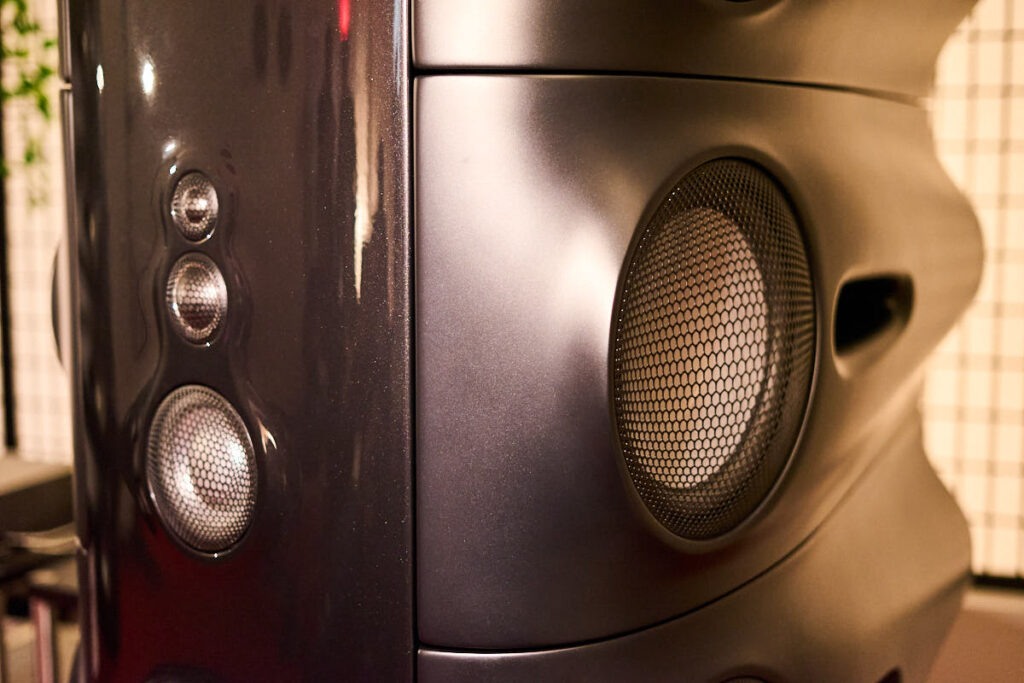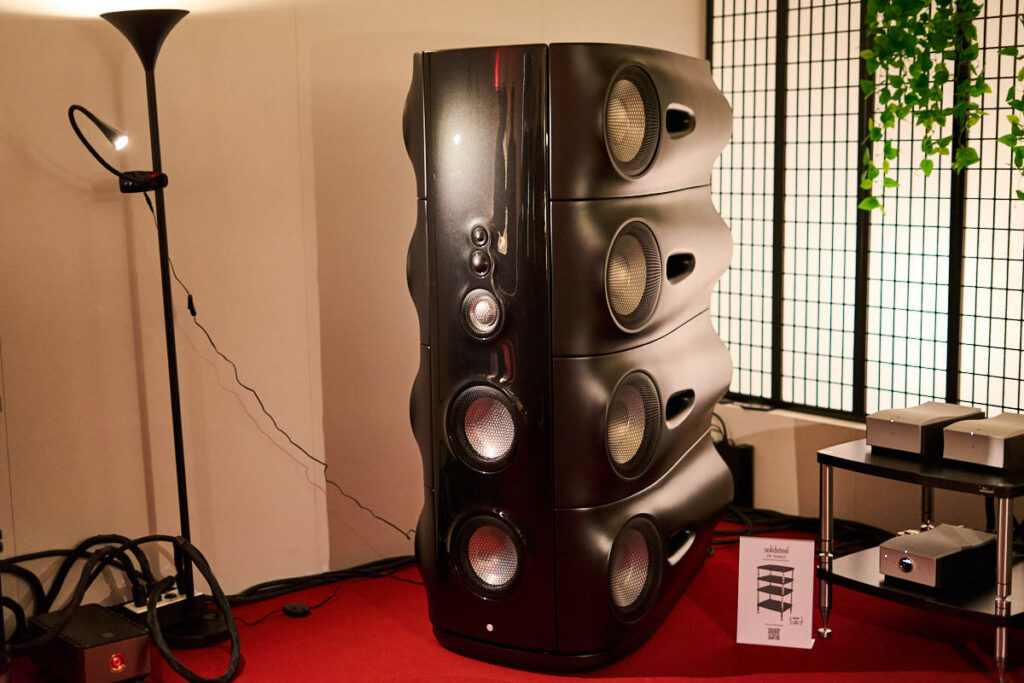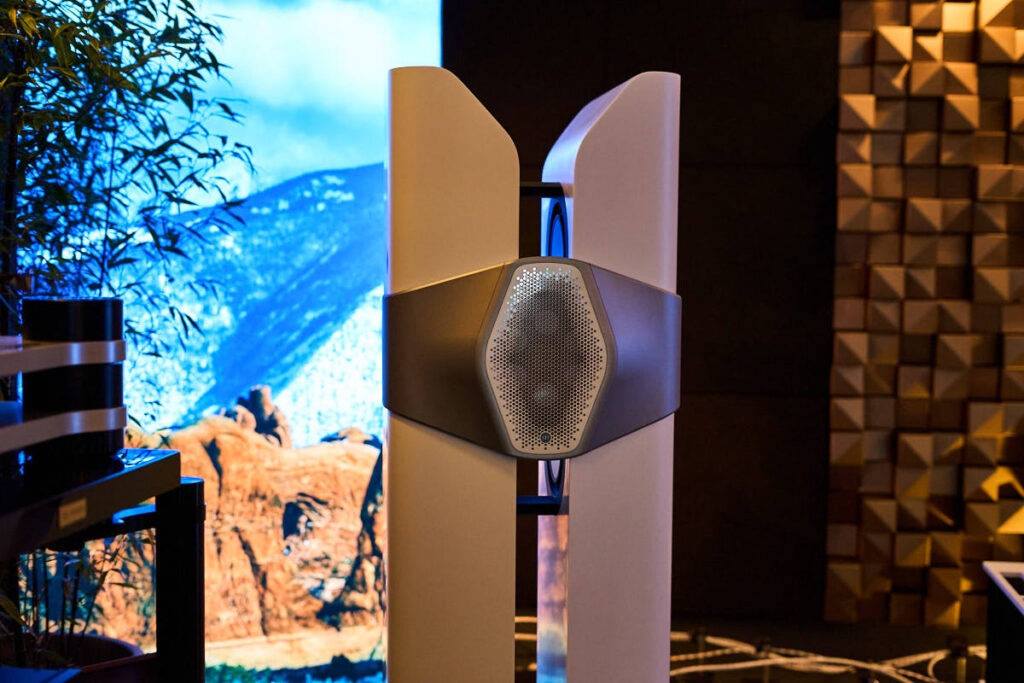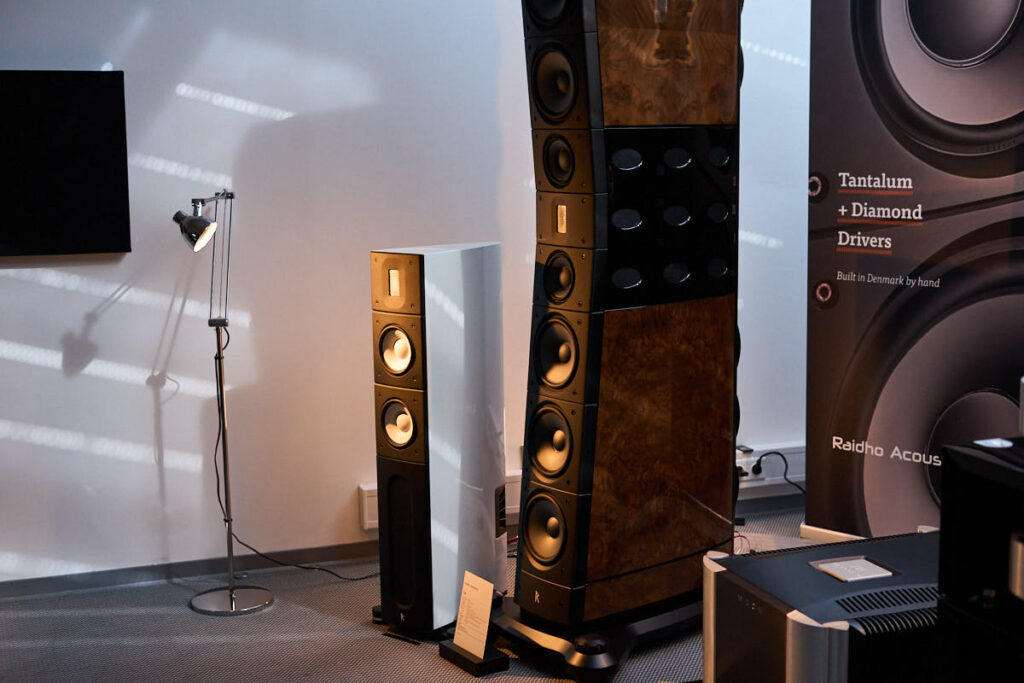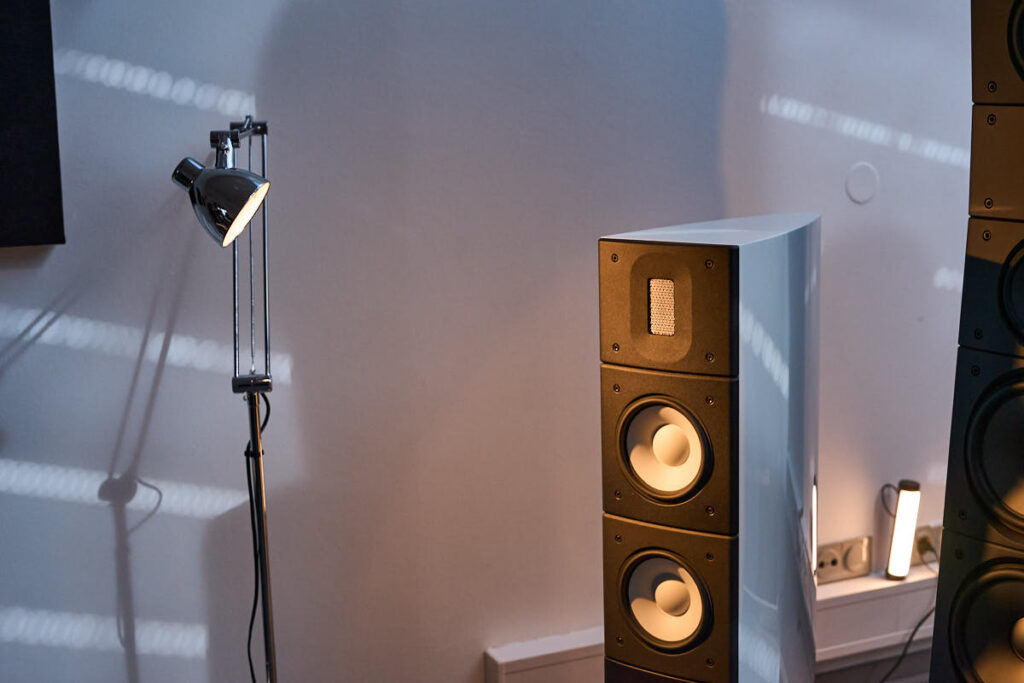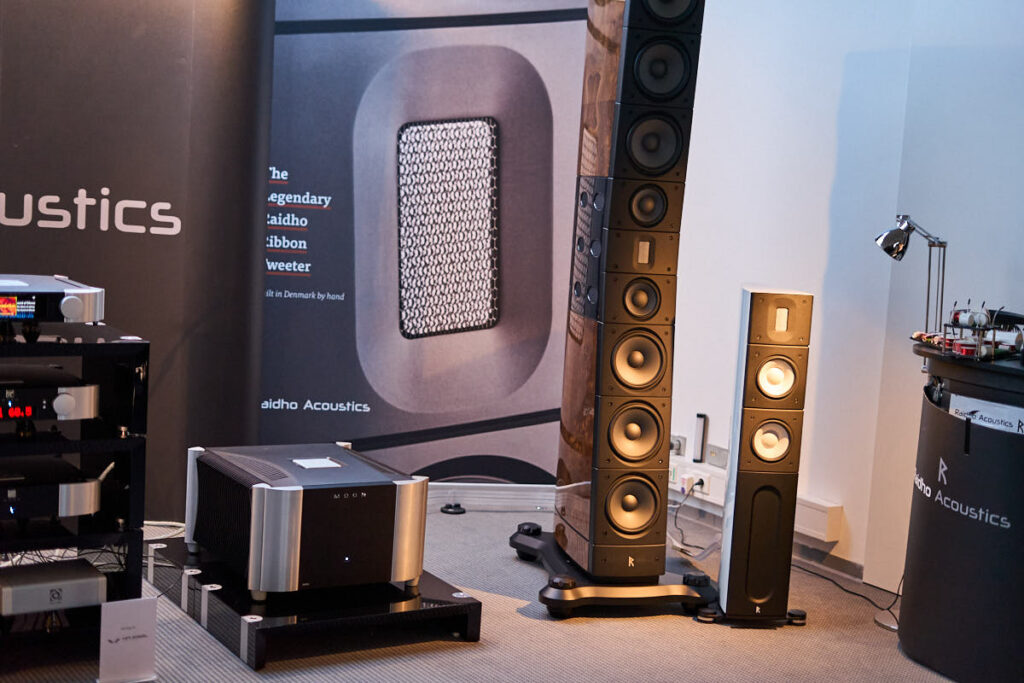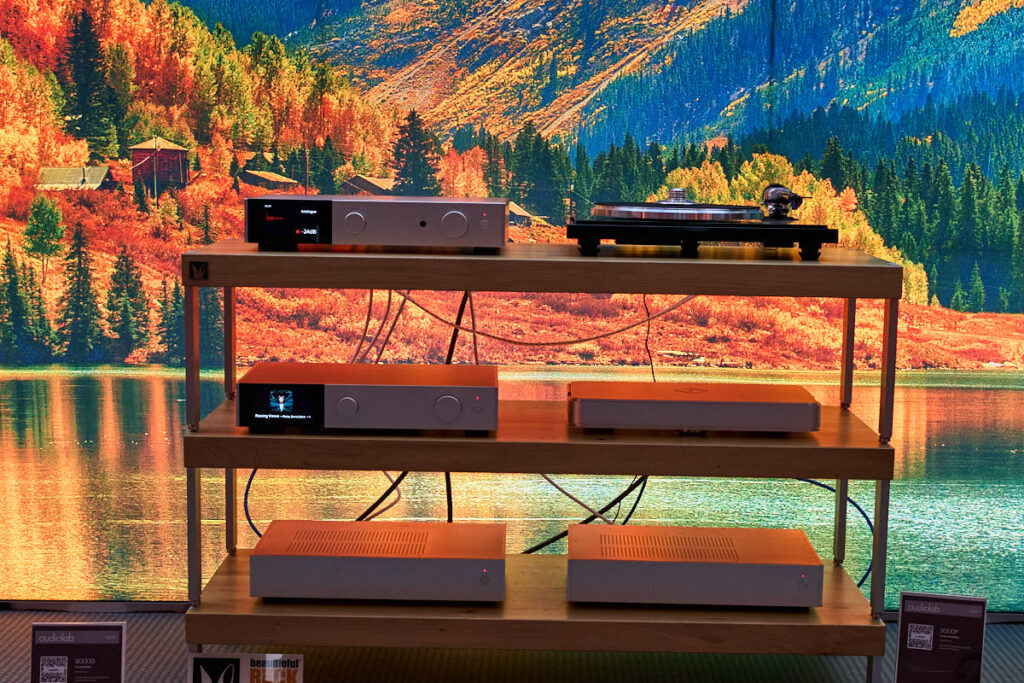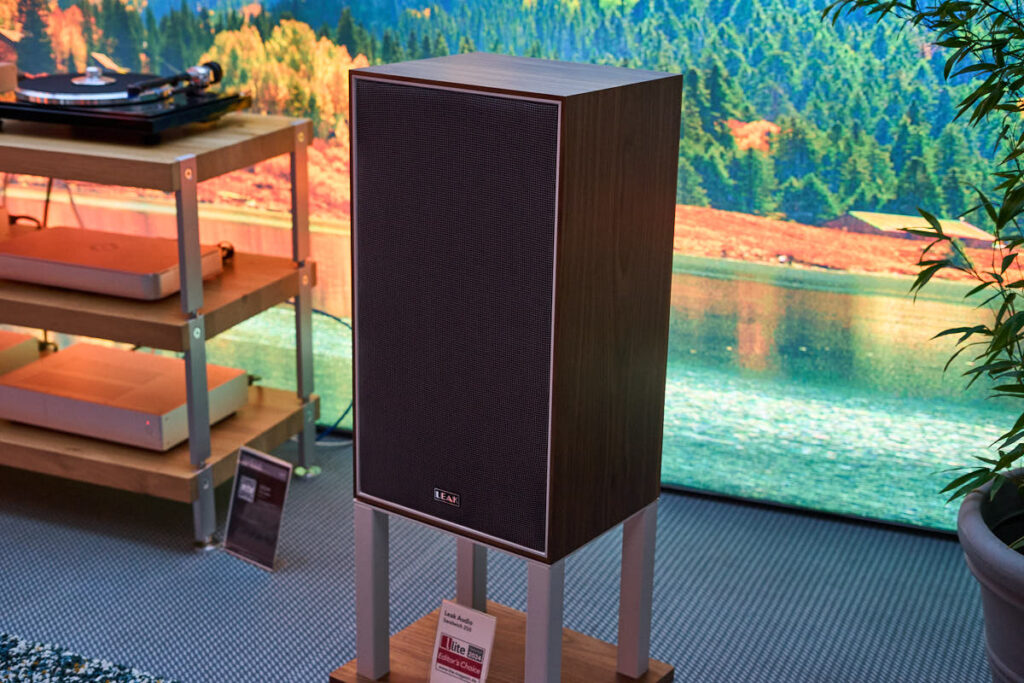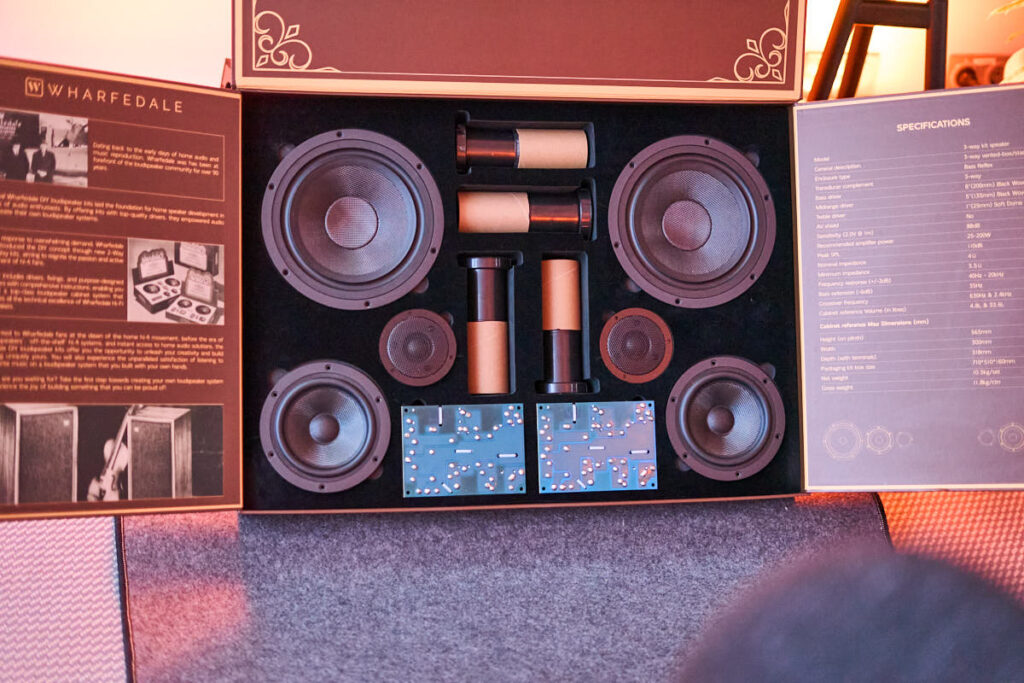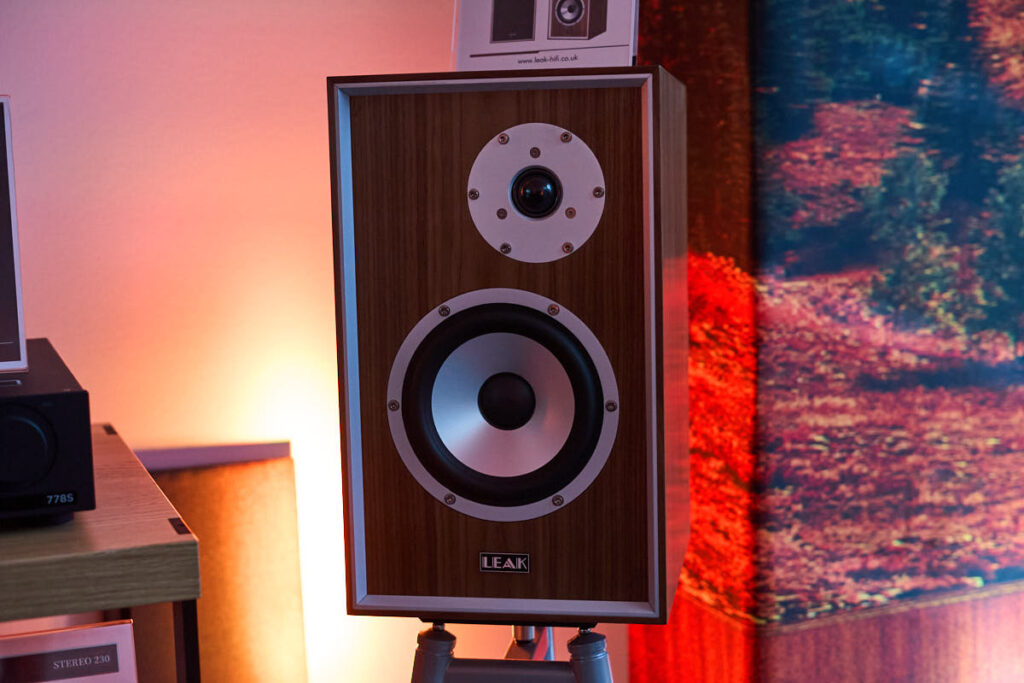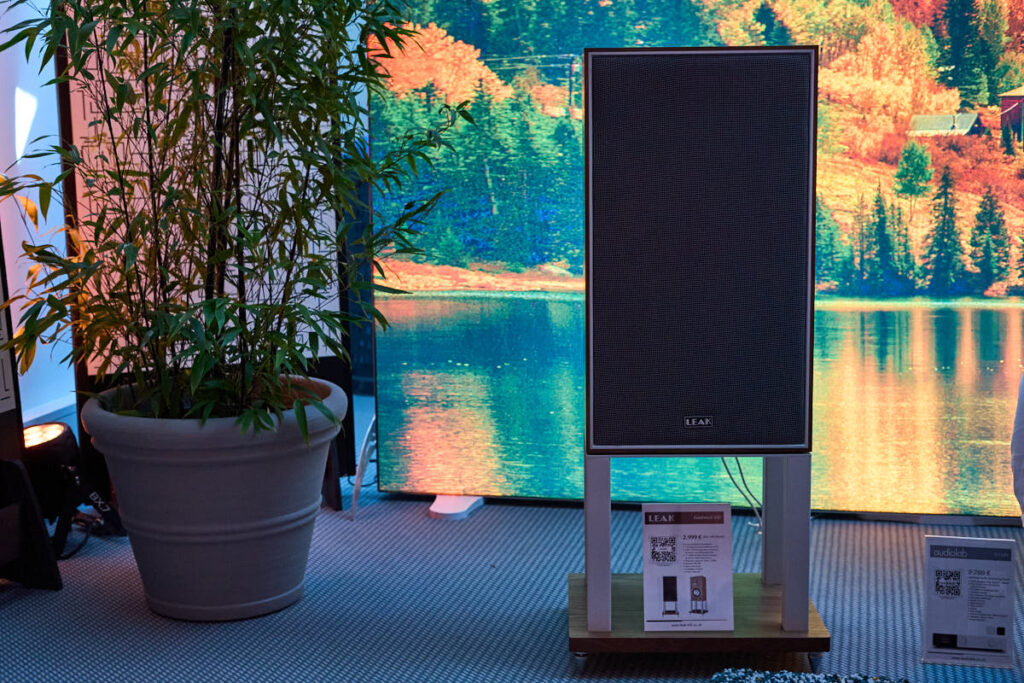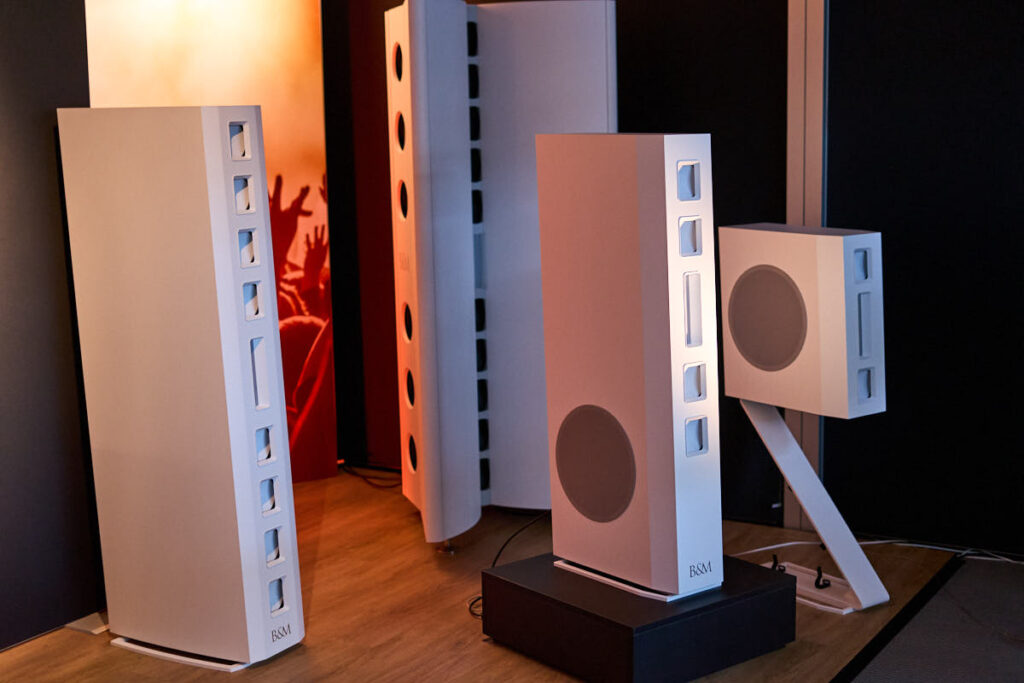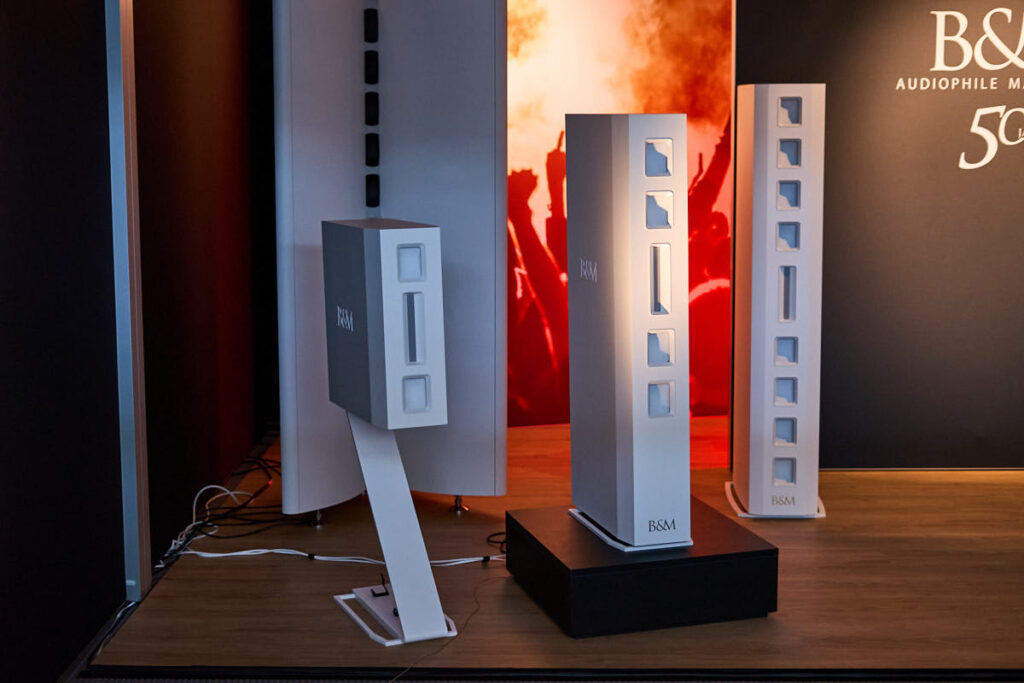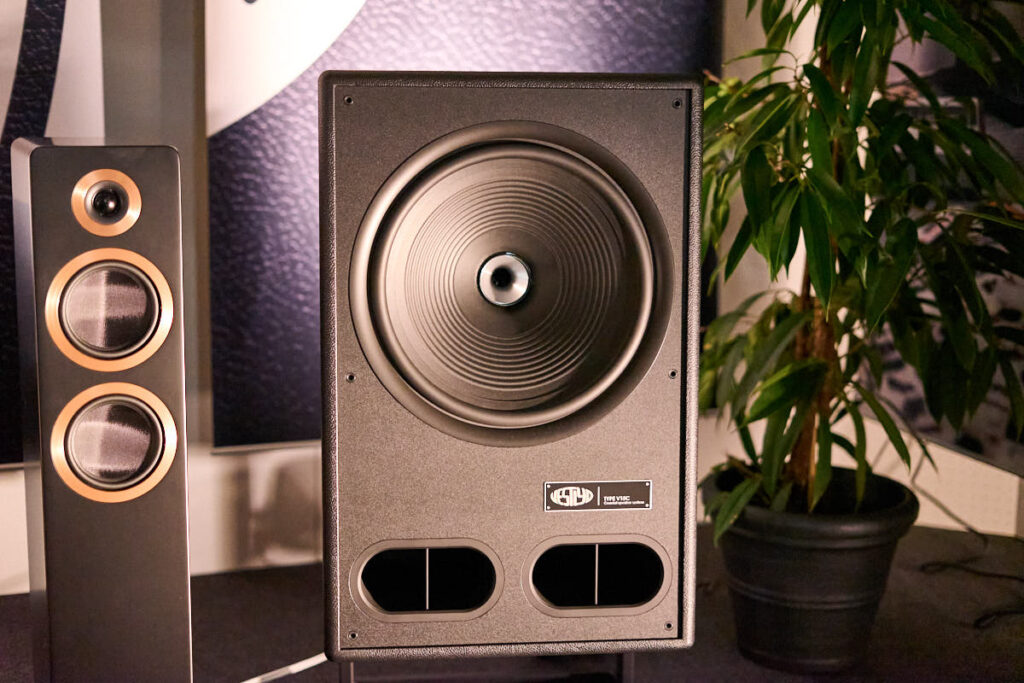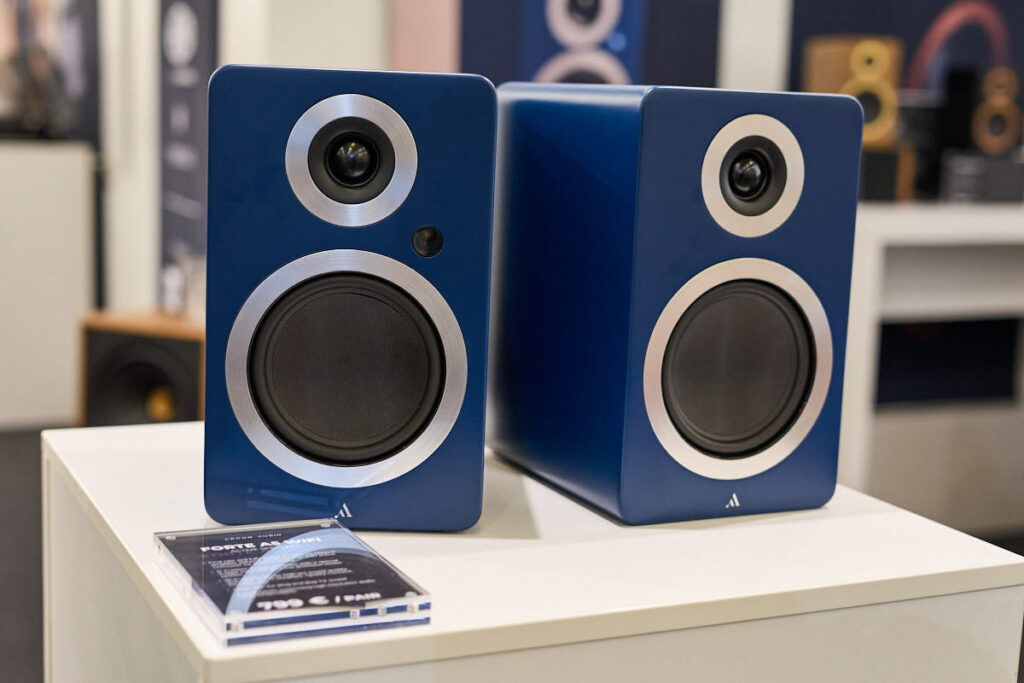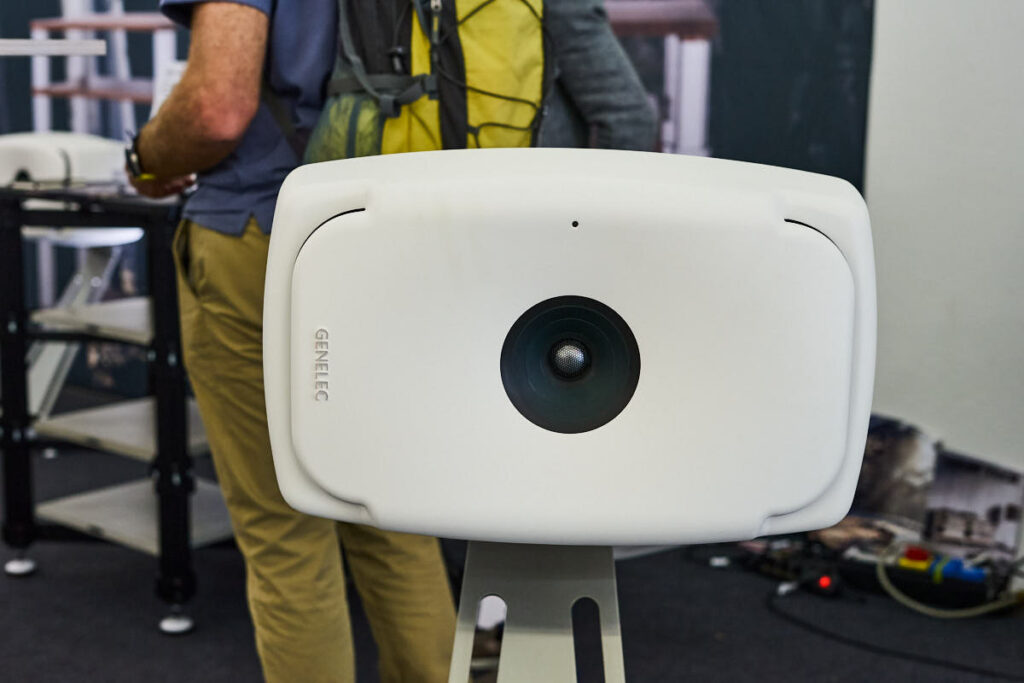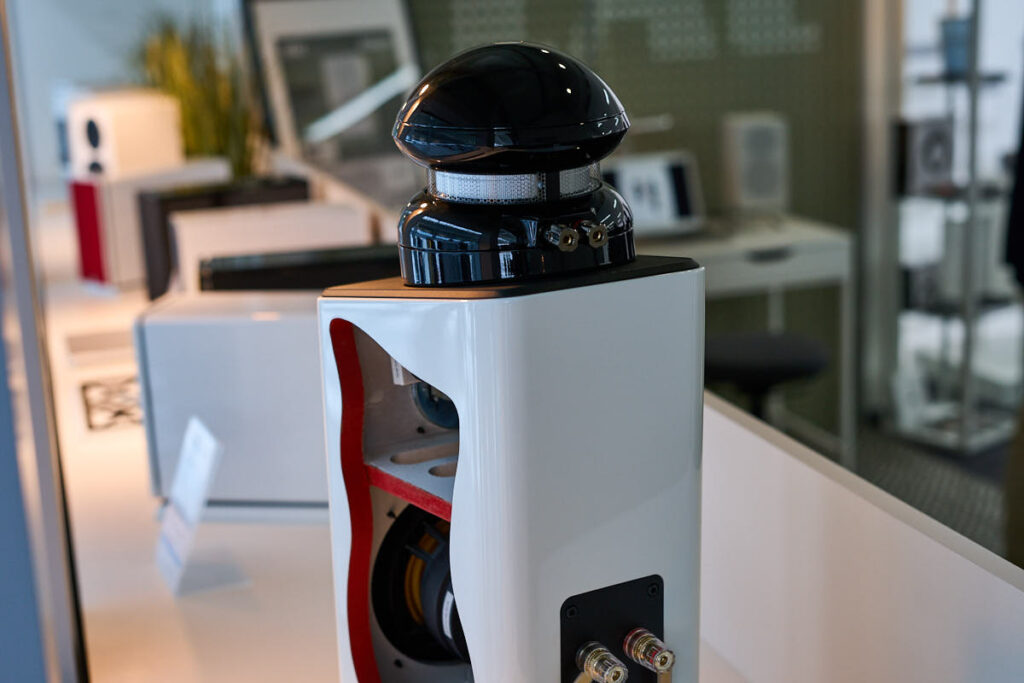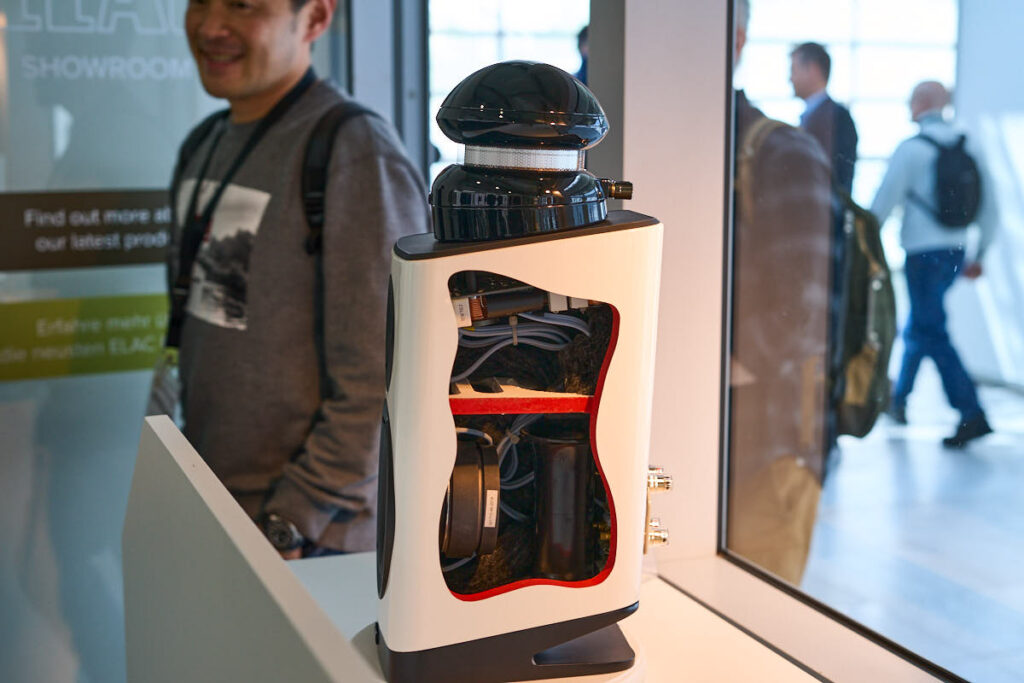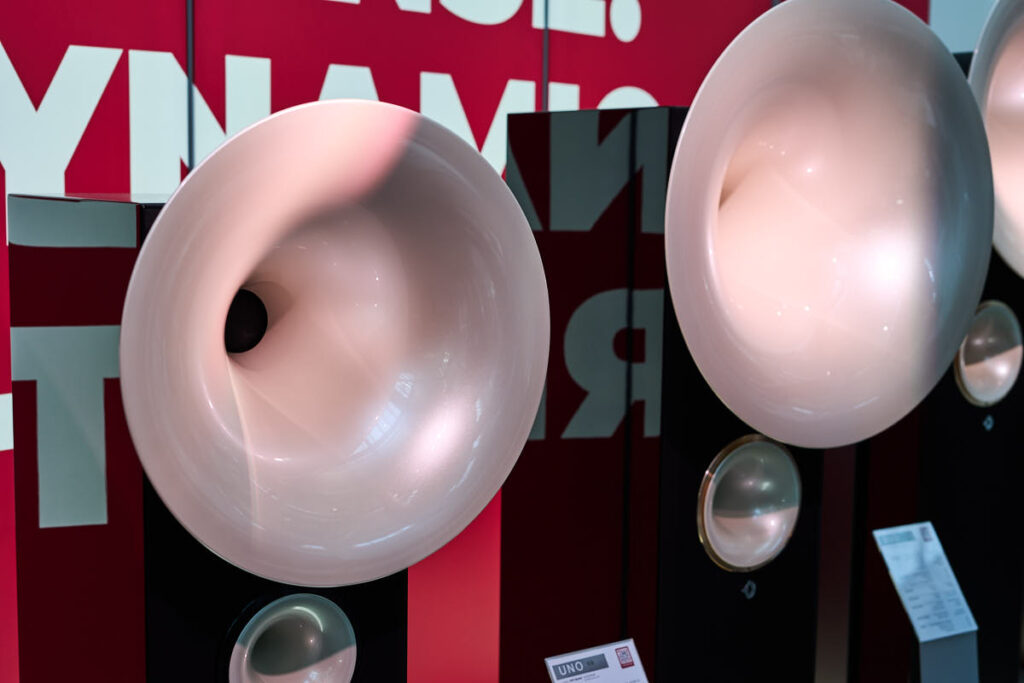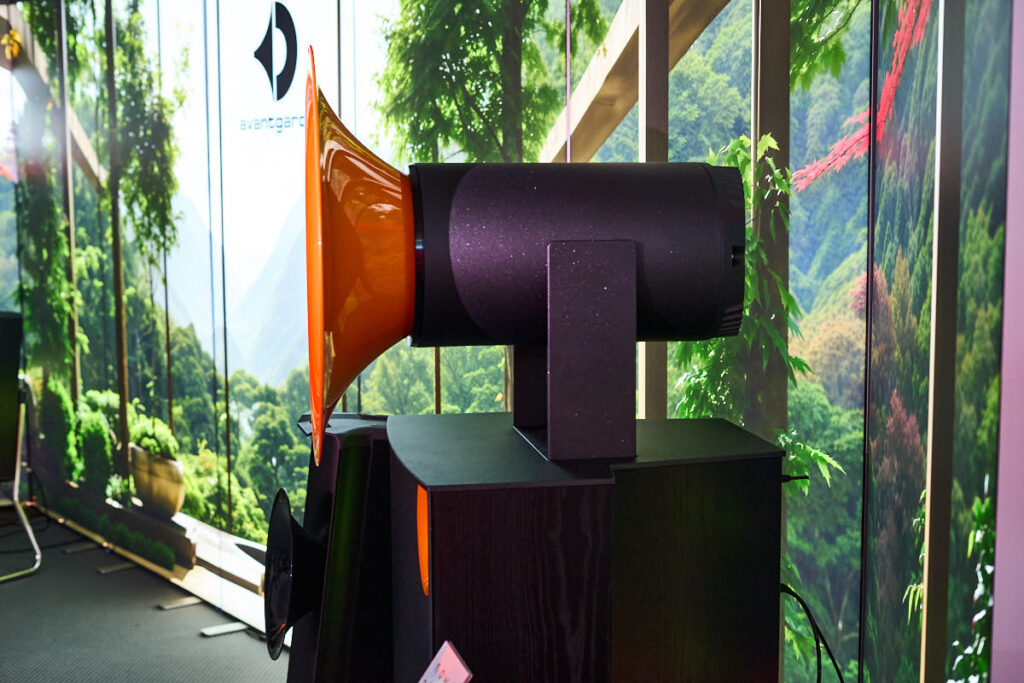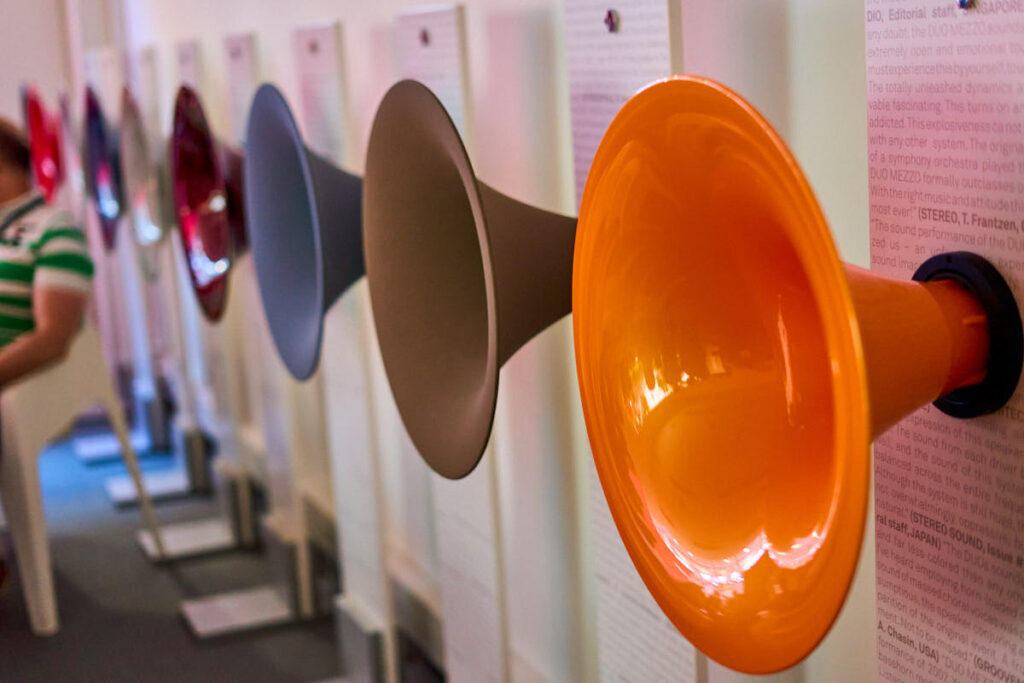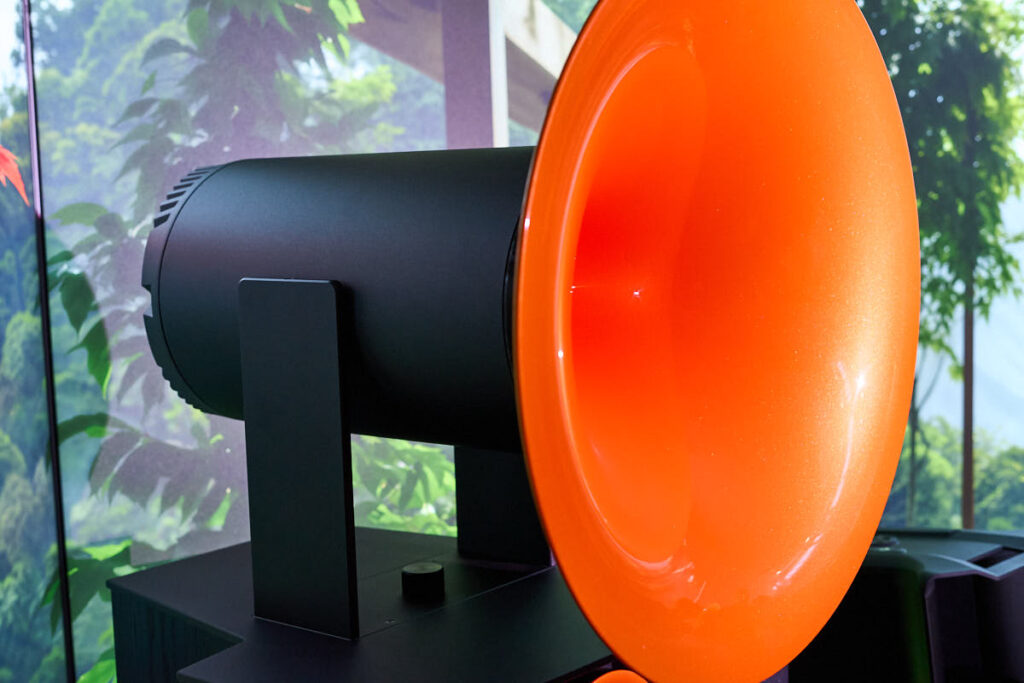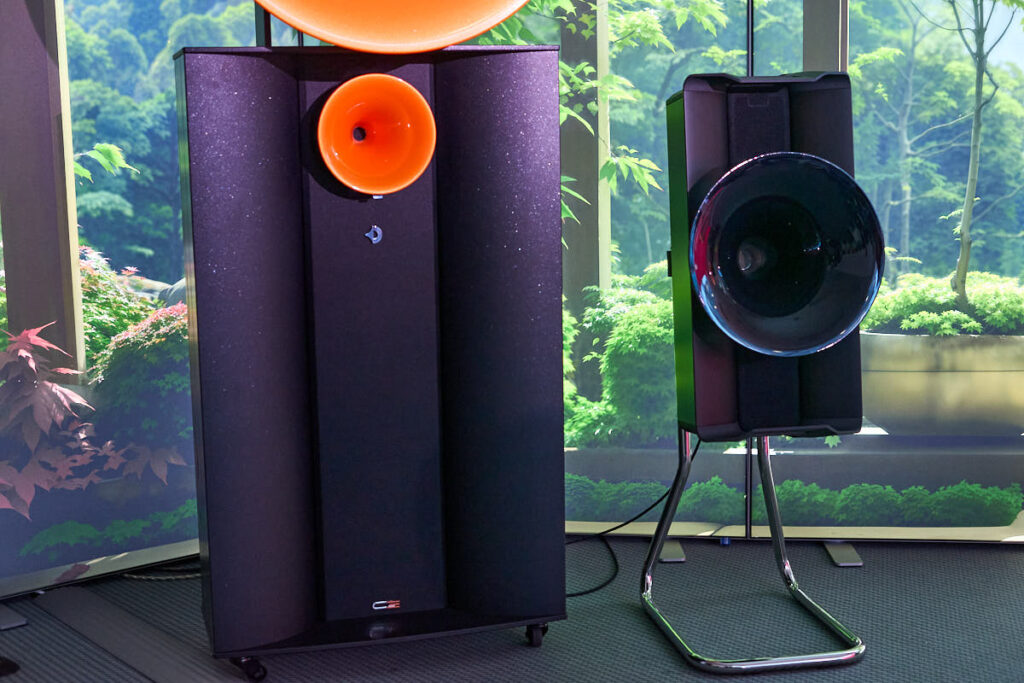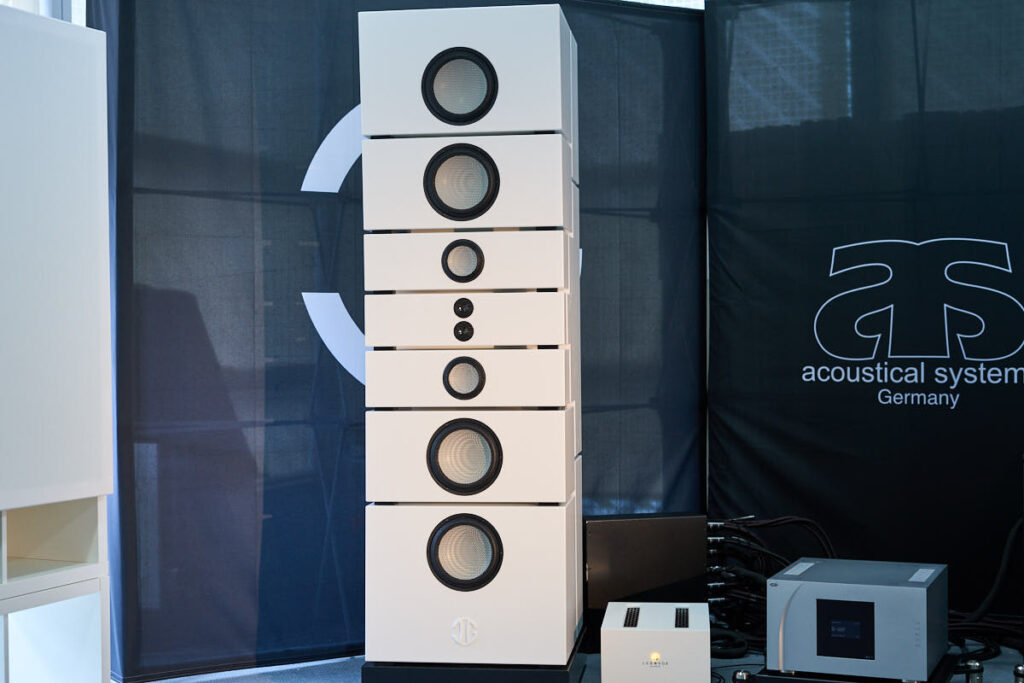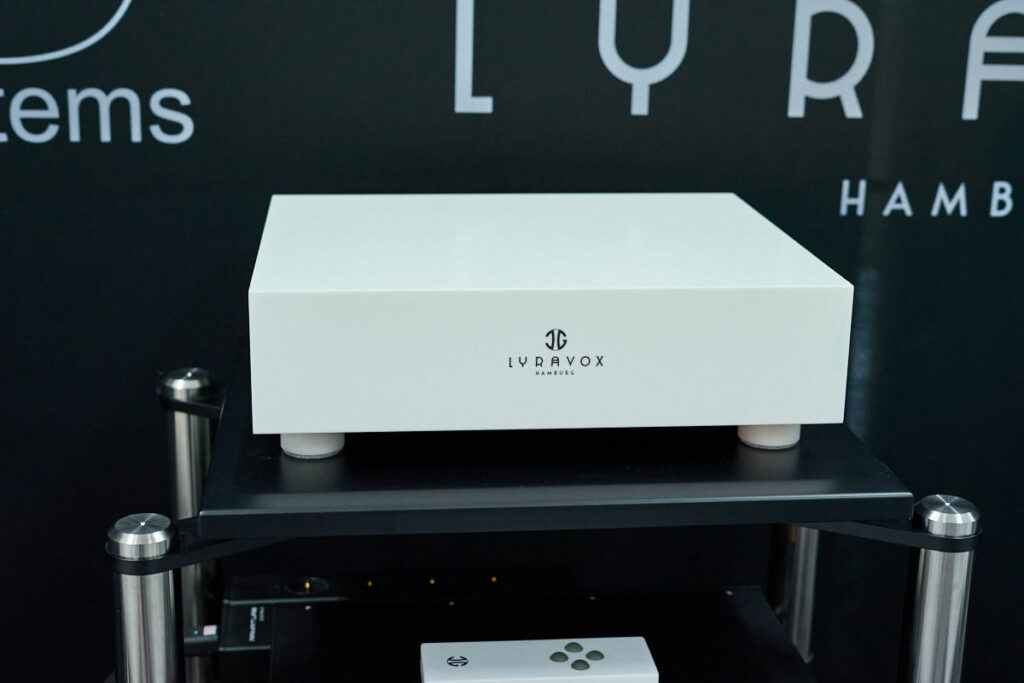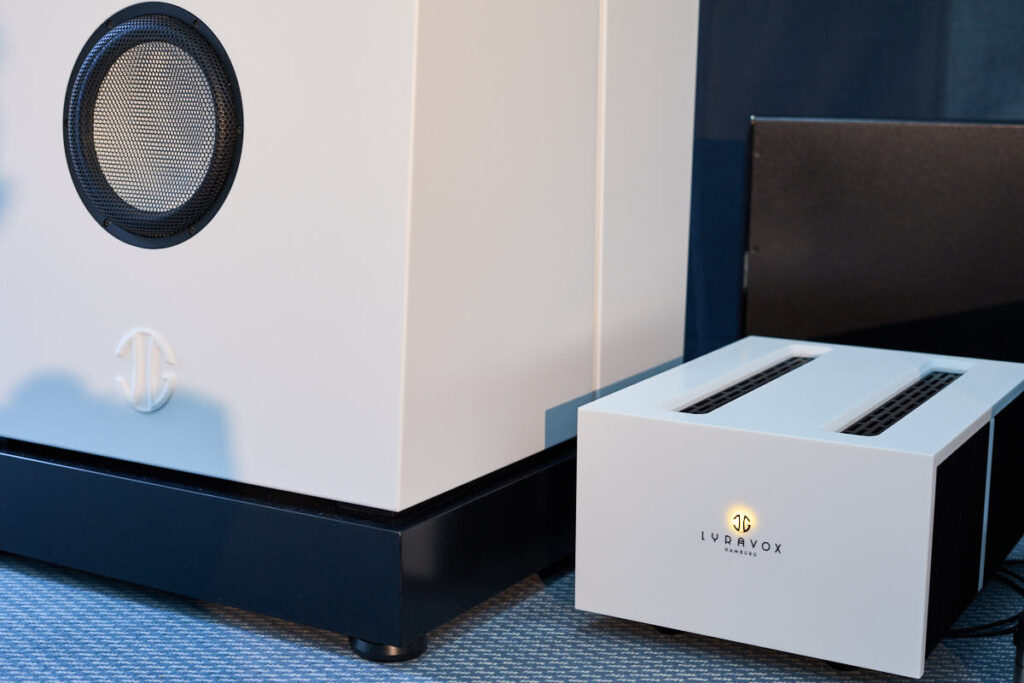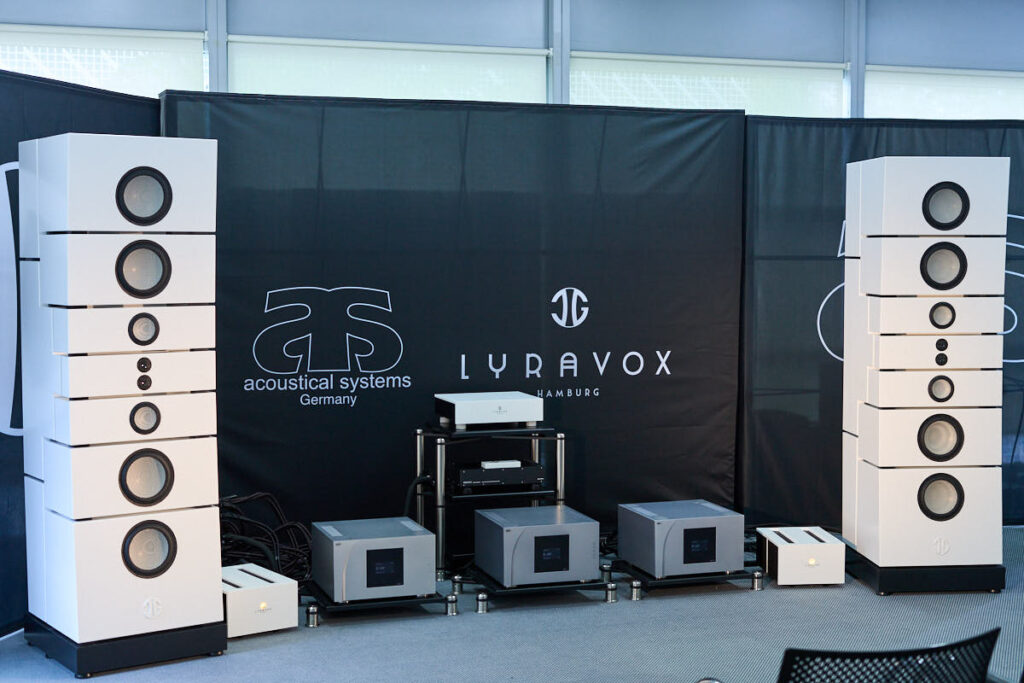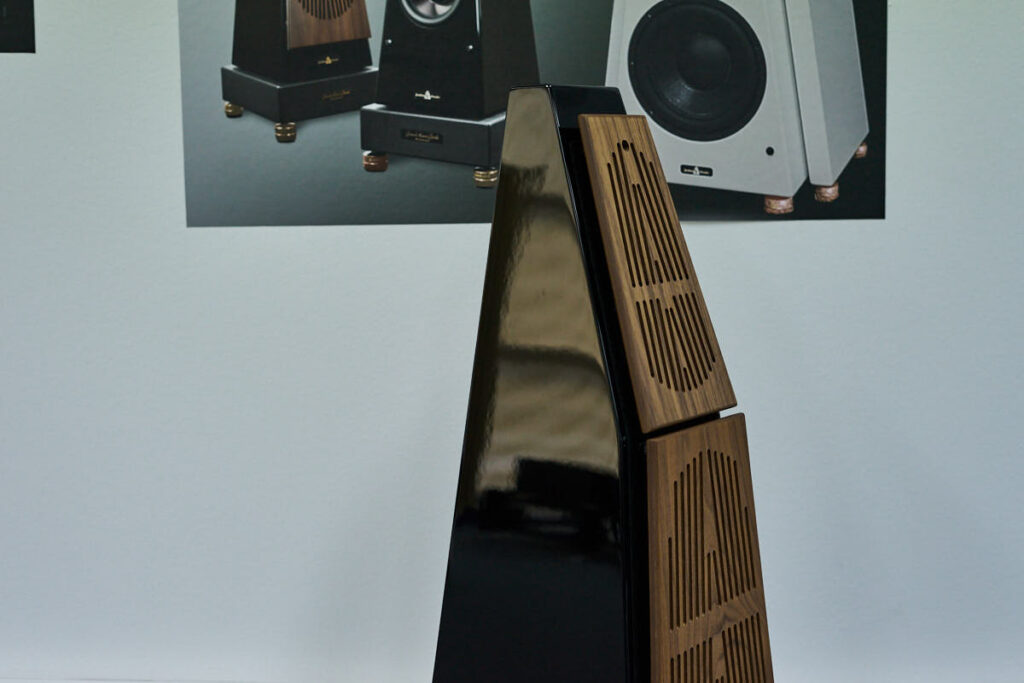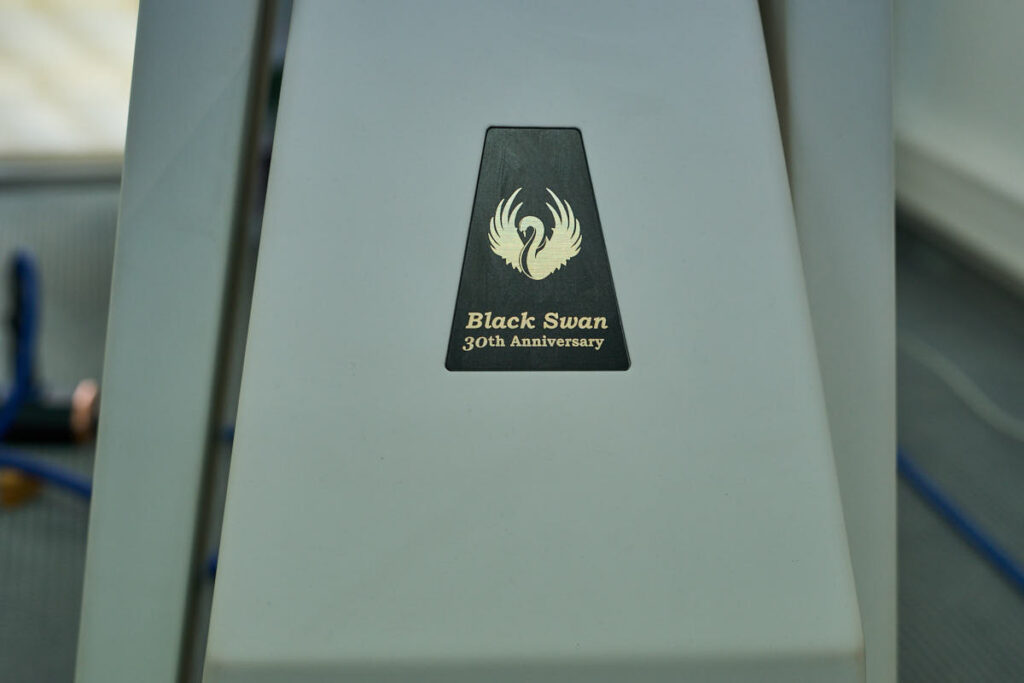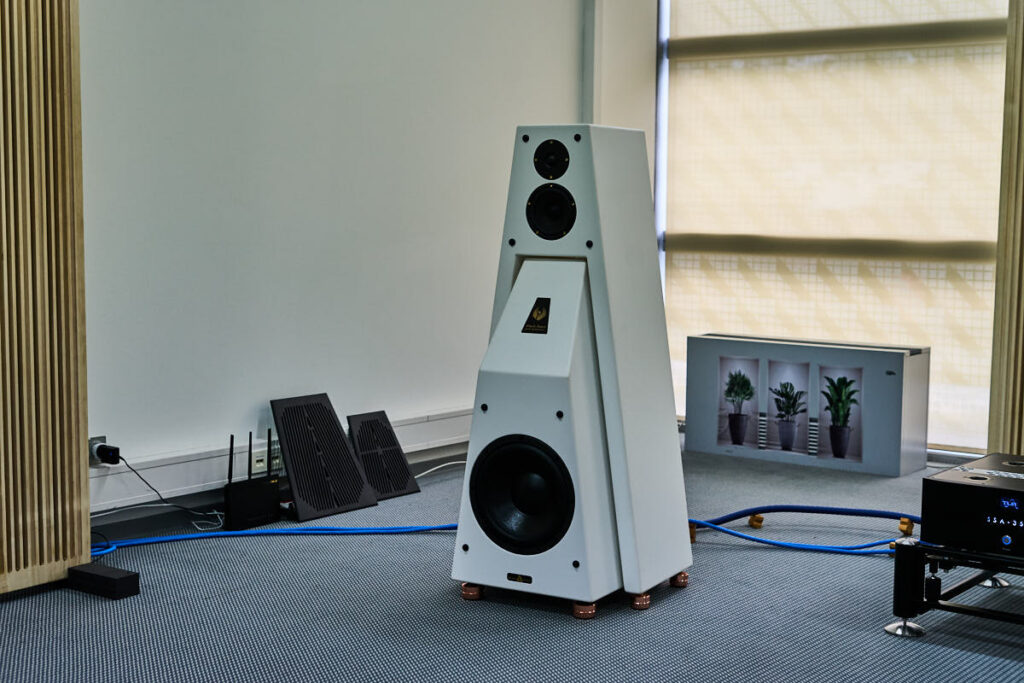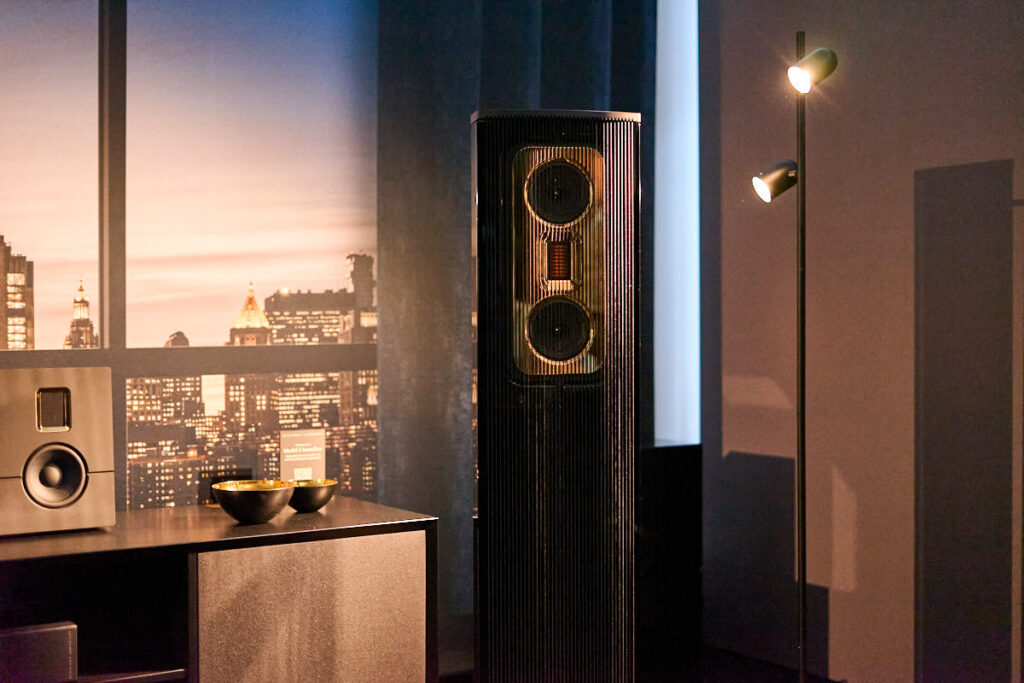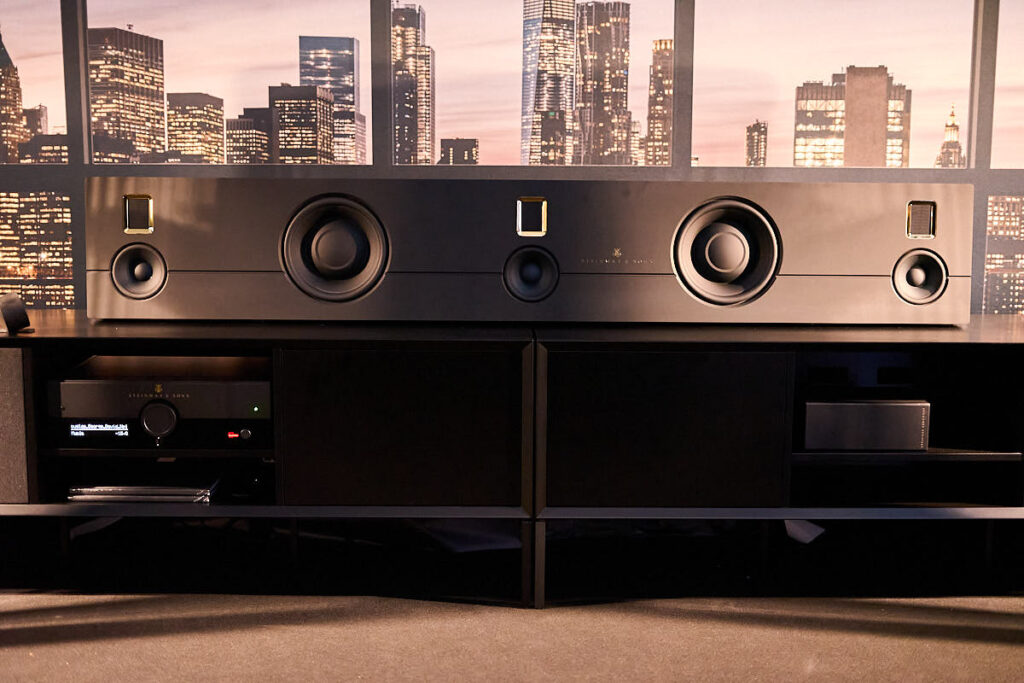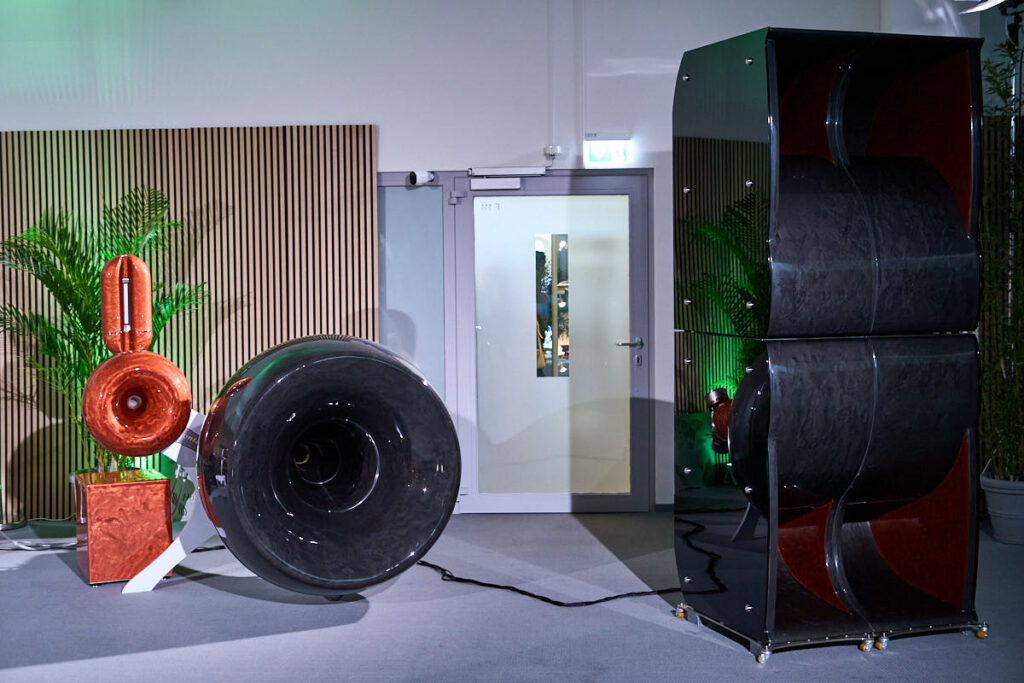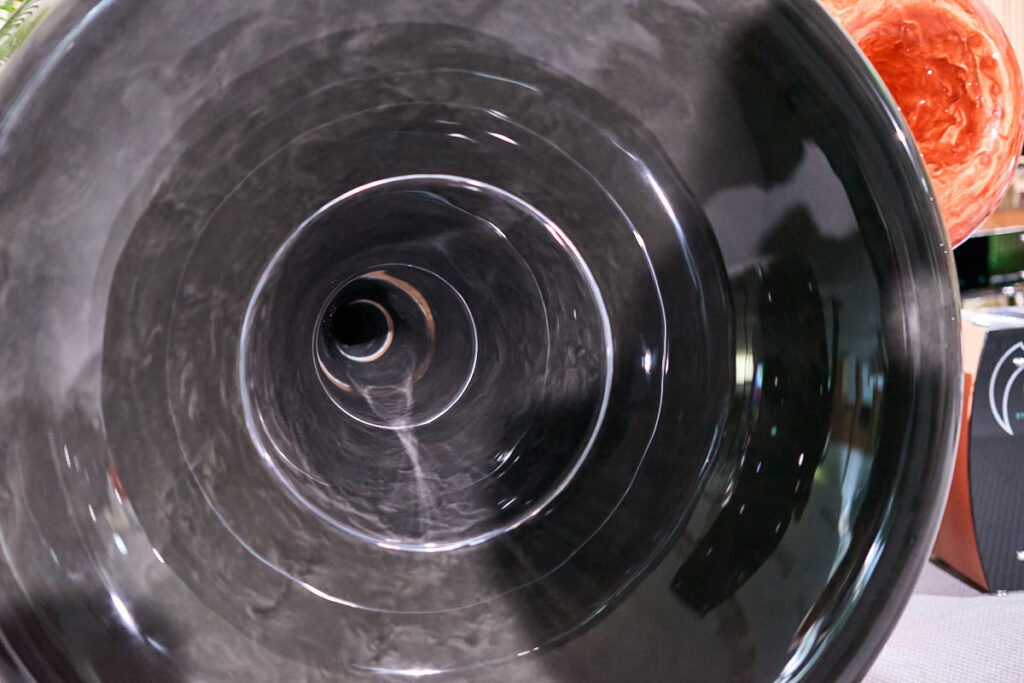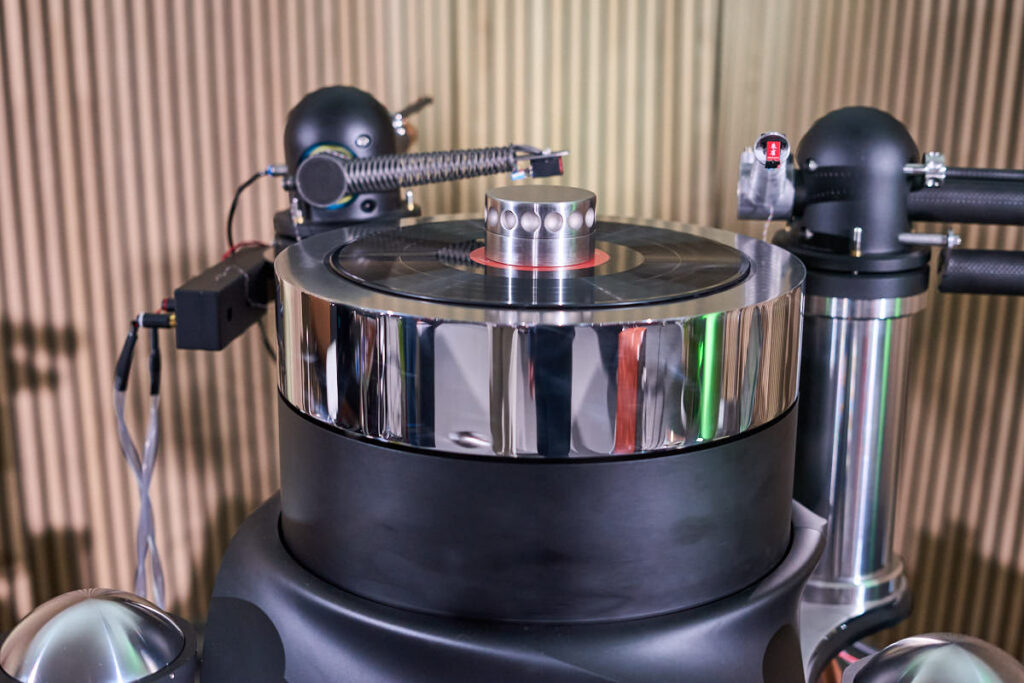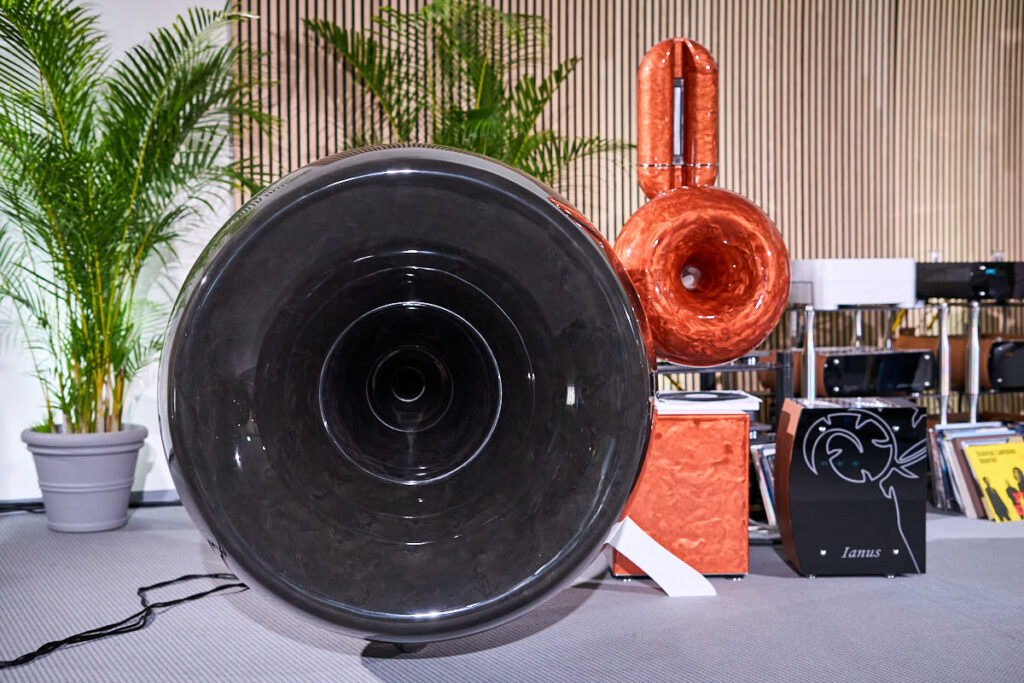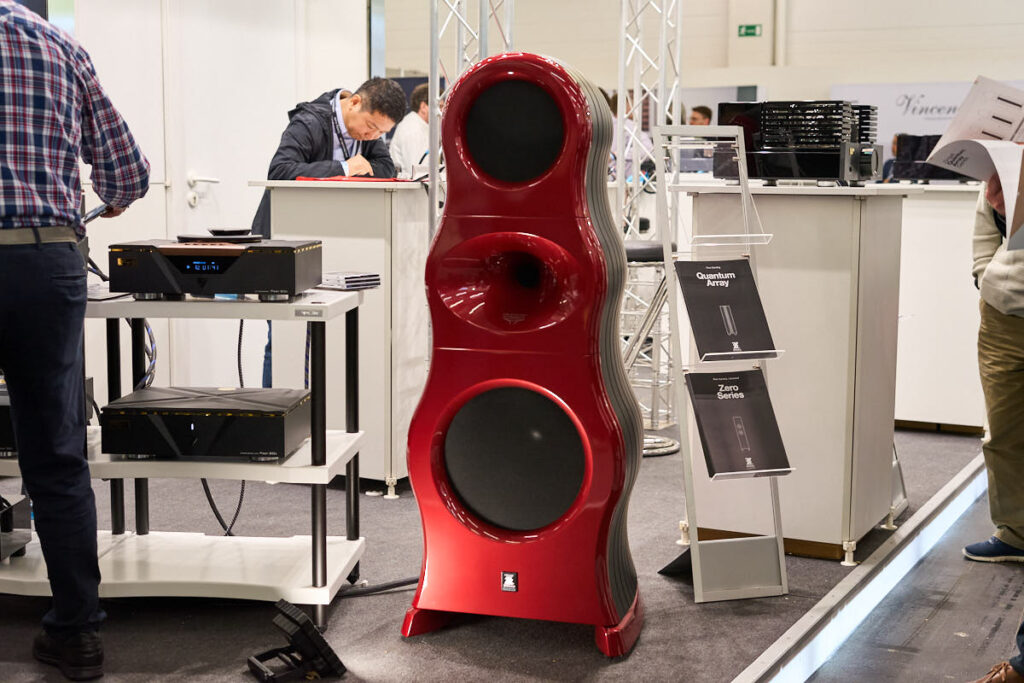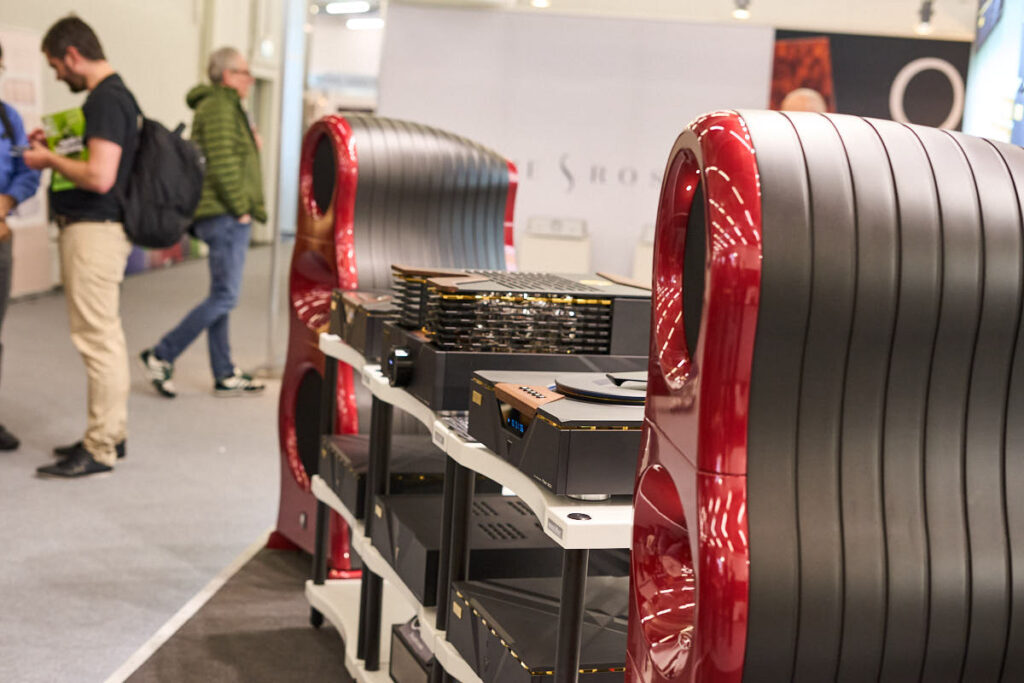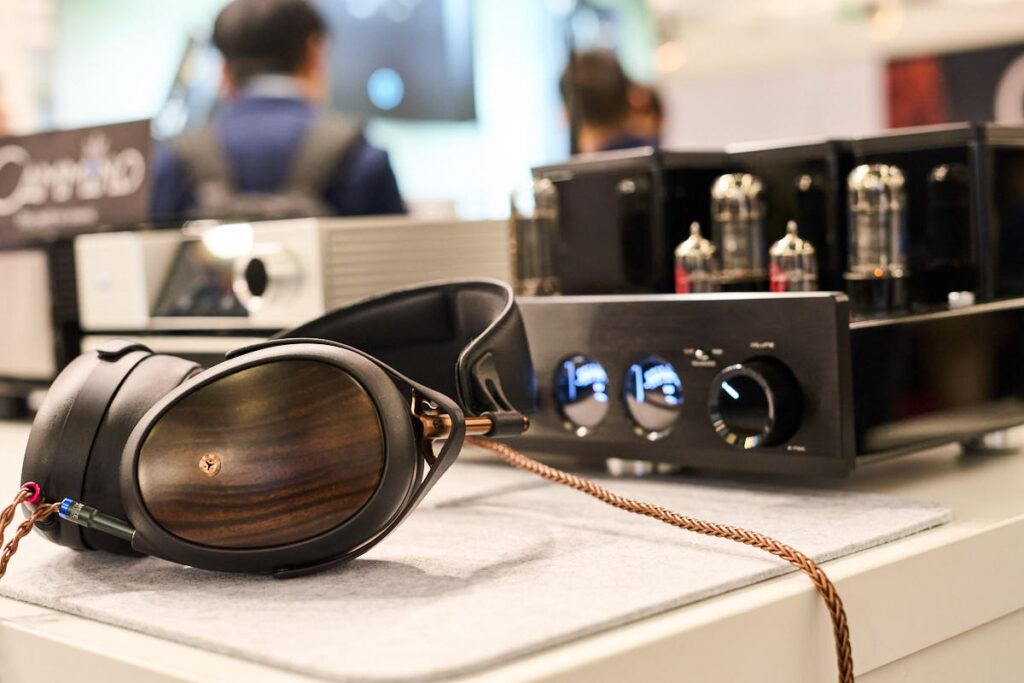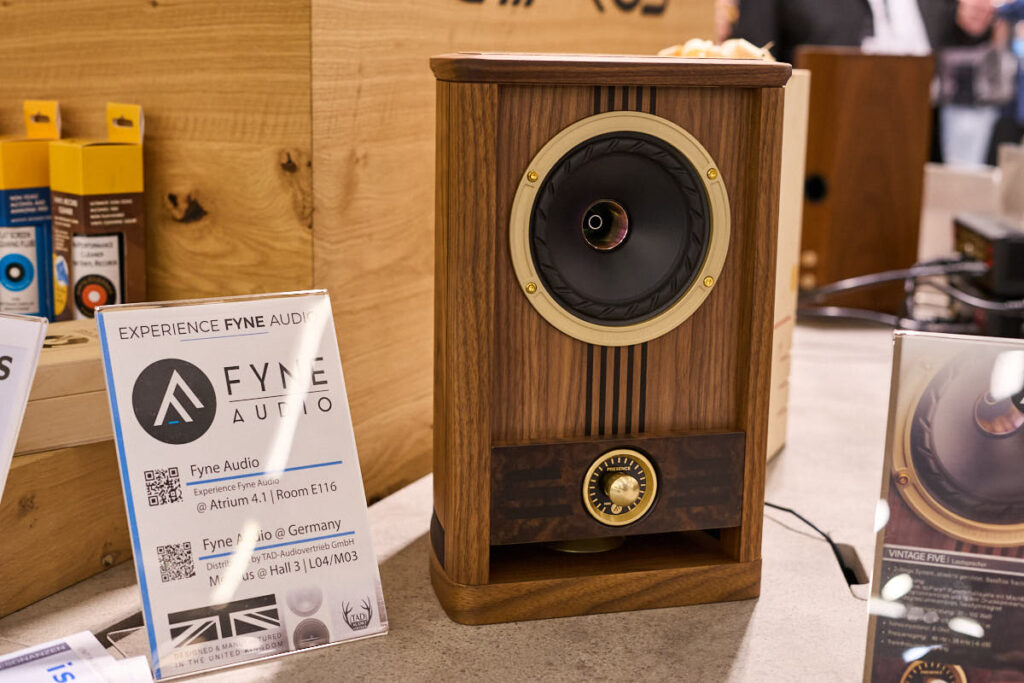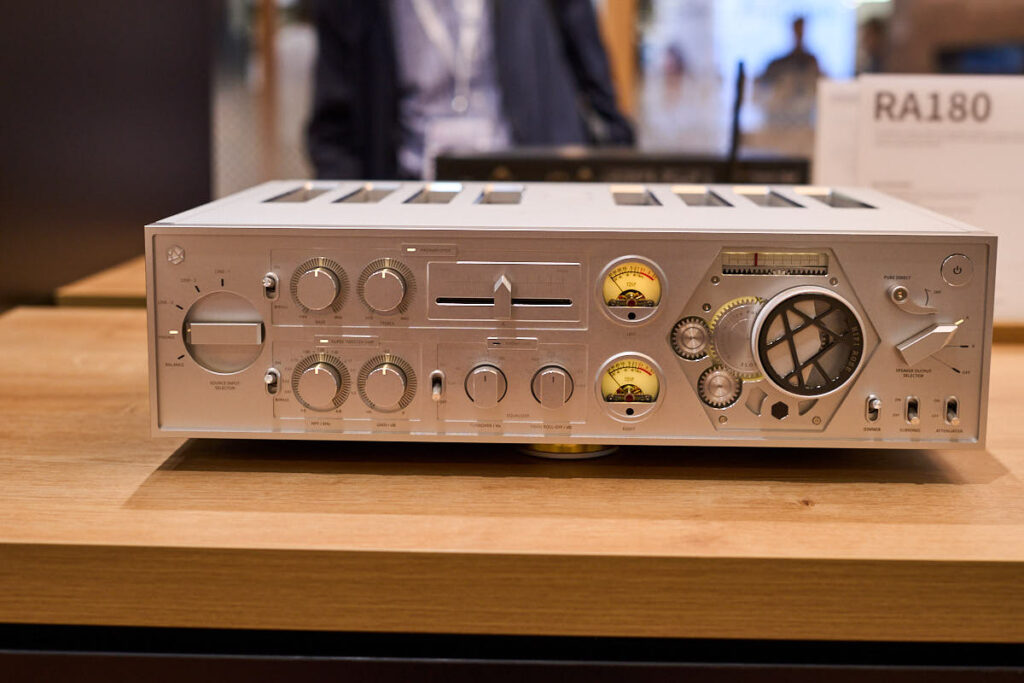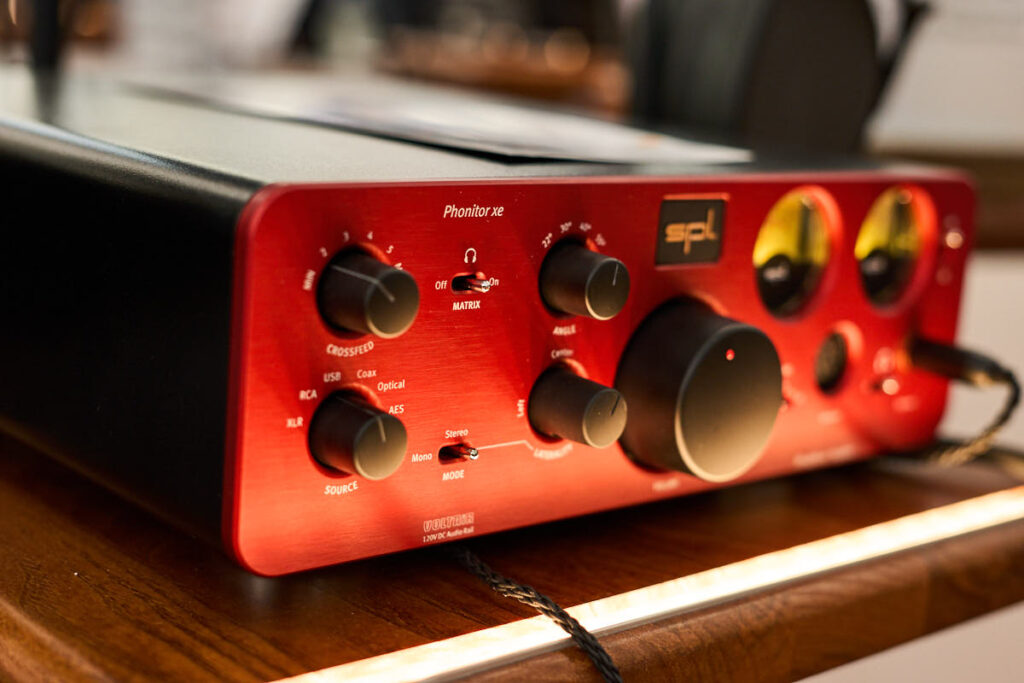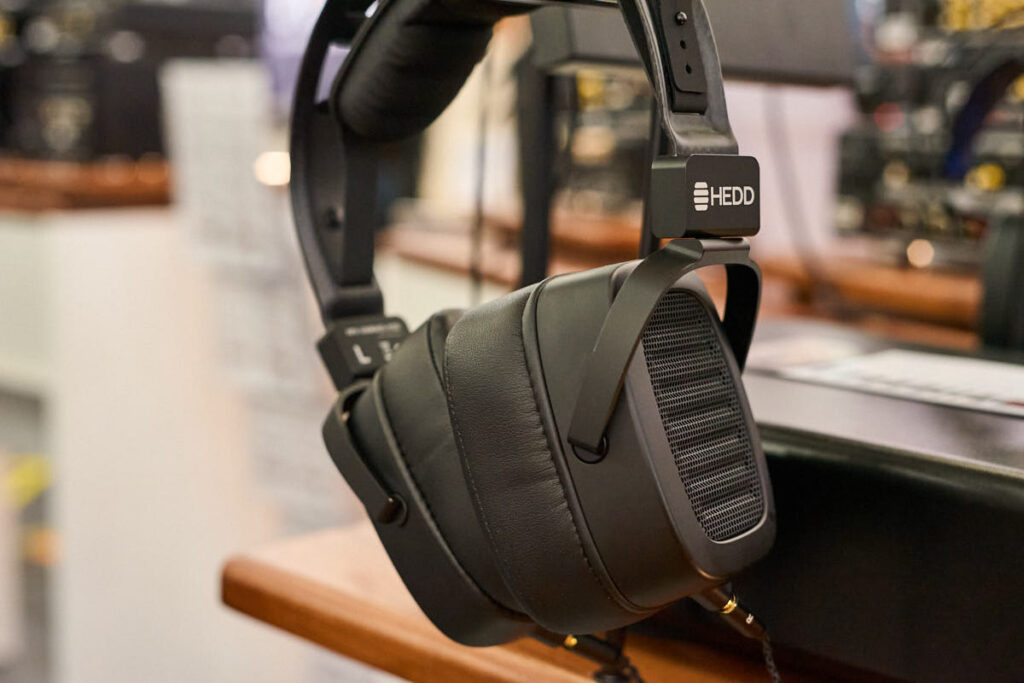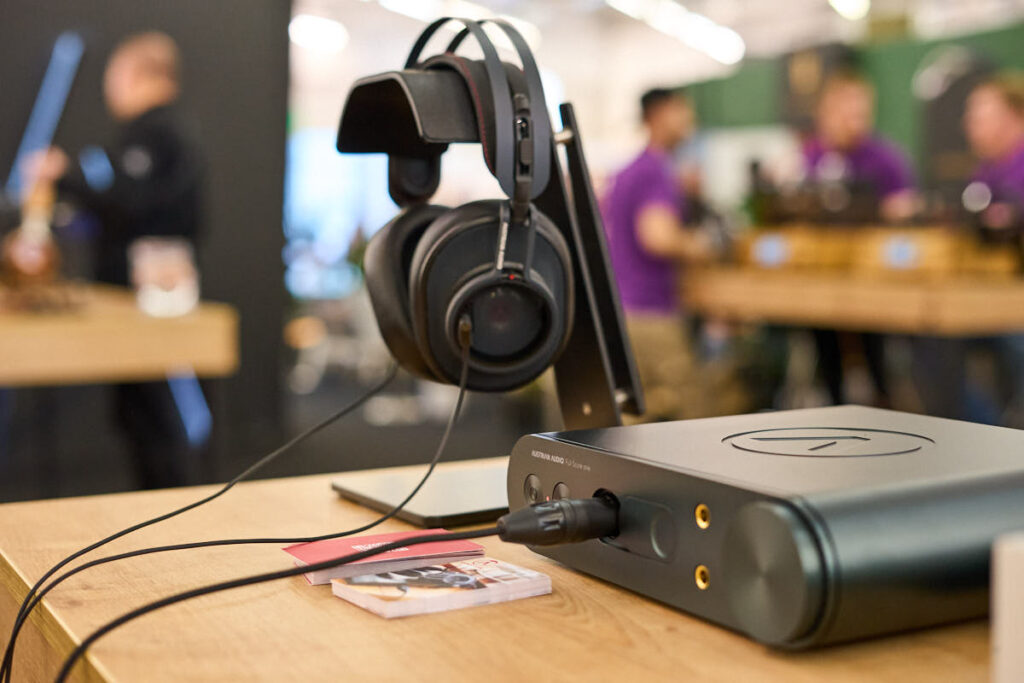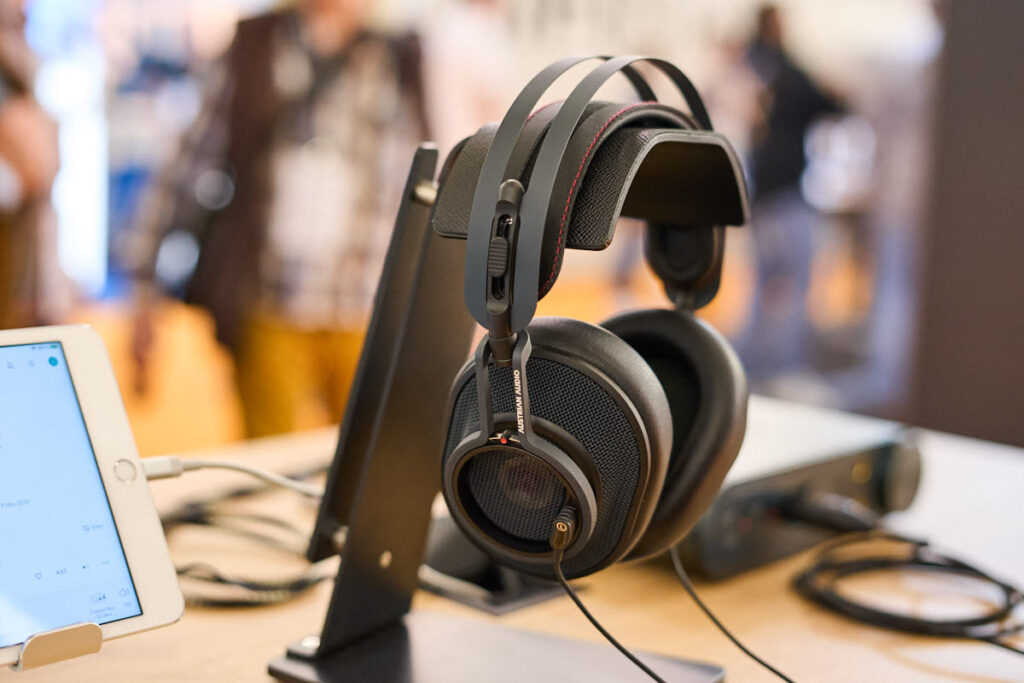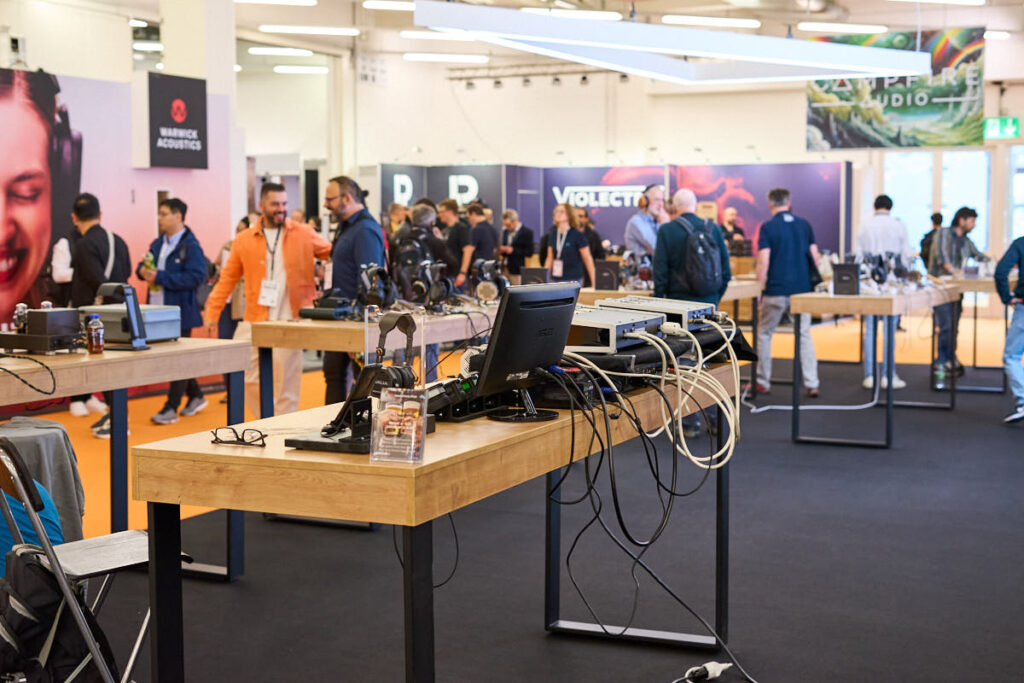A tour of the Munich HIGH END gave us the opportunity to put a dozen speakers to the diversity test.
Diversity. Usually a woke trigger word – which the HIGH END Society apparently doesn’t want to be understood in the current social context at all, but rather to simply refer to various audiophile concepts. Well then: If you don’t have a diverse audience in mind, then the devices will have to pull the coals out of the semantic fire. This should then be put to the test over the course of four days, whereby we want to take a look at twelve newly presented loudspeakers. Generally speaking, it should be noted that the overall number of premieres remained manageable, with many having been launched in 2022 or 2023, or being upgrades or downgrades of existing models. A phenomenon that is certainly to be welcomed, especially from a sustainability perspective, even if one or two dealers have already voiced their displeasure that the industry is increasingly being sacrificed on the altar of eco-friendliness. Well, I guess we’ll chalk up narrow-minded views to be a part of diversity as well. But now into the fray!
Let’s start with the Jubilee line from Backes & Müller, which was presented exclusively in Munich to mark the company’s 50th anniversary. The new development cleverly reflected the change in room aesthetics that now characterizes many living rooms, namely away from heavy upholstered furniture, wall units and thick carpets and instead towards a more minimalist interior, which of course brings with it its own acoustic problems. Accordingly, the motto of the press presentation was “Small speakers for large rooms”, where the speakers, designed with controlled directivity in mind, impressed both visually and sonically with a focused and, above all, precise sound in the bass range.
There was also an impressive new development to marvel at in the room directly next door at Avantgarde Akustik, as the company had been aiming to close the gap between the Duo and Trio models for some time. Equipped with a bright orange horn, the remake of the legendary Mezzo not only showed courage in terms of diversity in color, but also took everything that is expected of good horn loudspeakers to the extreme: Dynamics to no end, liveliness and speed plus transparency that can hardly be surpassed. Thanks to the specially redesigned bass reflex system, even the low frequencies were never a problem during the demonstration. After a dizzying reproduction of various HIGH-END trade fair hits, it was quickly agreed that instead of the name “Mezzo”, “Ultra” might have been more appropriate.
Let’s stay a little longer with the frequently represented horn concepts and turn our attention to a HIGH-END returnee. For many years, Acapella had made itself at home in the 70s charm of the Marriot Hotel at hifideluxe, and this year dared to make the leap back to the HIGH END, renting a somewhat exquisite space away from the hustle and bustle in one of the conference rooms in the foyer area. Even if the demo music came across as quite dignified, I have to concede that in terms of homogeneity, fidelity and dynamics, the Duisburg horn specialists with their Hyperion reference model, which transcends standardized room sizes, might just presented the ultimate in what is achievable in audiophile terms. The term “great show” suddenly became directly tangible here, both visually and sonically.
Unfortunately, the corners that demonstrated at least a hint of target group diversity were rather sparse and sometimes hard to find, although the direct contrast to Acapella was only a few steps away in the lower halls. The prize for the biggest head-turner for young listeners certainly went to the Nordic Hi-Fi cooperation stand, especially the phenomenally fun speaker from Vestlyd sporting the motto “Live Louder”. The mid-sized speakers performed like a large PA speaker, never sounding reverberant or hollow, but boasting brutal bass and unlimited dynamics, which made sure that the electronic sound festival they were reproducing was the surprise effect in Munich par excellence. More from Vestlyd, and things should work out between Gen Z at the HIGH END … if that’s actually whom they want to attract, that is.
After this excursion into the depths of the youth craze, we soon return to the realm of superlatives, which the Munich trade fair features en masse in its program every year. Of particular note here is certainly “Charlemagne”, the titanic reference loudspeaker from Lyravox, which arrived in Munich fresh from the Hamburg development department and featured half a dozen preamplifiers between the two ceiling-high speakers – anything but a show effect, but in fact an inherent part of the overall concept. Charlemagne is the first fully active speaker that makes it possible to fully incorporate the customer’s power amplifier wishes. The power amplifier has the voice coil of the respective chassis directly at its fingertips, so to speak, without any crossover parts in between, making it possible to control the treble range with a tube amplifier, the mid-range with a transistor amplifier and the bass range with a Class D amplifier. On request, the customer can also use power amplifiers supplied by Lyravox. Oh yes – Charlemagne is indeed big and weighs a whopping 360 kilograms, so it’s not suited for the small attic room. And as for the sound: the last time I was able to hear the electronic bass of James Blake’s very special song creations down to such abyssal depths was at his live performance at Berghain in Berlin. So be careful with your neighbors before you flirt with the idea of bringing the Hamburg avant-garde of loudspeaker construction into your home.
Since we were looking for diversity, a little retro was on the agenda. Before we could devote ourselves to the newly optimized classic Quad ESL at the IAG, we were surprised by an absolute novelty at the HIGH END in the next room: a DIY kit made by Wharfedale. Drivers, crossovers, cables – everything is included, only the cabinet remains to be cobbled together by the hobbyist on his Black+Decker workbench at home, and just like that, the Wharfedale designed by … (insert your name here) is all done.
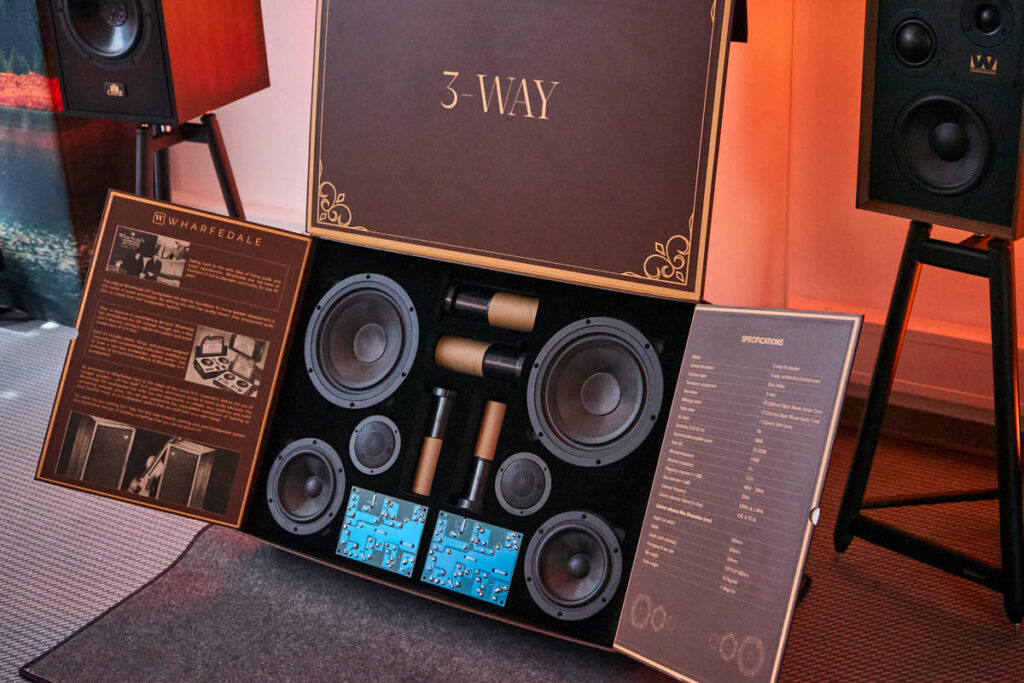
And in this age of diversity, the whole thing is of course available as a two- or three-way kit. However, as we are blessed with all thumbs, Quads ESL-2912X were the order of the day, which were just in the middle of throwing Brucknerian brass attacks into the room with great verve. Compared to the predecessor, let alone the original model, the new coil material and the greater rigidity of the frame could be heard immediately, which resulted in an incredibly stable sound and, for an electrostat, almost brute dynamics, especially with Bruckner. In this way, a traditional concept can very well be brought into the 21st century.
One could now ponder whether the retro and remake trend that can be observed in several places is a sign of unimaginativeness and a lack of innovative drive or rather just a return to the unmistakable qualities of past eras, which can now show off their capabilities in a new and better way using current materials and digital measurement technology. But such questions are ultimately pointless, at least when the revised classic is as convincing in terms of sound and appearance as Audiovector’s Trapeze Reimagined, with which the Danish loudspeaker experts are celebrating 45 years of company history. They are particularly proud of the AMT tweeter used, which is modeled exactly after Oscar Heil’s original concept. In combination with the twelve-inch bass driver and the five-inch midrange chassis, the result is a wonderfully homogeneous sound image, a little laid back perhaps, but without the small imbalances that characterize so many speakers from 1979, the year they were created. The three-stage adjustment of the damping characteristic is very convenient and a technical highlight of the remastered Trapeze, allowing divergent amp concepts from tube to Class D to form perfect matches with the speaker. It really makes you ask yourself: Why hasn’t this been standard since ages ago? In any case, the classic with the “skewed” cabinet was one of the speakers in Munich that guaranteed visual and sonic pleasure.
Using buzzwords from social, sociological and economic discourse and implant them in a technical environment appears to be en vogue in high-end circles these days. Alongside “diversity”, the phrase “trickle-down” is suddenly all the rage. The trickle-down effect originally describes the theory according to which the increase in income experienced by the rich in a society gradually trickles down to the middle classes and the poorer members of society. What remains questionable in economics, however, seems to work like a charm in Dali’s Rubikore series. Trickle-down is understood to mean making the major technical innovations of the Kore and Epikore flagships available for smaller models too. And indeed, anyone who has heard the two large models will easily recognize a typical family sound that comes surprisingly close to the two reference models, but of course only as far as the physical limits of the smaller cabinets and chassis allow. But it’s nice that Dali shows that the idea of trickle-down can work, at least in the technical area, provided that you have the necessary know-how on board.
Let’s stay in the realm of infallible know-how for a little longer. If there’s one company that you can’t lead down the garden path, then it’s certainly Burmester. And yet even such a sophisticated and stable company can still reinvent itself in parts. This is the case with the BX100 floorstanding speaker, which is positioned between the B and BC series. Ok, in terms of sound, it was everything you would expect from Burmester – and maybe even a little more: it plays precisely to the point, the sound is tight and yet springy; anyone expecting coloration or even sounding will unfortunately have to look elsewhere. So far so good and familiar, but Burmester can also do lifestyle and, above all, color. Despite its imposing size, the BX100 somehow appears delicate and in no way obtrusive and is available in a whole range of colors. In view of the rather dignified and sometimes heavy-set cabinet designs of many competitors, Burmester’s BX100 seems a little cheeky and provocative. But what is really new with Burmester is the possibility of individualization. The modular concept of the BX100 makes it possible to choose side panels or fabric covers to suit your own taste. Berlin has evidently discovered the signs of the times: in the high-end sector, the emphasis is not necessarily on massive altars, but on aesthetic diversity. And if you want something even more individualistic, you can have the speakers in the Bespoke range designed directly by artists; so a visit to Burmester this year was a bit like a visit to a gallery. This is how high-end should work in the 21st century.
Want even more color? Karl-Heinz Fink’s latest Epos model also came in spring-like colorfulness and matched the merry month of May in a chic lime green. The third of the Epos remakes is now the first floorstanding speaker in the line. The ES-28N comes in a classic three-way design and is a logical upgrade of its smaller predecessors, the ES-14N and ES-7N. Karl-Heinz Fink’s concept for the contemporary revival of the English classic series immediately reveals Fink’s perfection gene. Especially with the new ES-28N, the unique and in some ways rather peculiar sound aesthetics of the original namesake are pushed far into the background. And if the Epos by Fink can do one thing, then it’s rock’n’roll, which in turn sets them apart from some much more expensive competitors. The demonstration room of the Klaassen sales department was hence a safe bet if you wanted to blow all the pent-up “audiophile” crooning out of your head. But don’t let this give you a one-sided impression of the Epos – the loudspeaker also impressed with classical music, at least in combination with the Canor amps playing there.
For one of the most interesting new presentations, however, you had to put your feet outside the hallowed halls of the MOC and make the short trip to the cool Motorworld, whose stylish industrial design attracted a number of manufacturers for the first time this year. The way to the Kii Seven, which was playing here for the first time, was a bit of a scavenger hunt through the winding corridors, galleries and bridges of Motorworld, but this was anything but a reason to complain due to the breathtaking views of the luxury and classic cars located there. The Zeppelin Lounge, made entirely of concrete and glass, was actually the ideal habitat for the almost dainty Kii Seven, as it has a controlled cardioid dispersion pattern, which reduces unwanted room resonances in acoustically problematic listening rooms. As a result, there was no annoying reverberation or intermodulating waves to be heard, all problems that should have been caused by the hard, bare room.
Instead, bone-dry and abyssal bass that one would not have expected from the tiny speakers. Even though the Kii Seven worked well in the Zeppelin Lounge with its estimated 50 square meters, it makes sense to use it in rooms with an area of less than 30, possibly even less than 25 square meters in order to get the most out of it. In addition to the formidable sound quality, the fully active Kii Seven is also a complete all-in-one system that even comes with a streaming module on board. I’ll go out on a limb: even if boomers and the moneyed Generation X may frown at such all-encompassing DSP and streaming concepts, the future belongs to them and Gen Z will take care of this without compromise.
However, as we all have a hidden nostalgic streak deep in our hearts, at the end of our little tour of the trade fair we would like to mention the secret favorite of several members of the editorial team, which none of us had previously had on our radar. The French amplifier specialists from Advance, who are known for their more than reasonable price-performance ratio, even within an affordable budget, were demonstrating loudspeakers from the equally French brand Bellame, which seemed a little strange and strongly reminiscent of the sixties. Of course, this was not the end of the line in terms of transparency and dynamics, but it was quickly agreed that the involving character, which lost none of its attraction effect even at low volumes, the sonorous timbre and the unusual design triggered a strong emotional reflex of wanting to have it. Rarely has Esbjörn Svenson’s slow-motion track “From Gagarin’s Points Of View” been heard more beautifully and full-bodied. The perfect loudspeaker to completely switch off your head, send all rationalizing and dialectically discussing high-end thoughts into the desert and take a full musical bath.
And so, after four days and a focused search, it is fair to say that the selection of gear on show certainly met the formulated diversity requirements: passive alongside semi-active or fully active systems, speakers ranging from pocket-sized to room-blasting dimensions, digitally controlled concepts alongside classic full-range speakers, solitary appearances alongside freakishly colorful cabinets, from mid three-digit to high six-digit price points – there was actually nothing in Munich that wasn’t there. Now that this challenge has succeeded, the HIGH END Society could soon do something for a more diverse audience, which would have to be more than just setting up a coy gaming zone where stressed-out fathers can leave their pubescent offspring. But, as we all know, hope dies last.
